
The Most Powerful Idea in the World: A Story of Steam, Industry, and Invention
by
William Rosen
Published 31 May 2010
That is not, however, the case with the flying shuttle itself, which indisputably revolutionized the craft of weaving. It didn’t do so by making the skills of the artisan redundant. Quite the opposite, in fact. Kay’s flying shuttle made it possible for weavers to produce a wider product, which they called “broadloom,” but doing so was demanding. Weaving requires that the weft threads be under constant tension in order to make certain that each one is precisely the same length as its predecessor; slack is the enemy of a properly woven cloth. Using a flying shuttle to carry weft threads through the warp made it possible to weave a far wider bolt of cloth, but the required momentum introduced the possibility of a rebound, and thereby a slack thread.
…
More significantly, in the same year, Kay patented a new shuttle that was initially known as a wheel shuttle, then a spring shuttle; no one called it a flying shuttle until 1780. Before Kay’s invention, looms had been operated by weavers passing the shuttle, which carried the weft, through the warp threads by hand. As a result, any loomed cloth was going to be about the width of a human wingspan. By putting the shuttle on wheels and attaching cords to either end, Kay’s invention permitted it to “fly” by pulling the cord in either direction. It would take another fifty years for its use to become widespread, but despite its relatively leisurely adoption, the flying shuttle made Kay, if not wealthy, then at least prosperous; in 1738, he described his profession as that of “inventor,” but by 1745, had promoted himself to the status of “gentleman.”
…
For nearly fifteen years, he was a maker of wigs, recalling, “I was a barber,31 but I have left it off, and I and another are going up and down the country buying hair and can make more of it.” No doubt he found the trade in hair pleasant enough, at least until 1767, when he met, in a pub, an itinerant clockmaker with the confusing (to historians, anyway) name of John Kay. This John Kay had nothing to do with flying shuttles, but he did have an interest in the other side of clothmaking, and he boasted to his new drinking companion, just as he collapsed over his last drink, that he could build a machine that would spin cotton on rollers. As both men later recalled,32 Kay woke up to find the onetime wig maker looming over him demanding a small model as proof of the clockmaker’s boasts.
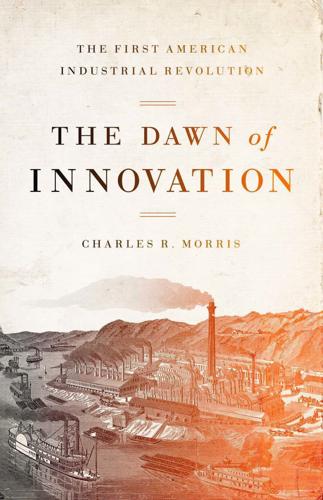
The Dawn of Innovation: The First American Industrial Revolution
by
Charles R. Morris
Published 1 Jan 2012
Arkwright also had the insight to hire clockmakers to build his machines, for they had the most contemporary experience with precision gearing. The foot-treadle, flying shuttle, heddle loom achieved very high manual production rates. At each push of the treadle, the heddles raised and lowered alternate warp (long) threads, creating a shed to pass the weft (cross) thread through, and the batten pushed the new weft thread firmly into place. The flying shuttle allowed the operator to remain seated and very rapidly pull the weft threads back and forth through the alternating sheds. Mechanized looms worked exactly the same way, but at much higher rates of speed.
…
Arkwright’s second major mill got most of it right and was the prototype for a new British industry. Mechanization in the textile industry was an alternating race between spinning and weaving. The fly-shuttle foot-pedal heddle loom was a highly rationalized machine that quickly pressured the capacity of the hand-spinning industry, forcing the pace of mechanization. Mechanized spinning shifted the pressure back to weaving. The fly-shuttle loom almost cried out for mechanization; the challenge lay in tuning the pressures on the threads to produce acceptable cloth while minimizing breakage, the way a skilled human did by feel.
…
Eugénie, Empress Euler, Leonard Evans, Oliver Factories block-making machines and mass-production shipbuilding water-powered Fair trade Farming Feeling piece(fig.) Ferguson, Niall Ferris wheel Fillmore, Millard Finance prebellum Finney, Charles Grandison Fitch, Charles Flintlocks(fig.)(fig.) Flying shuttle(fig.) Fogel, Robert Foods Foot, Adonijah Forbes, James Bennett Ford Ford, Henry: on meatpacking Forging engine(fig.) Ft. Erie Fourdrinier paper-making machinery Francis, James B. Franklin Institute Free trade Freedman’s Bureau, epidemics and French, Daniel Frick, Henry Fukuyama, Francis Fulton, Robert Furnaces Furniture, production of Galileo Gamble, James Garland, Hamlin Gary, Elbert Gauges parts(fig.)
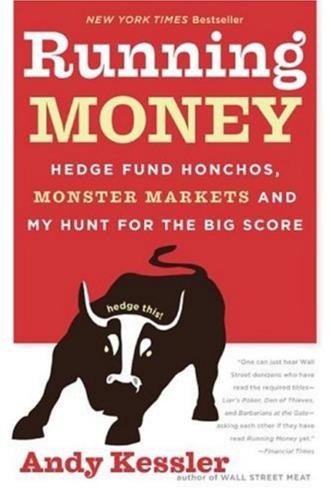
Running Money
by
Andy Kessler
Published 4 Jun 2007
American Indians had them, so did the Greeks and the Egyptians—everyone used looms to weave clothing. But while looms are very simple, they are extremely labor-intensive. This wasn’t a grandma whistling away process—a weaver must pay careful attention. In 1733, John Kay patented a wonderful device called the flying shuttle, and loom productivity popped. So much so that in 1755, a mob broke into John Kay’s house and destroyed one of his flying shuttle looms. While weaving got faster, making thread or yarn was still old-fashioned. Now weavers demanded more yarn of higher quality. Cheap cotton from the New World began to make inroads against itchy wool and even comfortable but expensive silk.
…
See Britain Enron, 290 Ethernet, 139, 190, 191 Exar, 208 exchange rates, 164, 165, 276 Extreme, 140 Fabless Semiconductor Association, 269–70 fabs (fabrication facilities), 91, 129–34, 199, 250, 251 factories. See manufacturing Faggin, Federico, 126 Fairchild Semiconductor, 101–3, 124 family offices, 109–10 Fidelity Investments (Fido), 11, 27, 30, 31 file sharing, 190 Fleet Bank conference (1999), 175–79, 188 Fleet Boston Robertson Stephens conference (2000), 217–20, 225 flying shuttle, 64 Forbes, 40, 195 Forbes ASAP, 195 Foundry, 140 Francis, Stu, 44 Full Service Network, 194 Fulton, Robert, 92 Index Gates, Bill, 121, 125, 126, 127, 258 GDP, 237, 274 GDS-II files, 252, 254 General Electric, 274 General Magic, 97–98, 142 General Motors, 172, 241, 243, 267, 269, 277 genomic sorting, 296 GeoCities, 213 George III, King, 51, 56 Ghana, 280, 281–83, 294, 295 gigabit companies, 139–40 Gilder, George, 183 Global Crossing, 183, 187, 290 GM.
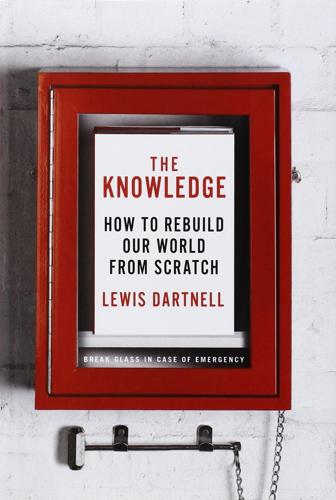
The Knowledge: How to Rebuild Our World From Scratch
by
Lewis Dartnell
Published 15 Apr 2014
All of this is hard to reproduce satisfactorily with rudimentary mechanisms. The key advance over the basic weaving loom that I described was the invention of the flying shuttle. The simplest way to transfer the weft yarn through the shed gap between raised and lowered warp fibers is by passing a reel of thread from one hand to the other across the loom. But this is a slow action, and also limits the breadth of the fabric to that which can be comfortably reached with your arms. The flying shuttle is a reel of thread encased within a heavy, boat-shaped block that is jerked by a string from side to side of the loom along a smooth runner, playing out weft as it races across.
…
S., vii, 10, 275 Encyclopédie (Diderot), 8, 19 energy and power, 15, 165–85 batteries for, see batteries consumption per person, 166 from fossil fuels, 31, 57–58, 105, 165, 166, 190 generation and distribution of, 178–85 mechanical, 166–74 solar, 13, 47 steam engine for, 170n, 172–73, 182, 197, 201, 277, 290–91 steam turbine for, 182–83, 185, 206–7 thermal, 104–9, 166, 172, 182 water turbine for, 180–82, 181 waterwheel for, 166–68, 167, 170, 171–72, 178–79, 180, 203, 213, 276 windmill for, 46, 169, 170, 171–72, 178–80, 179, 213 see also electricity generators Energy Return on Energy Invested (EROEI), 106n engines: diesel, 188, 190 gasoline, 187, 188 internal combustion, 201–6, 204, 208 steam, 170n, 172–73, 182, 197, 201 Enlightenment, 276 enzymes, 81–82 equinoxes, 259, 261, 265 ethanol, 43, 89, 91, 120, 158, 159, 189–90, 202, 206, 241 ether, 159, 163, 241 evolution, 279 explosives, 104, 110, 116, 118, 122, 235–38, 242, 247 fabrics, see textiles fats and oils, 112, 188 animal, 191 linseed, 219 saponification of, 84, 112–13, 114–15, 211–12 vegetable, 108–9, 188, 190 feather pen, 214 fermentation, 80, 84, 88, 90–91 ferrous sulfate, 241 fertilizers, 57, 58, 69, 70, 72, 73, 76, 77n, 110, 121, 237, 238, 247–48, 250, 278–79 manure, 61, 69, 70, 73–76, 237, 243, 247, 250 Feynman, Richard, 9–10 fire: starting, 34–35 using, 104–5, 123–24 fires, destructive, 28 firewood, 106, 165, 176 fishing, 198 flash paper, 238 flax, 96, 108, 211 Fleming, Alexander, 12, 162, 164 Florey, Howard, 163 flour, 39, 86, 87 flying shuttle, 101 food, 33, 38–41 canned, 40, 92, 291 cereal preparation, 86–91 cooking, 79–81, 124 growing, see agriculture poisoning from, 79–81, 84 pottery vessels for, 80–81, 95, 124–26 spoilage of, 80, 161, 163 food preservation, 80, 81–85, 91–95, 161 by canning, 92, 291 by drying, 82, 91–92 by fermenting, 80, 84 by pickling, 84, 89, 91–92, 118 by refrigeration, 93–95 by salting, 82–83, 91–92 by smoking, 83, 91–92 fool’s gold, 222 forceps, 149–50, 150 fore-and-aft rigging, 198–99 forests, 27, 30, 106 fossil fuels, 31, 57–58, 105, 165, 166, 190 Foucault’s pendulum, 256n Four Quartets (Eliot), 275 foxglove, 155 Frank, Pat, 165 fuels, 41–42, 119, 124 biofuels, 74–75, 119, 191, 206–7, 208 gasification and, 191–93, 192, 194 kerosene, 108–9 fungicide, 118 Gaia hypothesis, 7 Galápagos Islands, 272n galena, 222, 227 Galileo, 172 gallium, 234–35 galls, 214 iron gall ink, 213–14, 218–19 gangs, 21 gas, 165 biogas, 74–75 natural, 44, 173, 185, 191 gasification, 191–93, 192, 194 gasoline, 41, 120, 173, 188–189, 191, 202, 206 alcohol in, 189–90 gasoline engine, 187, 188 gelatin, 116, 161, 241–42 generators, see electricity generators germ theory, 160, 161n glass, 49, 110, 124, 138–44, 235n, 243, 249 lenses, 142–43, 161 mirrors, 240n production of, 138–40 recycling of, 140 windows, 140, 141 glassblowing, 140–41 global warming, 31–32, 45, 294 glue, 116 glycerol, 115–16, 190, 238 Golding, William, 35n golf courses, 47 Goražde, 48–49, 48 GPS navigation devices, 42 grains, 39 Gregorian calendar, 262 guano, 238, 248, 250 guayule, 194–95 guncotton, 238, 241 gunpowder, 112, 236–37, 276 Gutenberg, Johannes, 215, 217, 218, 219 Haber-Bosch process, 57, 232, 248–51 hand washing, 112, 148 harness, 196 Harrison, John, 272, 273 harrow, 62, 63, 195 health care, see medicine heart rate, 155, 156 heat, 105 in canning, 92 herbicides and pesticides, 57, 77n, 279 Hippocrates, 155 hoe, 60, 61 Homo sapiens, 293 horses, 195–98, 197 hourglass, 254–55 houses, 29 Hurricane Katrina, 20–21 hydrocarbons, 104, 108, 188, 249 hydrochloric acid, 121 hydrogen, 193, 232, 233 chloride, 121, 244n in Haber-Bosch process, 57, 232, 248–51 hydrolysis, 211–12 hypothesis, 288 I Am Legend (Matheson), 24 “I Am Legend” scenario, 24 incubators, 150 indigo, 115 inductor, 224–25 industrial chemistry, 242–51, 253, 278–79 Industrial Revolution, 15, 70, 96, 105, 171, 242–43, 276–78, 290 infectious diseases, 112, 147–48 influenzas, 147 ink, 213, 216, 218–20 India, 219 iron gall, 213–14, 218–19 insects, 29 internal combustion engine, 201–6, 204, 208 International Space Station, 30–31 Internet, 50 inverter, 48 iodine, 114, 158, 241 “I, Pencil” (Read), 4 iron, 130, 135–38, 241, 249, 277 cast, 136, 137, 276 disulfide, 222 gall ink, 213–14, 218–19 pig, 136–37 pyrite, 227 smelting, 135–36, 137 sulfate, 214 wrought, 276 Japan, 13 kerosene, 108–9 knowledge, 210, 277, 278, 279–80, 287 lactobacillus bacteria, 88 Laennec, René, 152 lampblack, 219 lamps: arc, 178 electric, 177–78 fluorescent, 142 light bulbs for, 142, 178, 180, 183, 227, 290 oil, 108–9, 184 language, 210 lard, 113, 115 Las Vegas, Nev., 45 latex, 194 lathe, 132–35, 134, 205, 206 latitude, 267–69, 270 lavender, 155 lead sulfide, 222 Leblanc, Nicolas, 244–45 Leeuwenhoek, Antoni Van, 160n legumes, 70, 71, 73, 248 lenses, 142–43, 161 Leonardo da Vinci, 97, 201, 213 light: electric, 177–78 see also lamps light bulbs, 142, 178, 180, 183, 227, 290 lignin, 211, 212 lime, 109–12, 115, 120, 139, 212 mortars, 126, 127–29 quicklime, 110–12, 139, 140, 233, 245 slaked (limewater), 111, 112, 115, 120, 127, 212, 237 limestone, 110, 111, 237, 245 linen, 96, 211 linseed oil, 219 liquified petroleum gas (LPG), 191 livestock, 69, 71–73, 146–47, 247 location, determining, 253–54, 265–74 compass for, 265–66, 276 latitude in, 267–69, 270 longitude in, 267–68, 270–71 sextant for, 269–70, 269, 273 lodestones, 265 London, 28 longitude, 267–68, 270–71 Lord of the Flies (Golding), 22, 35n Los Angeles, Calif., 45 Lovelock, James, 7–8 lye, 115, 116, 190 Mad Max, 2 “Mad Max” scenario, 24 Magellan, Ferdinand, 199 magnesium, 233 magnetism, 12 electromagnetism, 174, 176–77, 184, 220–25 magnetometer, 288 Maillard reaction, 79 maize (corn), 53–54, 66, 67, 84n, 86 malaria, 155, 160 Manhattan, 256n, 266–67, 268, 270 manure, 61, 69, 70, 73–76, 237, 243, 247, 250 materials, 103, 123–44 clay, 124–25 glass, see glass lime mortars, 126, 127–29 metals, see metals plastics, 49–50, 116, 118, 235n, 279 wood, see wood mathematics, 288 Matheson, Richard, 24 Mayan civilization, 145 McCarthy, Cormac, 2 McVeigh, Timothy, 250n measles, 147 measures and units, 287–88 barometer, 141, 144, 284–86 metric system, 282–84 for temperature, see temperature measurement meat, 67, 69, 73 preserving, 82 mechanization, loss of, 195–201, 197 medicine, 6, 144, 145–64 childbirth and neonatal care, 149–50 clinical trials in, 157 examination and diagnosis, 150–54 infectious diseases, 112, 147–48 microbiology, 160–64 surgery, 151, 155, 158–59 medicines, 6, 42–44, 154–57, 279 antibiotics, see antibiotics expiration dates on, 43–44 for pain relief, 155–57, 158–59 medieval Europe, 170–71, 275–76 Mendeleev, Dmitri, 234–35 menthol, 155–56 mercury, 286 Mesopotamia, 138 metals, 49, 104, 110, 130–38 alloys, 130, 195, 235n aluminum, 115n, 132, 133, 174n, 232–33 iron, see iron smelting, 135–36, 137, 140, 249 steel, 29, 49, 124, 130–32, 136–38, 277 welding, 131–32 metalworking, 132–35, 133, 134, 195, 200 methane, 74, 191, 193, 249 methanol, 118–19, 190 metric system, 282–84 microbiology, 160–64 microorganisms, 80, 81, 279, 291 microphone, 225–26 microscope, 141, 143–44, 160–61, 288 milk, 39, 84, 85, 92 Millennium Seed Bank, 54 Miller, Walter M., Jr., 123 millet, 66, 67, 86 mill pond, 168 millstone, 86, 95 mirror, 240n Moldova, 3n morphine, 156 Morse code, 221 mortars, lime, 126, 127–29 motor, car, 173 Napoleon I, Emperor, 282n Napoleon III, Emperor, 233n nature, 279, 287 urban spaces reclaimed by, 26–30, 27, 106 navigation, see location, determining New Orleans, La., 20–21 New York City, 256n, 266–67, 268, 270 nitrates, 237, 238, 243, 247, 248 nitric acid, 121–22, 159, 238, 247, 250 nitrocellulose, 238 nitrogen, 69, 70, 72, 73, 75, 88, 115, 178, 238, 247–51 in Haber-Bosch process, 57, 232, 248–51 nitroglycerin, 238 nitrous oxide, 159, 250 Nobel, Alfred, 238 north pole, 263–65, 264 North Star (Polaris), 263, 269 nuclear war, 22 oats, 60, 66, 67 Off-Gridders, 48 oil, crude, 116, 119–20, 189, 279 oil lamps, 108–9, 184 oil paints, 219 oils, see fats and oils Oklahoma City bombing, 250n opium, 156 oral rehydration therapy (ORT), 148 Oryx and Crake (Atwood), 103 oscillator, 257–58, 271 oscillator circuit, 224–25 oxen, 195, 196 oxidizing agents (oxidants), 104, 236, 238 oxygen, 232, 233, 279 explosives and, 236 “Ozymandias” (Shelley), 209 pain relief, 155–57, 158–59 paints, 118 oil, 219 pandemic, 23 Pantheon, 29 paper, 210–13, 215, 218, 232, 238, 243, 276 pasteurization, 92 pathology, 154 pellagra, 84n Pelton turbine, 181, 181, 182 pen, 214 pendulum, 283 clock, 257–59, 271, 289–90 Foucault’s, 256n penicillin, 12, 162, 163–64 periodic table, 234–35, 242 pesticides and herbicides, 57, 77n, 279 Petri dishes, 161, 162 pharmaceutical compounds, see medicines phones, 3–4, 13, 50–51 phosphorus, 57, 75–76, 110 photography, 104, 114, 122, 235, 238, 239–42 observing stars and, 263, 265 pickling, 84, 89, 91–92, 118 piezoelectric crystal, 226 piston, 173 pitch, 119 plastic bottles, for solar water disinfection, 37–38 plastics, 49–50, 116, 118, 235n, 279 plate tectonics, 279 plow, 58, 60–61, 62, 63, 195 Polaris, 263, 269 polyethylene terephthalate (PET), 50 poppy, 156 population, 24–25 potash, 17, 76, 114, 115, 120, 139, 212, 233, 234, 237, 243–44, 249 potassium, 57, 75, 76, 114, 233, 234 bitartrate, 226 carbonate, 114 hydroxide, 115, 190, 249 nitrate (saltpeter), 237–38, 248, 250 sodium tartrate, 226 potatoes, 60, 65, 67 potter’s wheel, 125, 203, 206 pottery vessels, 80–81, 95, 124–26 POW radios in World War II, 226-27 power, see energy and power Preppers, 21, 33, 48 pressure gauge, 284–85 printing, 214–20, 276 printing press, 12–13, 215–19 prisons, 21–22 propane, 191 pyrites, 121 pyrolysis, 116–20, 117, 192 quicklime (calcium oxide), 110–12, 139, 140, 233, 245 quinine, 155 rack and pinion mechanism, 205 radio, 51, 221–29 amplitude modulation in, 223 earphones or speakers for, 225–26, 227 location determination and, 273 microphone for, 225–26 oscillating circuit in, 224–25 receiver for, 222, 225, 228 transmitter for, 222–23, 225 radioactivity, 279 railways, 188 rapeseed, 60, 109, 171, 190 razor blade rectifier, 227, 228 Read, Leonard E., 4 reaper, 69 rectifier, 227, 230n razor blade, 227, 228 recycling, 49–50 refrigerators, 93–95 Renaissance, 11, 275, 276 rennin, 85 repopulation, 24–25 resin, 219–20 resonance, 224 rhinovirus, 147 rice, 65–66, 66, 67 Road, The (McCarthy), 2 roads, 187–88 Robinson Crusoe (Defoe), 33 Rochelle salt, 226 Roman Empire, 11 Röntgen, Wilhelm, 153 rubber, 193–95 “Ruin, The,” 79 rye, 60, 66, 67, 86 sailing ships, 198–200 salicylic acid, 157 Salon of 1767 (Diderot), 253 salt (sodium chloride), 82, 113, 121, 232, 240, 244, 245, 247 in food preservation, 82–83, 91–92 in oral rehydration therapy, 148 producing, 83 saltpeter, 237–38, 248, 250 saltwort, 244 sand, 138–39, 140, 144 saponification, 84, 112–13, 114–15, 211–12 satellites, 42, 239n sawmill, 171, 206 scales, balance, 283, 284 science, 275–91 experimentation in, 287–89 measures and units in, see measures and units as process, 289 roots of, 280–81 socioeconomic environment and, 277–78 technology and, 289–91 tools of, 281–86, 287 scientific method, 278–81, 286–89 scientific revolution, 259, 276 screw press, 218 scurvy, 157n scythe, 61, 67, 68 sea level, 31, 45 seaweed, 114 seed drill, 62, 64, 195 seismometer, 287 sewage systems, 57 sewage treatment, 75 sextant, 269–70, 269, 273 Shampoo Planet (Coupland), 231 Shelley, Percy Bysshe, 209 shelter, 33, 34–35 ships, 198–200 shipwrecks, 30 Shirky, Clay, 9 sickle, 61, 67, 68 silica, 138, 139–40 silver chloride, 240 silver nitrate, 240 Sirius, 261 smallpox, 147 smelting, 135–36, 137, 140, 249 soap, 112–16, 190, 243 saponification in, 84, 112–13, 114–15, 211–12 social contract, 20–22 soda, 243–47, 246 ash (sodium carbonate), 114, 118, 120, 139, 140, 212, 226, 243, 244, 245 caustic (sodium hydroxide), 115, 190, 212, 232, 233, 234, 243, 244, 244n sodium, 233, 234 acetate, 118 bicarbonate, 245 carbonate (soda ash), 114, 118, 120, 139, 140, 212, 226, 243, 244, 245 chloride, see salt hydroxide (caustic soda), 115, 190, 212, 232, 233, 234, 243, 244, 244n hypochlorite, 212 thiosulfate, 240 soil, 57, 58–64, 70–72, 76, 110 solar power, 13, 47 solar water disinfection (SODIS), 37–38 solstices, 255–56, 261 Solvay process, 245–47, 246 solvents, 119 soot, 219 sorghum, 66, 67 south pole, 264 Soviet Union, 3n, 198n speakers, 225–26 spectrometer, 287 spinning, 96–97, 277 spinning wheel, 97, 97 Staphylococcus, 162 stars, 239n, 261, 262, 263–65, 269, 270 Barnard’s, 262–63, 263 constellations of, 261 latitude and, 268 North (Polaris), 263, 269 steam engine, 170n, 172–73, 182, 197, 201, 277, 290–91 steampunk, 15 steam turbine, 182–83, 185, 206–7 steel, 29, 49, 124, 130–32, 136–38, 277 steering wheel, 205 Stephens, John Lloyd, 145 stereotype, 218n stethoscope, 152 Stonehenge, 256 strontium, 233 substances, 102, 103–22 acids, 82, 84, 92, 104, 113, 116, 120–22 alkalis, 82, 84, 104, 113, 114, 116, 120, 212, 234, 243 lime, see lime soap, see soap for thermal energy, 104–9 wood pyrolysis, 116–20, 117, 192 sugar(s), 82, 89, 90, 190, 240n in oral rehydration therapy, 148 sulfur dioxide, 240 sulfuric acid, 120–22, 159, 214, 238, 241 sulfuryl chloride, 121 Sun, 269, 270 coronal mass ejection from, 22, 24 equinoxes and, 259 proving Earth’s orbit around, 260n solstices and, 255–56 sundial, 256–57, 259–60, 270–71 superglue, 42–43 surgery, 151, 155, 158–59 Svalbard Global Seed Vault, 55, 55 tallow, 191 tea tree oil, 155 technology, 289–91 telegraph, 220–21 telescope, 140, 143, 161 temperature measurement, 285–86 thermometer for, 141, 144, 152, 285–86, 287, 288 Texas City, 250n textiles, 212–13, 232, 276, 277 for clothing, 98–101 linen, 96, 211 spinning yarn for, 96–97, 277 spinning wheel for, 97, 97 weaving, 98, 277 weaving loom for, 98–100, 99, 101–2 thermal energy, 104–9, 166, 172, 182 thermionic emission, 228–29 thermometer, 141, 144, 152, 285–86, 287, 288 Three Gorges dam, 180 threshing, 68 threshing flail, 61 Thwaites, Thomas, 4 time telling, 253–60, 266 calendar for, 253, 260–65 clocks for, see clocks hourglass for, 254–55 sundial for, 256–57, 259–60, 270–71 toaster, 4 tooth fillings, 174n tractor, 63, 197–98 trade, 198 train lines, 188 transformer, 183–84 transmission, car, 204 transport, 185, 187–208 electric vehicles for, 206–7 fuels for, 188–93 gasification and, 191–93, 192, 194 keeping vehicles running, 188–95 and loss of mechanization, 195–201, 197 powered, reinventing, 201–8 roads for, 187–88 rubber for, 193–95 trees, 17 triode, 229 trip hammer, 171, 171, 179, 203, 276 tuberculosis, 147 turpentine, 119, 219–20 type setting, 216–18, 217 urea, 115 urine, 73, 74, 115 vacuum, 284 vacuum tubes, 141–42, 153, 227–30 Varro, Marcus Terentius, 161n vinegar, 84, 118, 120 violence and crime, 20–22 vitamin B3, 84n vitamin D, 72, 84–85 vitriol, 120 voltaic pile, 175, 178 walkie-talkies, 51 Washington, DC, 45 waste, human, 73–75 Waste Land, The (Eliot), vii, 10 water, 81, 103 for apartment buildings, 44–45 destruction caused by, 28–30 water, drinking, 33, 36–38, 109–10, 124, 148 oral rehydration therapy, 148 water clock, 205, 206, 254 water turbine, 180–82, 181 steam, 182–83, 185 waterwheel, 166–68, 167, 170, 171–72, 178–79, 180, 203, 213, 276 Watt, James, 170n weaving, 98, 277 weaving loom, 98–100, 99, 101–2 welding, 131–32 wet collodion process, 241 wheat, 53–54, 55, 60, 66, 67, 68, 70, 71, 73, 86, 89 wheelbarrow, 12, 276 Wikipedia, 9 willow, 155, 157 wind, 168–70 windmill, 46, 169, 170, 171–72, 178–80, 179, 213 windows, 140, 141 winnowing, 68 Wiseman, John “Lofty,” 33 wood, 17, 123–24 ashes, 17, 76, 113–14, 115 charcoal from, 106–7, 116, 124, 135, 184 firewood, 106, 165, 176 gasification of, 191–93 paper from, 211–13 pyrolysis of, 116–20, 117, 192 smoking food with, 83, 91–92 wood alcohol (methanol), 118–19, 190 wool, 96–98 World Health Organization, 37 World War II, POW radios in, 226–27 writing, 210–14, 215 Wyndham, John, 53 X-rays, 12, 141, 153, 221, 239 yeast, 89–91 yogurt, 84, 85, 88 Zeer pot, 93 CREDITS Text 1: Excerpt from Rameau’s Nephew and Other Works by Denis Diderot, translated by Jacques Barzun and Ralph H.
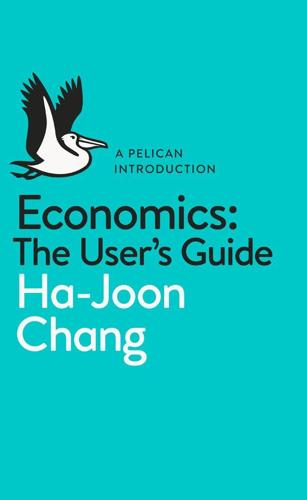
A Pelican Introduction Economics: A User's Guide
by
Ha-Joon Chang
Published 26 May 2014
Most of you will have guessed how, except for the last one, which is, unbeknown to most people, done in North Korea, where they make a synthetic fibre called vinalon, or vinylon, out of limestone.* All these ‘magical’ developments have been possible only because we have constantly invented better technologies, namely, better machines and better chemical processes. Starting from Abraham Darby’s coke-smelting technique in steel-making and John Kay’s flying shuttle for textile weaving in the early eighteenth century, an endless stream of technologies has emerged to change the world. We discussed some of these in Chapter 3. The steam engine, the internal combustion engine, electricity, organic chemistry, steel ships, (wired and wireless) telegraphy, aeroplanes, computers, nuclear fission, semiconductors and fibre optics are only the most important examples.
…
Today, genetic engineering, renewable energy, ‘advanced’ materials (e.g., graphene) and nano-technologies are emerging to transform the world yet again. In the early days of the Industrial Revolution, new technologies were often developed by individual visionaries. As a result, until the late nineteenth and early twentieth centuries, many technologies were known by their inventors’ names – Kay’s flying shuttle, Watt’s steam engine, the Haber–Bosch process and so on. From the late nineteenth century, with technologies becoming increasingly complex, fewer and fewer of them have been invented by individuals. Companies started developing the capability to generate new technologies through R&D in their corporate labs.
…
In the poorest ones, child labour is still prevalent, while a lot of people are still tenants of semi-feudal landlords. Anything between 30 per cent and 90 per cent of the workforce in these countries may be self-employed, many of whom are engaged in subsistence farming. * Yes, that’s the scientist, who also doubled as an alchemist and a stock market speculator. * These included the flying shuttle (1733) and spinning jenny (1764) in the textile industry, coke-smelting (1709) in steel-making and various processes for large-scale sulphuric-acid manufacture (the 1730s and the 1740s) in the chemical industry. * To simplify the story, the 1932 famine happened because too much food was shipped out of the rural areas, following the 1928 agricultural collectivization.

A World Without Work: Technology, Automation, and How We Should Respond
by
Daniel Susskind
Published 14 Jan 2020
(In fact, by the middle of the nineteenth century, Britain would be producing half of all the world’s cloth.)8 But when word spread about what Hargreaves was up to, his neighbors broke in, demolished the machine, and, somewhat gratuitously, destroyed his furniture, too. When Hargreaves tried to set up a factory elsewhere, he and his business partner were set upon by a mob.9 John Kay, a contemporary of Hargreaves, appears to have suffered a similar fate when he invented the flying shuttle in the 1730s. His home, it is said, was likewise ransacked by furious weavers, who “would have killed him had he not been conveyed to a place of safety by two friends in a wool-sheet.”10 A nineteenth-century mural in the town hall in Manchester, England, depicts his surreptitious flight from danger.11 These were not isolated incidents.
…
The Productivity Effect Perhaps the most obvious way that the complementing force helps human beings is that new technologies, even if they displace some workers, often make other workers more productive at their tasks. Think of the British weavers who were fortunate enough to find themselves operating one of Kay’s flying shuttles in the 1730s, or one of Hargreaves’s spinning jennies in the 1760s. They would have been able to spin far more cotton than their contemporaries who relied on their hands alone. This is the productivity effect.29 We can see this productivity effect at work today, too. Take a taxi driver who uses a sat-nav system to follow unfamiliar roads, an architect who uses computer-assisted design software to craft more complex buildings, or an accountant who uses tax computation software to handle harder, more intractable calculations.
…
See Great Britain equine flu evolution exclusion expert systems explicit knowledge eye diseases Facebook Big Tech and changing-pie effect and competition and concerns about political oversight and facial expressions fallacy of artificial intelligence farming, impact of automation on feedback finance industry flexibility flying shuttle Ford, Henry Fourier, Charles freckle machine free markets free time freight delivery Freud, Sigmund Frey, Carl frictional technological unemployment identity mismatch and impacts of insufficient demand and overview of place mismatch and skills mismatch and Furman, Jason The Future of the Professions (Susskind and Susskind) Future Politics (Susskind) Gagarin, Yuri Galbraith, John Kenneth Gates, Bill GDP per capita General Data Protection Regulation general intelligence, artificial General Problem Solver generosity, diversity and “The Genesis of Inequality” (Rousseau) Germany Gett Giant Evils Gini coefficients globalization go (board game) goals, automation and God Golden Age of Security Goldin, Claudia golems Good, Irving John Google ambition and Big Tech and changing-pie effect and competition and concerns about political power and priority shift and productivity effect and regulations and software and Gordon, Robert government.

Human Frontiers: The Future of Big Ideas in an Age of Small Thinking
by
Michael Bhaskar
Published 2 Nov 2021
In Britain and the Netherlands especially, there was a sense that a wide range of people could now seriously propose new ideas and that they should be praised and valued for doing so. This mentality was everywhere from architecture to the making of clothes. Anton Howes points out that the invention of John Kay's flying shuttle, an innovation that made cotton weaving far more efficient, could have happened at any time in thousands of years.5 All it required was wood and string. It was a practical step that did not rest on specialist technical or scientific insight. Yet until 1733 no one had fully thought to do it. Many of the key technologies of the time were arguably similar, Richard Arkwright's water frame, one of the central industrial inventions, among them.
…
They are all connected – ideas in science and philosophy, politics and technology, directed and undirected, lucky accidents and long programmes, all co-evolving and informing one another.8 Whether you were a grand philosophe at an aristocratic Parisian salon or a sooty-handed Derbyshire engineer, you could be part of a revolution in ideas, built from ideas. What's more, it's clear that the set of ideas behind the Great Divergence were of unusual consequence. Some were utterly practical, like the flying shuttle or the seed drill, others more abstract, like Newtonian mechanics. Some originated in one realm but led to another – steam engines were the product of tinkerers, built without exact underlying scientific principles, but their invention and refinement later led to an understanding of thermodynamics.
…
utm_source=twitterShare White, Curtis (2003), The Middle Mind: Why Americans Don't Think for Themselves, San Francisco: HarperSanFrancisco White, Curtis (2014), The Science Delusion: Asking the Big Questions in a Culture of Easy Answers, New York: Melville House Whitehead, A.N. (1925), Science and the Modern World, London: Macmillan Williams, Jeffrey J. (2018), ‘The Rise of the Promotional Intellectual’, The Chronicle of Higher Education, accessed 22 August 2018, available at https://www.chronicle.com/article/the-rise-of-the-promotional-intellectual/ Wilson, Edward O. (2017), The Origins of Creativity, London: Allen Lane Winchester, Simon (2008), The Man Who Loved China: The Fantastic Story of the Eccentric Scientist Who Unlocked the Mysteries of the Middle Kingdom, New York: HarperCollins Wolf, Martin (2019), ‘On the Technological Slowdown’, Foreign Affairs, accessed 14 July 2019, available at https://www.foreignaffairs.com/articles/2015-11-19/martin-wolf-innovation-slowdown Wong, May (2017), ‘Scholars say big ideas are getting harder to find’, Phys.org, accessed 10 October 2018, available at https://phys.org/news/2017-09-scholars-big-ideas-harder.html Wootton, David (2015), The Invention of Science: A New History of the Scientific Revolution, London: Allen Lane Wright, Robert (2000), Nonzero: History, Evolution and Human Cooperation, New York: Pantheon Books Wright, Ronald (2006), A Short History of Progress, Edinburgh: Canongate Wu, L., Wang, D., and Evans, J.A. (2019), ‘Large teams develop and small teams disrupt science and technology’, Nature 566, pp. 378–82 Wuchty, Stefan, Jones, Benjamin F., and Uzzi, Brian (2007), ‘The Increasing Dominance of Teams in Production of Knowledge’, Science, Vol. 316 No. 5827, pp. 1036–9 Xinhua (2019), ‘China to build scientific research station on Moon's south pole’, Xinhua, accessed 18 January 2021, available at http://www.xinhuanet.com/english/2019-04/24/c_138004666.htm Yueh, Linda (2018), The Great Economists: How Their Ideas Can Help Us Today, London: Penguin Viking Index ‘0,10’ exhibition 103 ‘0-I’ ideas 31 Aadhaar 265 abstraction 103 AC motor 287, 288 academia 209 Académie des sciences 47 Adam (robot) 235–6 Adams, John 211 Adler, Alfred 188 Adobe 265 Advanced Research Projects Agency (ARPA) 180, 247, 253, 296, 317 AEG 34 aeroplanes 62–6, 68–70, 71, 219 Aeschylus 3 Africa 267, 279–80, 295 age/ageing 122, 158–60, 193 AGI see artificial general intelligence Agrarian Revolution 252 agricultural production 92–3 AI see artificial intelligence Akcigit, Ufuk 193 Alexander the Great 159 Alexander, Albert 52 Alexandrian Library 4, 295, 304 algorithms 175, 185, 196, 224, 235, 245 aliens 240–1, 306, 308–9, 337 Allison, Jim 58 Alphabet 193, 225, 265, 294, 295 AlphaFold software 225–6, 227, 228–9, 233 AlphaGo software 226–7, 228, 233 AlQuraishi, Mohammed 225, 226, 229 Amazon 84–5, 214, 272 Amazon Prime Air 71 American Revolution 139 amino acids 223, 226 Ampère, André-Marie 74–5 Anaximander 35 ancestors 10–12 ancient Greeks 1–6, 7–8, 291, 303–4 Anderson, Kurt 106 Angkor Wat 43 anthrax 47–8, 51 Anthropocene 14–15 anti-reason 211–12 anti-science 211–12 antibacterials 234 antibiotics 38, 52–3, 124, 125, 217, 315 resistance to 235 Apollo missions 70, 315, 316, 317, 318 Apple 33, 85, 159, 185, 186, 193, 272, 296, 312 Aquinas, Thomas 36 AR see augmented reality archaeology 153–4 Archimedes 1–6, 7–8, 19, 27, 32, 37, 39, 291, 304 architecture 103, 115, 188 ARIA 297 Aristarchus 5 Aristotle 24, 108, 282, 304 Arkwright, Richard 25, 26, 34, 253 Armstrong, Louis 103 ARPA see Advanced Research Projects Agency art 99–104, 107–8, 176–7, 236, 321, 339 Artemis (Moon mission) 71, 218 artificial general intelligence (AGI) 226, 237–8, 249, 250, 310, 313, 330, 341 artificial intelligence (AI) 225–9, 233–41, 246–7, 248, 249–52, 262, 266, 300, 310, 312–13, 323, 329, 330, 331, 338 arts 152, 293 see also specific arts Artsimovich, Lev 147 arXiv 116 Asia 264, 267–8, 273, 275 Asimov, Isaac, Foundation 45 Astor, John Jacob 288 astronomy 30, 231, 232 AT&T 85, 181, 183, 185, 197 Ates, Sina T. 193 Athens 24, 295 Atlantis 154 augmented reality (AR) 241–2, 338 authoritarianism 112–13, 284 autonomous vehicles 71, 72, 219 ‘Axial Age’ 108 Azoulay, Pierre 317–18 Bach, J.S. 236 bacillus 46 Bacon, Francis 25, 259 bacteria 38, 46, 53 Bahcall, Safi 31 Ballets Russes 99–100 Baltimore and Ohio railway 67 Banks, Iain M. 310 Bardeen, John 182 BASF 289 Batchelor, Charles 286 Bates, Paul 226 Bayes, Thomas 289 Beagle (ship) 36 Beethoven, Ludwig van 26 Beijing Genomics Institute 257, 294–5 Bell Labs 180–4, 186–8, 190, 206, 214, 217, 289, 296, 322 Benz, Karl 68, 219, 330 Bergson, Henri 109 Bessemer process 80 Bezos, Jeff 71, 326 Bhattacharya, Jay 201, 202, 321 Biden, Joe 59 Big Bang 117, 174, 181 Big Big Ideas 79–80 big ideas 5, 8, 11, 13–19 adoption 28 and an uncertain future 302–36 and art 99–103 artificial 223–38 and the Big Ideas Famine 13 and bisociation 36 blockers to 17–18 and breakthrough problems 46–73, 77, 86, 98, 222, 250, 301 and the ‘burden of knowledge’ effect 154–65, 175, 178, 235, 338 and business formation 95 ceiling 18 conception 37 definition 27–8, 40–1 Enlightenment 132–40, 136–40 era of 109–10 erroneous 176 evidence for 222, 223–54 execution 37 ‘fishing out’ mechanism 152 future of 45, 98, 302–36, 337–43 harmful nature 41–2 how they work 23–45 and the Idea Paradox 178–9, 187, 191, 217, 226, 250, 254, 283–4, 301, 312, 342 and the Kardashev Scale 337–43 long and winding course of 4, 5, 35–8, 136 and the low-hanging fruit paradox 149–54, 167, 178 and luck 38–9 moral 136, 138 nature of 169–72 necessity of 41–3 need for 42–3 normalisation of 171–5, 178 originality of 28 paradox of 143–79 and patents 97 process of 37–8 purchase 37–8 and resources 128 and rights 132–40 and ‘ripeness’ 39 and short-termism 192 slow death of 106–7 slowdown of 98 society's reaction to 216 and specialisation 156, 157–8 today 21–140 tomorrow 141–343 big pharma 31, 60, 185, 217–18, 226 Big Science 118–19 Bill of Rights 137 Bingham, Hiram 153 biology 243–8, 300 synthetic 245–6, 251, 310, 329 BioNTech 218, 298 biotech 195–6, 240, 246, 255–8, 262, 266, 307 bisociation 36 Björk 104 Black, Joseph 26 ‘black swan’ events 307, 310 Bletchley Park 180, 296 Bloom, Nick 91, 92, 93 Boeing 69, 72, 162, 165, 192, 238 Bohr, Niels 104, 118, 159 Boltsmann, Ludwig 188 Boston Consulting Group 204 Botha, P.W. 114 Bowie, David 107 Boyer, Herbert 243 Boyle, Robert 232 Brahe, Tycho 36, 229, 292 brain 166, 246–8, 299–300 collective 299, 300–1 whole brain emulations (‘ems’) 248–9, 341 brain drains 197 brain-to-machine interfaces 247–8 Branson, Richard 71 Brattain, Walter 182 Brazil 266–7, 268, 279 breakthrough organisations 294–9 breakthrough problems 46–73, 77, 86, 98, 222, 234, 250, 301 breakthroughs 2–5, 27–8, 32–7, 41, 129, 152, 156 and expedition novelty 333 hostility to 187 medical 58–60 missing 175 near-misses 160 nuclear power 145 price of 87–98 and short-termism 192 slowdown of 87, 94 society's reaction to 216 and universities 204 see also ‘Eureka’ moments breast cancer 94 Brexit referendum 2016: 208 Brin, Sergey 319, 326 Britain 24, 146, 259, 283, 297 see also United Kingdom British Telecom 196 Brunel, Isambard Kingdom 67 Brunelleschi 232 Bruno, Giordano 216 Buddhism 108, 175, 264–5, 340 Buhler, Charlotte 188–9 Buhler, Karl 188–9 ‘burden of knowledge’ effect 154–65, 175, 178, 235, 338 bureaucracy 198–87, 280–1 Bush, George W. 211 Bush, Vannevar 168, 314–15, 317 business start-ups 95–6 Cage, John 104 Callard, Agnes 111 Caltech 184 Cambridge University 75, 76, 124, 235–6, 257, 294–6 canals 67 cancer 57–61, 76, 93–4, 131, 234, 245, 318 research 59–61 capital and economic growth 88 gray 192, 196 human 275, 277 capitalism 36, 111–13, 186, 189, 191–8 CAR-Ts see chimeric antigen receptor T-cells carbon dioxide emissions 220–1 Cardwell's Law 283 Carey, Nessa 244 Carnap, Rudolf 189 Carnarvon, Lord 153 cars 289 electric 71 flying 71 Carter, Howard 153 Carter, Jimmy 58 Carthage 3, 43 Cartright, Mary 163 CASP see Critical Assessment of Protein Structure Prediction Cassin, René 135 Catholic Church 206, 230 Cavendish Laboratory 76, 294 Cell (journal) 234 censorship 210–11 Census Bureau (US) 78 Centers for Disease Control 212 Cerf, Vint 253 CERN 118, 233, 239, 252, 296 Chain, Ernst 52, 60, 124 Champollion, Jean-François 155 Chang, Peng Chun 135 change 10–13, 18–19, 24 rapid 30, 32 resistance to 222 slowdown 85 chaos theory 163 Chaplin, Charlie 104 Chardin, Pierre Teilhard de 300 Charpentier, Emmanuelle 244, 256 chemistry 49, 56, 104, 117, 118, 124, 149–50, 159, 241, 244 chemotherapy 57 Chicago 10 chicken cholera 46 chimeric antigen receptor T-cells (CAR-Ts) 58, 61 China 15, 25, 71–2, 111, 112, 138, 208, 213, 216, 255–64, 265, 266, 267, 268, 275, 277, 279, 280, 283, 284–5, 312, 313, 314, 319, 328 Han 259, 260 Ming 284, 308, 309 Qing 260 Song 24, 259–60, 306 Tang 259–60 Zhou 259 Christianity 108, 303–4, 340 Church, George 245 cities 270–2, 308–9, 340 civilisation collapse 42–4 decay 187 cleantech 195 climate change 219–21, 284, 313–14, 338 clinical trials 218 cliodynamics 339 coal 23, 24, 26, 80, 220 Cocteau, Jean 101 cognitive complexity, high 332–3 cognitive diversity 281–3 Cognitive Revolution 252 Cohen, Stanley N. 243, 244 collective intelligence 339 collectivism 282 Collison, Patrick 117, 272 colour 75 Coltrane, John 104 Columbian Exchange 177 Columbus 38 comfort zones, stepping outside of 334 communism 111, 133, 134, 173, 217, 284 companies creation 95–6 numbers 96–7 competition 87, 283 complacency 221–2 complexity 161–7, 178, 204, 208, 298, 302, 329 high cognitive 332–3 compliance 205–6 computational power 128–9, 168, 234, 250 computer games 107 computers 166–7, 240, 253 computing 254 see also quantum computing Confucianism 133, 259 Confucius 24, 108, 109, 282 Congressional Budget Office 82 connectivity 272 Conon of Samos 4 consciousness 248, 340 consequences 328–9 consolidation, age of 86 Constantine 303 convergence 174, 311–12 Copernicus 29, 30, 41, 152, 171, 229, 232, 292 copyright 195 corporations 204–5 cosmic background microwave radiation 117, 181 cotton weaving, flying shuttle 24–5 Coulomb, Charles-Augustin de 74–5 counterculture 106 Covid-19 (coronavirus) pandemic 13, 14, 15, 55, 86, 113–14, 193, 202, 208, 212, 218, 251–2, 263, 283–4, 297–8, 309, 318, 327 vaccine 125, 245 Cowen, Tyler 13, 82, 94–5, 221 cowpox 47 creativity 188, 283 and artificial intelligence 236 crisis in 108 decrease 106–8 and universities 203 Crete 43 Crick, Francis 119, 296 CRISPR 243, 244, 251, 255–8, 299 Critical Assessment of Protein Structure Prediction (CASP) 224–6, 228 Cronin, Lee 242 crop yields 92–3 cultural diversity 281–3 cultural homogenisation 177 cultural rebellion 106–7 Cultural Revolution 114, 305 culture, stuck 106 Cunard 67 Curie, Marie 104, 144, 203, 289–90, 332 Daniels, John T. 62–3 Daoism 259 dark matter/energy/force 338 DARPA see Defense Advanced Research Projects Agency Darwin, Charles 34, 35–6, 37–8, 41, 77, 109, 118, 171, 289 Darwin, Erasmus 35 data 233 datasets, large 28 Davy, Sir Humphrey 149, 150 Debussy, Claude 100–1 decision-making, bad 43–4 Declaration of Independence 1776: 137 Declaration of the Rights of Man and Citizen 1789: 137 DeepMind 225–9, 296 Defense Advanced Research Projects Agency (DARPA) 315 democracy 111–12 Deng Xiaoping 261 deoxyribonucleic acid (DNA) 119, 223–4, 243, 251, 255, 339 DNA sequencing 56 Derrida, Jacques 109 Deutsch, David 126, 203 Diaghilev, Sergei 99–101 Diamond, Jared 42 Digital Age 180 digital technology 241–2, 243 diminishing returns 87, 91, 94, 97, 118, 123, 126, 130–1, 150, 161, 169, 173, 222, 250, 276, 285, 301 Dirac, Paul 159–60 disruption 34, 96, 109, 119, 157 diversity, cultural 281–3 DNA see deoxyribonucleic acid Dorling, Danny 171 Doudna, Jennifer 244, 251, 256 Douglas, Mary 290 Douthat, Ross 14, 106 drag 65 Drake equation 306 Drezner, Daniel 214 drones, delivery 71, 72 Drucker, Peter 189 drugs 55–7, 124, 235 Eroom's Law 55, 57, 61, 92–3, 119, 161, 234, 245, 338 and machine learning 234 research and development 55–7, 61, 92–4, 119, 161, 172–3, 217–18, 234, 245, 315, 338 see also pharmaceutical industry Duchamp, Marcel 103, 171 DuPont 184 Dutch East India Company 34 Dyson, Freeman 120 dystopias 305–8 East India Company 34 Easter Island 42–3 Eastern Europe 138 ecocides 42–3 economic growth 240, 272, 273, 316 endogenous 94 and ideas 88, 89–92, 95 process of 87–8 slowdown 82, 83, 84, 85, 178 economics 87–9, 98, 339, 340 contradictions of 87 Economist, The (magazine) 188 Edelman annual trust barometer 209 Edison, Thomas 183–4, 286–9, 290, 293 education 127, 277, 324–8 Einstein, Albert 11, 29, 74, 77, 104, 109, 117, 119, 124, 159–60, 203, 332 Eisenstein, Elizabeth 231 Eldredge, Niles 30 electric cars 71 electricity 11, 74–7, 81, 286–7, 289 electromagnetic fields 76 electromagnetic waves 75, 76 elements (chemical) 149–50 Elizabeth II 144–5 employment 204–5 Encyclopædia Britannica 97, 128, 155 ‘End of History’ 112 energy 337–8, 341–2 availability 85 use per capita 85 see also nuclear power engineering 243 England 25, 144–5, 309 Englert, François 118 Enlightenment 130, 136–40, 252 see also Industrial Enlightenment; neo-Enlightenment Eno, Brian 295 entrepreneurship, decline 96 epigenetics 164 epigraphy 236–7 epistemic polarisation 210 Epstein, David 334 Eratosthenes 5 Eroom's Law 55, 57, 61, 92–3, 119, 161, 234, 245, 338 ethical issues 256–7 Euclid 3, 304 ‘Eureka’ moments 2–5, 35, 36–7, 129, 163 Europe 95, 247, 258–60, 268, 268, 271, 283, 304, 308 European Space Agency 71 European Union (EU) 206, 216, 262, 266 Evans, Arthur 153 evolutionary theory 30, 35–6 expedition novelty 333 experimental spaces 296–8 Expressionism 104 Facebook 34, 159, 170, 197 Fahrenheit 232 failure, fear of 335 Faraday, Michael 75 FCC see Future Circular Collider FDA see Food and Drug Administration Federal Reserve (US) 82 Feigenbaum, Mitchell 163 fermentation 49 Fermi, Enrico 143, 159, 306 Fermi Paradox 306 Fernández-Armesto, Felipe 109 fertility rates 269 Feynman, Richard 77, 166, 332 film 104, 106–7, 108, 115 financialism 191–8, 206–7, 214, 217, 219 Firebird, The (ballet) 99–100 ‘first knowledge economy’ 25–6 First World War 54, 99, 104, 187, 188–9 Fisk, James 182 Fleming, Alexander 38, 52, 60, 332 flight 36, 62–6, 68–70, 71, 335 Flint & Company 64 flooding 220, 284 Florey, Howard 52, 60, 124, 332 Flyer, the 62–4, 66, 72 Foldit software 225 Food and Drug Administration (FDA) 55, 60, 93, 212 food supply 81 Ford 34, 253 Ford, Henry 68, 104, 219 Fordism 81 Foucault, Michel 110 Fraenkel, Eduard 124 France 49–51, 54, 64, 67, 95, 279, 309, 332 franchises 31 Franklin, Benjamin 119, 211 Frederick the Great 292 French Revolution 137, 275 Freud, Sigmund 34, 36, 77, 104, 171, 188, 190, 216 frontier 278–9, 283–4, 302, 310–11 Fukuyama, Francis 111–12 fundamentalism 213 Future Circular Collider (FCC) 239 futurology 44 Gagarin, Yuri 70 Galen 303 Galileo 206, 231, 232, 291, 322 Galois, Évariste 159 GDPR see General Data Protection Regulation Gell-Mann, Murray 77 gene editing 243–4, 251, 255–8 General Data Protection Regulation (GDPR) 206 General Electric (GE) 33, 184, 265, 288, 333 General Motors 289 Generation Z 86 genes 223–4 genetic engineering 243–4, 251, 253, 255–8 genetic science 163–4, 202 genius 26 genome, human 119, 202, 244, 255–7, 296, 313 genome sequencing 243–4 germ theory of disease 50–1, 53 Germany 54, 95, 96, 279, 283, 292, 332 Gesamtkunstwerk 99 Gibson, William 241 Glendon, Mary Ann 135 global warming 147 globalisation 177 Go 226–7 Gödel, Kurt 41, 168 Goldman Sachs 197 Goodhart's Law 199 Google 34, 85, 185, 197, 240, 272, 318 20 per cent time 319–20 Google Glass 241 Google Maps 86 Google Scholar 116 Google X 294 Gordon, Robert 13, 83, 94–5 Gouges, Olympe de 137 Gould, Stephen Jay 30 Gove, Michael 208 government 205, 207, 214, 216, 252, 267–8, 297 funding 185–6, 249, 252, 314–19, 321 GPT language prediction 234, 236 Graeber, David 13–14, 111 grants 120, 185–6, 195, 202, 316, 317, 319, 321–3 gravitational waves 117–18, 119 Great Acceleration 309–10 Great Convergence 255–301, 339 Great Disruption 96 Great Enrichment (Great Divergence) 23, 26, 258 Great Exhibition 1851: 293, 309 Great Stagnation Debate 13–14, 16, 17, 45, 72, 82–3, 87, 94–6, 129, 150, 240, 279, 338 Greenland 42 Gropius, Walter 103 Gross Domestic Product (GDP) 82, 90, 128, 278, 318 GDP per capita 23, 78, 82 growth cultures 25 growth theory, endogenous 88–9, 94 Gutenberg, Johannes 36 Guzey, Alexey 200, 322 Haber, Fritz 332 Haber-Bosch process 289 Hadid, Zaha 152 Hahn, Otto 144 Hamilton, Margaret 316 Harari, Yuval Noah 114–15, 236 Harris, Robert 307 Harvard Fellows 200 Harvard, John 156 Harvey, William 34, 291–2 Hassabis, Demis 229, 233 Hayek, Friedrich 189 Hegel, Georg Wilhelm Friedrich 36 Heisenberg, Werner 41, 159, 168, 332 heliocentric theory 5, 29, 118, 232, 304 helium 145 Hendrix, Jimi 105 Henry Adams curve 85 Hero of Alexandria 39 Herper, Matthew 55 Hertz, Heinrich 76 Herzl, Theodor 188 Hesse, Herman 307 Hieron II, king of Syracuse 1–2 Higgs, Peter 118 Higgs boson 117–18, 119, 239 Hinduism 133 Hiroshima 144 Hitler, Adolf 138, 188 Hodgkin, Dorothy 124, 332 Hollingsworth, J.

Reinventing Capitalism in the Age of Big Data
by
Viktor Mayer-Schönberger
and
Thomas Ramge
Published 27 Feb 2018
And it was well before the windmill replaced humans grinding grains and the printing press supplanted scribes. In fact, the ancient invention (or perhaps discovery) of the wheel itself enabled cargoes to be transported much more efficiently than through human carriage. The strategy to favor machines over humans gathered speed with the introduction of John Kay’s flying shuttle and James Watt’s steam engine in the eighteenth century. Initially, machines often were only marginally more efficient. They required considerable institutional support (such as appropriate laws, financial instruments, and the like), but improvements over time (including organizational changes) increased their efficiency by leaps and bounds, and they ultimately became indispensable in virtually all sectors.
…
See Great Recession/financial crisis financial intermediaries, 12, 146–156 choice expansion in, 215–216 payment solutions and, 146–147 regulations affecting, 139–140 traditional role of, 138–139 See also banks Finkel, Eli, 83, 84 Finland, 147, 191 fintechs, 11 banks investing in, 149–156 niche markets targeted by, 147, 152 worldwide investments in, 149 firms, 87–107, 109–131 Amazon as, 88–89, 106 automation in, 109, 111–112, 113–120, 128, 130–131 centralization in (see centralization) cognitive constraints and, 102–104 communicative coordination and, 26, 28–33, 90, 102 comparison of markets and, 28, 111 competition between markets and, 30, 107 decline in influence of, 12–13, 33 delegation in, 97–101, 106, 117 efficiency as focus of, 112–113 estimated number of, 28 human-centric, 214–215 internal talent management in, 126–129 intuition and heuristics in, 104–106 key difference between markets and, 32–33, 90 “noise” reduction strategies in, 100–101 organizational innovation in, 97, 110–111, 120–131 profits of, 195–197 reporting methods in, 90–97 rise in importance of, 33 shift to markets from, 10–11, 30–32, 125–126 structure of, 29–30 superstar, 195–197 tax credits for job creation proposed, 200–202 Flores, Fernando, 175–176 flying shuttle, 111 Forbes, 209 Ford, Henry, 29–30, 114 Ford Motor Company, 29–30, 31, 33, 98, 99–100 Fortune magazine, 208 Fox News, 178 Freightliner, 182 Friedman, Milton, 190 Fukoku Mutual Life Insurance, 109, 110–111, 113–114, 117, 120, 183, 188 fully automated luxury communism, 221 fundamental attribution error, 103 Funding Circle, 152, 163 Gates, Bill, 187 Gawande, Atul, 101 General Motors (GM), 98–99, 101 Germany, 134, 135, 136 gig economy, 186 Gigerenzer, Gerd, 105 Giza pyramids, 21 Glassdoor, 88 GoDaddy, 161 gold standard, 48 “Goobles,” 51 Google, 78, 110, 148, 151, 161, 196 antitrust case against, 165 feedback effects and, 30, 163, 169 prediction markets and, 50–51 Google Glass, 138 Google Shopping, 52 government, central planning for, 175–179 grain (as currency), 47 Great Depression, 51, 136 Great Famine (Soviet Union), 177 Great Recession/financial crisis, 134–135, 136, 215 See also subprime mortgage crisis Great Wall of China, 21, 24 Grünenthal, 42 Guardian, 221 Hagel, John, 31 Harvard Business Review, 99 Harvard Business School, 96 Harvard Medical School, 101 Harvard University, 45 Hayek, Friedrich August von, 39, 46–47 health care sector, 213–214 heuristics, 104–106 Higgs boson, 22 Hollerith, Herman, 96, 99 Holvi, 147 Honda, 30, 32 Huawei, 196 human choice.
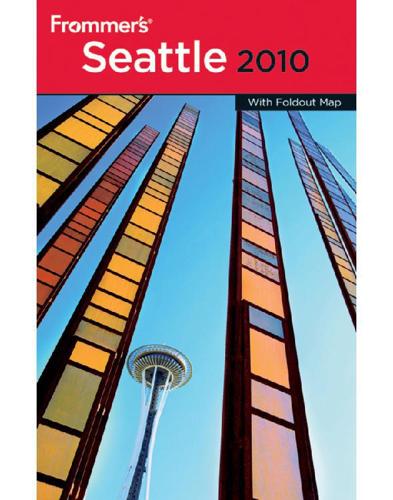
Frommer's Seattle 2010
by
Karl Samson
Published 10 Mar 2010
Prices are high, but the designs are meant to stand the test of time. 2025 First Ave. 20 6/441-6691. www.margaretoleary.com. Ragazzi’s Flying Shuttle Fashion becomes art and art becomes fashion at this chic boutique-cum-gallery in the Pioneer Square area. Hand-woven fabrics and hand-painted silks are the specialties, but, of course, such sophisticated fashions require equally unique body decorations in the form of exquisite jewelry creations. Designers and artists from the Northwest and the rest of the nation find an outlet for their creativity at the Flying Shuttle. 607 First Ave. 20 6/343-9762. www.ragazzisflyingshuttle.com. Synapse 206 Specializing in local, regional, and emerging national designers, this edgy little boutique in the Pioneer Square neighborhood is packed full of distinctive, often one-of-a-kind fashions.
…
There are a dozen different kinds of whisks, an equal number of muffin tins, and all manner of cake-decorating tools, tableware, napkins, cookbooks—simply everything a cook would need. By the way, this is the original Sur La Table. 84 Pine St. 20 6/448-2244. www.surlatable.com. JEWELRY Unique artist-crafted jewelry can be found at Ragazzi’s Flying Shuttle and Twist . Facèré Jewelry Art Gallery A big rock on a gold band? How uninspired. At this tiny shop inside the City Centre shopping gallery, rings, earrings, necklaces, and brooches are miniature works of art made from a fascinating range of materials. If you’re searching for something unique with which to adorn your body, don’t miss this shop.

Culture and Prosperity: The Truth About Markets - Why Some Nations Are Rich but Most Remain Poor
by
John Kay
Published 24 May 2004
This applies to the national economy, but there is no corresponding constraint at the level of the individual firm. An increase in exports by one firm will be matched either by an increase in imports or by a reduction in exports by some other firm. What is true for an individual company is not true for USA Inc. The John Kay who invented the flying shuttle was forced to flee to France by Luddites who feared his ingenuity would destroy their jobs. 5 The Luddites had good cause to be afraid for their jobs, many of which disappeared. There are many fewer jobs for bank clerks now that mechanical record keeping is undertaken by computers. But there are not fewer jobs overall.
…
Lower costs from new technology must lead to lower prices or { 178} John Kay increased profits, or both. Even if there is no increase in spending on the products of industries directly affected-and there will often beexpenditures on the products of some other industries will increase and generate additional opportunities there. Over the two centuries since the Luddites first wrecked flying shuttles, productivity has increased more than fiftyfold. But instead of having 98% unemployment, we produce fifty times as much. Current technological changes are no different. In some instances, increasing exports may yield benefits to the national economy (and not just to those who actually export), and new technology will reduce overall employment (and not just the employment of those who are displaced by new technology).
…
There are some publishers who put deliberate mistakes in their maps," said a spokesman for the Ordnance Survey. 14 Precious Knowledge ••••••••••••••••••••••••••••••••••••• The AA had fallen foul of intellectual property legislation-it had infringed the Ordnance Survey's copyright. Such rules have a long history. Patents allowed people who invented new gadgets or processessuch as John Kay's flying shuttle and spinning frame-to enjoy exclusive rights to build and use them for a limited period. Copyright allowed writers and engravers to prevent other people from copying their works without permission. This protection continued until the death of the author, and beyond. And trademarks provide an easy means by which the Coca-Cola company or WalMart can stop other people from calling their products Coca-Cola or their shops Wal-Mart.
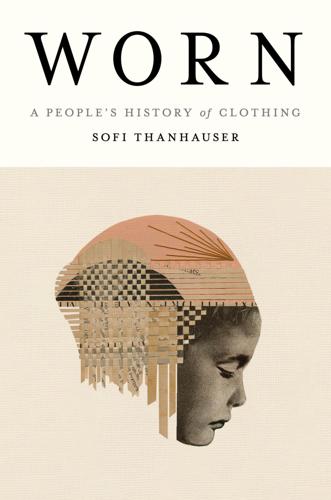
Worn: A People's History of Clothing
by
Sofi Thanhauser
Published 25 Jan 2022
Following the ban, English merchants continued to do brisk business even with home markets closed, as the American and African markets were vast enough to support ever greater quantities of Indian cotton fabrics. This was, however, the bare beginning of a period of prosperity for the English, derived from controlling the world’s flow of cotton cloth. A series of mechanical developments in cloth manufacture ushered in the next phase of England’s domination of the global cotton textile trade. The flying shuttle was patented by John Kay in 1733. The shuttle, which had a small spool of thread embedded in it, ran on a track through the warp threads on the loom, replacing an operation formerly done by hand. This sped up the pace of weaving to such a degree that hand spinners could not make thread fast enough to feed the looms.
…
GO TO NOTE REFERENCE IN TEXT “The Company’s Gumashta”: Beckert, Empire of Cotton, 45. GO TO NOTE REFERENCE IN TEXT “unprecedented mortality”: British East India Company, 45. GO TO NOTE REFERENCE IN TEXT “crept into”: Defoe and McVeigh, A Review of the State of the British Nation, 33. GO TO NOTE REFERENCE IN TEXT The flying shuttle: Mirsky and Nevins, The World of Eli Whitney, 83. GO TO NOTE REFERENCE IN TEXT “bag-cheeked”: Mirsky and Nevins, The World of Eli Whitney, 84–85. GO TO NOTE REFERENCE IN TEXT He hired a clockmaker: Hills, “Sir Richard Arkwright and His Patent Granted in 1769,” 257–60.
…
A B C D E F G H I J K L M N O P Q R S T U V W X Y Z A Abenaki peoples, 12–13 abuse of workers, see exploitation, labor Accord on Fire and Building Safety, 221 accountability, lack of, xvii, 220–21 acrylic, 189, 190, 191, 192, 219 Adams, John, 122 advertising language of clothes in, 292 origins of, 137–38 for ready-to-wear clothing, 137–38, 140, 149–50 for sewing machines, 36–37, 136 for synthetics, 189–90 AFL (American Federation of Labor), 163, 163n African slave trade, cotton in, 60 Agee, James, 46–47 agriculture capitalistic, 11, 254–56 Chinese silk and, 104–7, 111, 112 cotton, xv, 87 (see also cotton) exploitation of laborers in, 45–47, 52–53, 53n, 63–65, 70–72, 85–86, 231–32, 254–55 flax, 3–4, 7, 8 long-range thinking in, 263–64 risk of injury in, 53n for wool (see sheep industry) Akan peoples of Ghana, 293n Albers, Anni, 276 Albers, Josef, 276 Alliance for Bangladesh Worker Safety, 221 Altia Smart City (Honduras), 214–15 Alvarado, Alfredo, 215–16 Amdani, Yusuf, 214–15 American Cotton Manufacturers Institute, 186, 188 American denimheads, 237–42 American Fabrics and Fashions, 194, 195–96 American Federation of Labor (AFL), 163, 163n American Standards Association (ASA), 173, 173n, 182 American Textile History Museum, 246 American Viscose Company, 156, 173 Amoskeag Falls, 13, 18, 20 Amoskeag Mill, 19, 20 Amoskeag Millyard Museum, 19–20 Amu Darya (river), 86 aniline dye, 191–92, 275 animal skins, 5, 99 Ann Taylor Labor Allocation System (ATLAS), 219 apparel, see garment industry Applebome, Peter, 180 Aral Sea, 86, 87–88 archeological records, clothing and cloth in, xv, 5–8, 99–100, 252–53 Ardai, Jay, xvii, 232–33, 234–37 Arkwright, Richard, 62 art and culture as right of workers, 173–74, 176, 200 artificial silk, see rayon production artisans vs. factories for textile production, xi–xii, 64 vs. ready-to-wear clothing, 134, 143–46 see also crafts, fiber art vs. function in Navajo weaving, 276–78, 282, 288 ASA (American Standards Association), 173, 173n, 182 Asante peoples, 293–94, 293n Asheboro, N.C., 243, 245–46 Asian firms in Caribbean and Central America, 205–6, 207 Asian Miracles, 187 “Attack of Nerves, An” (Chekhov), 38–39 auctions, cotton, 69, 71–72 B Badger Sportswear, 93 Bangladesh, xvii, 220–21 Barber, Elizabeth Wayland, 5, 6, 7, 13, 267 Bayer, 51–52, 70 Bayeux Tapestry, 257–58 Beal, Fred E., 165, 166, 169 bedsheets, 22–23, 24 Beguay, Mary, 282–83 Belt and Road Initiative, 95–96 Bemberg Corporation, 162, 162n Bequelin, Nicholas, 91 Berkeley, Busby, 144 Beyoncé, 133 Bien Hoa Industrial Zone, 197–98, 208n Biosyn-Vegetabil-Wurst, 154, 181 Birth of a Nation, The (Griffith), 56 Blacks attacks in Texas against, 54–56 as slaves and sharecroppers, 46–47 in unions in 1920s, 169 women in nineteenth century, 29 Black Thunder Mine, 228–29, 230 Blanc, Paul David, 160 Bland, Simon, 262–64 blankets, wool, 266–67, 271, 273, 277, 282 bleaching of linen, 25 Blinken, Antony, 94 boarding schools for Navajo children, 269–70, 285 boll weevils, 45 Bosque Redondo, 274–75, 276, 281 Boston Medical and Surgical Journal, 158–59 Bourgeois Gentilhomme, Le (Molière), 118–19, 121 Boursault, Edme, 125 Bowing, Emily, 180–81 Braasch, Gary, 228 Bramwell feeder, carding with, 235 brands, U.S. clothing Asian production of, 197–201, 204, 205–6, 207, 220–21 Caribbean and Central American production of, 203–8, 212, 214 and designer labels, 133, 134, 140–43, 145–48, 190, 206 exploitative complicity by, 92–96, 196, 203–4, 206, 207–8, 216–21 fast fashion, 218 global sourcing by, 218–22 with polluting microfibers, 217–18 Bray, Francesca, 110 Bread and Roses Strike, 162–63 breeds of sheep, see sheep, breeds of British East India Company, 59, 60–61, 69, 88, 114, 118 British islands, sheep in, 250, 251–57, 261–62, 264, 292–93 brocade weave, 108–9, 113, 116 Brownson, Orestes Augustus, 20–21 Bryn Mawr College, 171 Bt cotton, 54, 70–71, 72 Bucyrus 257 WS Dragline, 230, 237 Burch, Tory, 200 Burns, Robert Homer, 227 byssus (sea silk), 299–300 C Canahuati, Juan, 212 capitalism agriculture of, 11, 254–56 and clothing design, 142–44 consumerism and, 139–40, 145–46 carbon disulfide as chemical weapon, 181 discovery and first uses of, 157–58 inadequate worker protection against, 156–57, 161, 172n, 173, 173n, 182 in rayon production, 156–57, 160–61 in rubber production, 157–60 scientific research on dangers of, 157–58, 158–59, 160, 170–73 symptoms of exposure to, 156–58, 160–61, 170–73, 180–82 carbon emissions, xii, 231, 237 carbon sequestration, 250–51, 264 carding wool, 233, 235, 284 career wear, 194 Caribbean Basin Initiative (CBI), 204–7, 218–19 Carnegie Endowment for International Peace report, 214 Carothers, Wallace Hume, 183 Carson, Christopher “Kit,” 274 Carter, Jimmy, 227–28 Cartwright, Edmund, 62 catalogs, shopping from, 138, 248 Cattlemart building (Woolfest), 259 Çayönü, Turkey, 7 Central America, 205, 207, 211–12 see also Honduras Central Asia, 82–86 Chacon, Raven, 275 Chambers, Lucinda, 146 Chambre Syndicale de la Haute Couture, 190 Chari, Sharad, 79 Chayes, Sarah, 214 Cherokee removal, 45–46 Cherry Valley, N.Y., 247 children’s clothing, 129 China American denim in, 242 as communist threat, 185 cotton production in, 44, 83, 89–91, 92–96 designer knockoffs in, 147 forced labor of Uyghurs in, 92–96 rayon production in, 182 silk production in, 102–4, 105, 115 (see also silk fabric, Chinese) surveillance of citizens in, 92 see also Xinjiang China National Silk Museum, 113 chinoiserie, 117–18 Chiquola Mill, 177–80 Choloma, Honduras, 208–9, 212, 215, 216 Chrisman-Campbell, Kimberly, 121 Civil War, U.S., 46, 63, 85, 114 cleanliness, linen and, 24–26 climate change, 87, 229, 230–31, 237 Clinton, Bill, 208 Clinton, Hillary Rodham, 212–13 cloth in archeological records, xv, 5–8, 99–100, 252–53 cutting vs. stitching, 127 fibers for (see fibers) homemade, 9–10, 14, 58, 65–66, 85, 268, 295 making (see fiber production, revival of small-scale; textile production, factories for; weavers; weaving) metaphors related to, 295 as necessary for clothing, xiv reading, 293–94 storytelling and, 257–59, 288–89, 290–91, 292–94 clothing colonial control with, 269–70 colors, significance of, 192 consequences of manufacturing of (see environmental degradation; exploitation, labor) decline of durability of, x, 245 declining prices of, x–xi, 219, 245 diversity vs. uniformity of, xi–xii, 142–44 of early humans, 5–8, 229–30 of fictional utopias, 299 making (see garment industry; sewing) mass production of (see ready-to-wear clothing) of Navajo, 269–70, 277 political implications of, 143–45 solutions, small opportunities as, 295–300 U.S. retailers of (see brands, U.S. clothing) writing and, 297–98 coal, textiles and, 228–29, 230–31 Cockermouth, Cumbria, 251, 259 cocoons, silkworm, 102–3, 104, 105, 112 Cohn, Adele, 171 Coimbatore, India, 67–68, 74, 77 Coimbatore Spinning and Weaving Mills, 67–68, 74, 77 Colbert, Jean-Baptiste, 120–23 colonization of Central Asia by Russia, 84–86 cotton cloth and slave trade in, 40, 60 of India by Britain, 59, 60–66 of Navajo in U.S., 269–70, 273–74 of Xinjiang by China’s XPCC, 88, 91 “Color Riot: How Color Changed Navajo Textiles” (Heard Museum), 275–76 colors clothing, significance of, 192 in Navajo weaving, 271, 274–75, 280, 281, 282–83 see also dyeing, fabric communism clothing design and, 142–44 vs. consumerism, 139–40 perceived threat of, 185–87, 204 Cone Mills (Greensboro), 239, 242–44 cordage, 6–7 corduroy, cheapening of, 244–45 “Corporate Responsibility Code,” 220–21 corporations, U.S. and transnational, xii, 155–56, 198–99, 203–4, 210, 220–21 corsets, 30 cotton agriculture overview of, xv, 87 description of, 43 for earliest Navajo weavings, 273 as subsistence crop, 58 cotton gins, 18, 45, 56–57, 62, 72–73 cotton in India, 44, 58–80 at auction, 69, 71–72 British control of, 59, 60–65 chemicals used on, 70, 71 dyeing industry for, 77–78 ginning of, 72–73 home rule and, 65–66 industrialization of, 66–68, 73–74, 76–77 knitwear from, 74, 77–80 labor exploitation in, 63–64n, 63–65, 70–72 pre-1900s trading of, 58–61, 63–64n, 63–65 seed varieties for, 69–71, 72, 300 small-scale spinning of, 300 spinning mills for, 74, 75–77 water shortages and, 69–70, 72, 74–75, 80–81 cotton production in China (Xinjiang), 44, 83, 89–91, 92–96 environmental degradation from, 45–46, 48–49, 63, 78, 86–87, 89, 90, 94 first New England mills for, 18–19 global rates of, 44, 93, 188, 188n in India (see cotton in India) in Japan, post–WWII, 185 with labor by government force, 63–64n, 63–65, 85–86, 89, 92–96 in Russia/Soviet Union, 84–86 in Southern U.S., 46, 62–63, 85, 114 subsidies in U.S. for, 54, 185 U.S. trade policies for, post–WWII, 185–86, 188 water demands of, 87 cotton production in Texas, 44–56 Bt cottonseed for, 54 chemicals used in, 44, 48, 50–54 environmental degradation from, 45–46, 48–49 and ginning, 56–57 harvesting in, 43–45 labor exploitation in, 45–47, 52–53 origins of, 45–46 overseas markets for, 216 racism in, 47, 54–56 subsidies for, 54 cotton strippers, 43–44, 45 coverture, 27, 27n crafts, fiber communal nature of, 260, 268 in guilds vs. home production, 9–10 health benefits of, 267–68 humane infrastructure for, 295 internet presence of, 234 revival of, 232–34, 248, 259–60 Crompton and Knowles looms, 238, 246, 247, 249 Cumbria, England, 250, 251, 254, 256, 262–64 D Dacrons, 189, 190, 191 Davis, Edward Everett, 47 Davis, Lanny, 212 Davis, Luke, 240–41 debt, cotton farmers and, 46, 70–72, 85 Delaware Rayon, 180–81 Delpech, Auguste, 157–58 denimheads, 237–42 denim revival, 237–43 department stores, 137–38, 218 Derbyshire, England, 11, 62 designer knockoffs, 146–47 designer labels, 134, 140–43, 145–48, 190, 206 designers, 141–43, 190, 192, 197, 199, 206 Dhaka, Bangladesh, xvii, 220–21 d’Harnoncourt, René, 277 Dior, Christian, 141, 190, 207 disasters, factory, xvii, 175, 176, 220–21 domestication of sheep, 229–30 domestic code for women, 28, 29 Donghua University (Shanghai), 116 double knits (flat knits), 192 Draper looms, 238, 239, 242 drawers (knickers), 23–24, 39 Dumptique, ix–x duopoly market, 155–56 DuPont marketing by, 189–90 nylon creation and production at, 183, 189 rayon production by, 156, 173n, 189 synthetic fibers by, 189, 193 dyeing, fabric with aniline, 191–92, 275 in China, 113 in India, 77–78 Japanese indigo for, 239 in Navajo weaving, 271, 274–75, 282–83 with synthetics, 191–92 E East India Company, 59, 60–61, 69, 88, 114, 118 Eastland Bill (1948), 185 East Turkestan Islamic Movement (ETIM), 91 Egypt, Ancient, 7, 7n, 8 electricity, 67, 74, 76, 103, 230–31 Elizabethton, Tenn., 161–64 El Salvador, 207, 210 embroidery, 111, 257 enclosure, resistance to, 11, 254 Enclosure Acts (England), 11 endangered breeds of sheep, 236, 250, 257, 261–63, 264 endosulfan, 71 Engels, Friedrich, 29 England control of Indian cotton by, 59, 60–65 effect of factories in, 64 history of sheep in, 252–54, 256 environmental degradation of carbon emissions, xii, 231, 237 from cotton production, 45–46, 48–49, 63, 78, 86–87, 89, 90, 94 from dyeing fabric, 191–92 effects on silk production, 104–6, 113, 114–15 from microfibers, 217–18 from rayon production, 168 see also water Environmental Protection Agency (EPA), 51–52 EPZs, see export processing zones Erskine, Lillian, 172 Erskine-Hamilton study (1938), 172 ethephon, 44 ethics debates about, 291–92 U.S. silence on, xvii, 220–21 ETIM (East Turkestan Islamic Movement), 91 Europe Asian influence in, 117–18, 145 corporate accountability in, xvii, 220–21 fashion in, 120, 122 history of cotton in, 59–63, 81 history of linen in, xv, 8–9, 14, 25, 59 history of wool in, 252–56 rayon production in, 154, 160, 162 see also specific countries European Age of Reason, 10–11 Ewen, Stuart, 39, 139 exhibitions of Navajo weaving, 275–76, 277–78 exploitation, labor in cotton production, 45–47, 52–53, 63–64n, 63–65, 70–72, 85–86, 92–96 in garment industry, xv–xvi, xvii, 92–96, 173–75, 187–88, 196, 200, 203–8, 210–17, 219–21, 293 lack of accountability for, 220–21 persistence of, 293 in rayon and rubber production, 154, 156–61, 170–73, 180–82 of seamstresses, 30–31, 34, 37–38, 136, 196, 293 in sheep industry, 231–32, 254–55 in textile factories, 17–18, 20–21, 28–30, 73–74, 75, 76–77, 162, 162n, 166–69, 167n, 186 export processing zones (EPZs) Caribbean Basin Initiative, 204–7, 218–19 company contracts with, 198–99 description of, 197–98, 208–9 as extraction zones, 214 in Honduras, 202, 203–6, 207–16 local infrastructure and, 205 local manufacturing in, 206–7 poverty surrounding, 209–10, 214 F Fables d’Esope, Les (Boursault), 125 fabric, see cloth; fibers factories, see garment industry; textile production, factories for fakes, designer, 146–47 family, bourgeois ideal for, 28 farming, see agriculture fashion designers, 141–43, 190, 192, 197, 199, 206 origins and seasons of, 121, 125 Paris and, 122, 132–33 publications, 121–22, 125–26, 146 see also France, prerevolutionary fashion in Fashion Garments Limited, 197, 198–99 Fashion Institute of Technology, 296–97 fashion plates, 122 fast fashion, xii–xiii, 218 Federici, Silvia, 11 feminists, industrial vs. neoliberal, 173–74, 200 fertilizer, wool for, 263 fiber crafts, see crafts, fiber fiber production, revival of small-scale by denimheads, 237–43 mechanized, 232–33, 234–37, 243–49 wool for, xvi, 232–33, 234–37 (see also Woolfest) fibers from animals, xiv, 5, 230 (see also silk fabric; wool) petroleum-based, xiv, xv, 183, 188–94 (see also synthetic fabrics) from plants, xiv, 6–7, 230 (see also cotton; linen) see also rayon Fibershed, 268 filatures, silk, 102–4, 105, 114–15 Fingerlakes Woolen Mill, 232–33, 234–37 fisheries, collapse of, 86 flax in archeological records, 6 domestication of, 7 for linen, 3–4 in preindustrial Europe, 8 in preindustrial New England, 12 tow cloth from, 12 Flügel, J. C. (John Carl), 126 flying shuttle for looms, 61 Foley, Neil, 47 Forbes, 205 Fortune, 46, 156 France designers from, 141–43, 190 early sewing machine in, 33–34 and Parisian style, 122, 132–33 silk production in, 118, 122, 130–31 France, prerevolutionary fashion in, 118–32 Chinese silk’s influence on, 118 economic success of, 122 gender distinctions in, 126–27 international influence of, 122 Louis XIV’s use of, 120–24 Marie Antoinette and, 130–31 philosophical debate over, 129–30 political commentary with, 128–29 revolution’s effects on, 131–32 Rousseau’s influence on, 129–30 as social marker, 118–20, 124–27 women in business of, 127–28 Frank, Dana, 213 Frank Leslie’s Illustrated Weekly, 36 G Ganado Ridge rugs, 280 Gandhi, Mohandas, 65–66, 300 garment industry in Asian countries, post–WWII, 95, 187, 193, 195, 197–201, 204, 205–6, 207, 220–21 in Caribbean and Central America, 202–8, 214–17, 218–19 designers in, 197, 199, 206 in EPZs (see export processing zones) fast fashion in, xii–xiii, 218 in India, 77–80 labor exploitation in, xv–xvi, xvii, 92–96, 173–75, 187–88, 196, 200, 203–8, 210–17, 219–21, 293 in Shanghai, 115–16 small choices for improvement in, 295–300 U.S., undercutting of unions in, 173–77, 188, 200, 293 U.S. offshoring of, 196–201, 202–8, 214–17, 218–19 U.S. silence on ethics of, xvii, 220–21 U.S. trade policies and destruction of, 187–88, 193–94, 195–96, 218–19 in Xinjiang, 92–96 Gastonia, N.C., 165–69, 178 gender discrimination, see money-making as male prerogative gender distinctions in clothing, 126–27 gender fluidity, Navajo, 287 genetically modified cotton seeds, 54, 70–71 Gengzhi Tu scrolls, 117 Genoa, N.Y., 232 genocide of Uyghurs, 94 Georgia, 45–46 Germantown, Philadelphia, 274, 275 Germany, 8, 154 Ghana, 293–94, 293n Gifford, Kathie Lee, 208 Givenchy, 190 Glanzstoff rayon factory, 161–64, 162n glyphosate, 51–52 Goody, Rabbit, xvii, 245, 247–49 Grand Carriage procession, 109 grand habit court dress, 121, 128 Greek myths, 284, 290, 291, 293, 295 Green, Cecilia, 207 Greensboro, N.C., 239, 242–43 Greenville, S.C., 178–80 Greenville News, The, 179–80 Griffith, D.

Blood in the Machine: The Origins of the Rebellion Against Big Tech
by
Brian Merchant
Published 25 Sep 2023
Customs, standards, and traditions developed around the machines, which were worked in the weavers’ or knitters’ homes, or in small shops. The massive demand for English cloth continued to inspire innovations in both the machinery that made a worker’s life easier, and more disruptive technologies that promised a dramatic increase in the rate of production. In 1733, an apprentice craftsman named John Kay patented the flying shuttle, a device that let a single weaver, instead of two, work a broadloom. In the 1760s, a weaver and cotton spinner named James Hargreaves invented the spinning jenny, which let a single worker spin multiple threads into yarn with the crank of a handle—previously it took six. Just a couple years later, Arkwright built his water frame, applying hydropower to the spinning device and assuring the production of vast volumes of yarn.
…
He would have seen the intensity and intricacy of weaving work up close: the weaver’s darting hands, flicking wrists, and endlessly rising and falling knees all syncing up with the apparatus before him. The weaver depressing and releasing those pedal-like levers called treadles, one under each foot; throwing the flying shuttle; and angling the lathe, each step rapid-fire, creating a fine woven garment inch by inch. Movements so assured, they could perhaps have been said to be machinelike. Amidst the clanking din, Edmund Cartwright watched and made notes. He refined his prototype, not fully comprehending that the schemes bouncing around his skull would hit the gas on the Industrial Revolution, or what that might mean for men and women like the weaver he was watching at work. 1797 Mary Godwin The Polygon was in a state of chaos.
…
The philosopher also helped inaugurate the tradition of insisting that exploiting the human laborer is a necessary evil on the path to full automation, which is always just around the bend. Notably, by the time Ben and George were having their debate, the weaving shuttle had already been automated, via a device called the flying shuttle, and yet there were plenty of servants and poor workers still to be found in England. Still, for nearly a millennium, before there were many meaningful real-world examples to draw on, dreams of automation presented in prose and poetry were optimistic. The concept was admired by elites, who may prefer not to own slaves or pay servants, and perhaps even by workers, who would prefer not to be either.
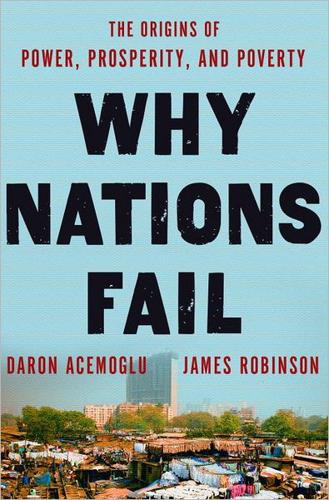
Why Nations Fail: The Origins of Power, Prosperity, and Poverty
by
Daron Acemoglu
and
James Robinson
Published 20 Mar 2012
Arkwright’s water frame could do it in 300 hours, and the self-acting mule in 135. Along with the mechanization of spinning came the mechanization of weaving. An important first step was the invention of the flying shuttle by John Kay in 1733. Though it initially simply increased the productivity of hand weavers, its most enduring impact would be in opening the way to mechanized weaving. Building on the flying shuttle, Edmund Cartwright introduced the power loom in 1785, a first step in a series of innovations that would lead to machines replacing manual skills in weaving as they were also doing in spinning. The English textile industry not only was the driving force behind the Industrial Revolution but also revolutionized the world economy.
…
Artisans whose manual skills were being replaced by mechanization likewise opposed the spread of industry. Many organized against it, rioting and destroying the machines they saw as responsible for the decline of their livelihood. They were the Luddites, a word that has today become synonymous with resistance to technological change. John Kay, English inventor of the “flying shuttle” in 1733, one of the first significant improvements in the mechanization of weaving, had his house burned down by Luddites in 1753. James Hargreaves, inventor of the “spinning jenny,” a complementary revolutionary improvement in spinning, got similar treatment. In reality, the artisans were much less effective than the landowners and elites in opposing industrialization.

The Coming Wave: Technology, Power, and the Twenty-First Century's Greatest Dilemma
by
Mustafa Suleyman
Published 4 Sep 2023
In medieval times Pope Urban II wanted to ban the crossbow. Queen Elizabeth I nixed a new kind of knitting machine in the late sixteenth century on the grounds it might upset the guilds. Guilds harassed and smashed new kinds of looms and lathes in Nuremberg, Danzig, the Netherlands, and England. John Kay, the inventor of the flying shuttle, which made weaving more efficient and was one of the key technologies of the Industrial Revolution, was so scared of violent reprisals he fled from England to France. People throughout history have attempted to resist new technologies because they felt threatened and worried their livelihoods and way of life would be destroyed.
…
See omni-use technology dystopia, 215–17 E East Germany, 192 eBay, 188–89 economic inequality, 153–54 Edison, Thomas, 35 ego, 140–41 electricity, 30–31 EleutherAI, 68–69 Elizabeth I (queen of England), 39, 40 Endy, Drew, 84 energy, 99–101, 198 engines, 23–25 ENIAC, 32 enzymatic synthesis, 83, 109 Epic of Gilgamesh, 5 Esvelt, Kevin, 273 EternalBlue, 161–62 ethnic cleansing, 195 ETH Zurich, 84 European Union, 125, 229, 260 evolution, 26–27, 79, 84 explanation, 243 explosives, 35, 110 Exscientia, 110 F Facebook, 150, 172, 258 facial recognition software, 194, 207 Fakhrizadeh, Mohsen, 165 feudalism, 184 Feynman, Richard, 259 fire, 26–27 flood myths, 5 flying shuttle, 39 Ford, Henry, 24 Ford Motor Company, 98 four features, defined, vii fragility amplifiers. See nation-state fragility amplifiers fragmentation. See decentralization Franklin, Rosalind, 80 frenzy phase, 132 fusion power, 100 G gain-of-function (GOF) research, 175–77 Gato, 111 gene editing containment and, 46, 265 CRISPR technology and, 81–82, 86, 129–30 ethical issues, 86 Genentech, 80 general-purpose technologies as accelerants, 92 containment and, 233 corporate concentration and, 190–91 defined, 26 internal combustion engine as, 25, 26 invisibility of, 27 omni-use and, 111 generative AI, 69, 73 See also large language models gene synthesis, 83–84, 247–48 genetically modified organisms (GMOs), 45, 46, 231 genetic engineering accessibility and, 82–83 autonomy and, 114 containment and, 46, 265, 269–70 genome sequencing, 80–81, 114 origins of, 80 See also gene editing; synthetic biology genetics, 55 See also synthetic biology Genghis Khan, 205 genome sequencing, 80–81 geopolitics AlphaGo and, 117–19, 120 arms race rhetoric and, 124–25, 126–27 China and, 120–24 as coming wave incentive, 119–27 containment and, 234 European Union and, 125 India and, 125–26 international cooperation and, 263–67 post-sovereign world and, 192 Sputnik and, 119–20 germline editing, 265 GitHub, 128–29 Gladstone, William, 131 global challenges, 137–40, 219 globalization, 107, 155–56 global warming.

Frommer's Washington State
by
Karl Samson
Published 2 Nov 2010
The racks of this Belltown boutique are lined with drapey natural-fiber fashions in bold colors—plus, there are lots of accessories to accompany the clothes. 2300 First Ave. & 206/448-0355. Ragazzi’s Flying Shuttle Fashion becomes art and art becomes fashion at this chic boutique-cum-gallery in the Pioneer Square area. Hand-woven fabrics and hand-painted silks are the specialties, but, of course, such sophisticated fashions require equally unique body decorations in the form of exquisite jewelry creations. Designers and artists from the Northwest and the rest of the nation find an outlet for their creativity at the Flying Shuttle. 607 First Ave. & 206/343-9762. www.ragazzis flyingshuttle.com. Shopping The Spanish Table There are cases full of imported meats and cheeses, as well as all manner of other Spanish ingredients, and, if you’ve decided your life’s goal is to prepare the ultimate paella, this store will set you on the path to perfection.
…
Helens Visitor Center at Silver Lake, 311 Museum & Arts Center (Sequim), 232 Museum at the Carnegie (Port Angeles), 240 Museum of Flight (Seattle), 120 Museum of Glass (Tacoma), 210 Museum of History and Industry (MOHAI; Seattle), 119–120 Museum of Northwest Art (La Conner), 187 Myrtle Edwards Park (Seattle), 110, 122 N National Motor Life Boat School, 263–264 Native Americans arts and crafts, Port Townsend, 226 arts and crafts galleries, Seattle, 134 history of, 15–16, 18–19 Kitsap Peninsula, 201–202 Makah Cultural and Research Center (Neah Bay), 238–239 Northwest Museum of Arts & Culture (Spokane), 350 Raymond Wildlife-Heritage Sculpture Corridor, 259 Natural attractions, best, 2 Natural environments, 21–24 The Nature Conservancy, 40 Nature of the Northwest, 42 Naval Undersea Museum (near Keyport), 204 Neah Bay, 238 Nefarious Cellars (Chelan), 286 Neighbours (Seattle), 147 Neumo's (Seattle), 143 New Orleans Creole Restaurant (Seattle), 143 Newspapers and magazines, 44 New Year's at the Needle (Seattle), 30 Nishinomiya Tsutakawa Japanese Garden (Spokane), 350 Nisqually, 305 Nordstrom Rack (Seattle), 136 Nordstrom (Seattle), 136 North Beach, 258 accommodations, 260–261 restaurants, 261 North Bend, 301 North Cascades Institute, 40, 42, 276 North Cascades Scenic Highway, 272, 275–277 North Cascades Visitor Center, 275–276 North Chuckanut Mountain Trailhead, 192 Northern Pacific Railway Museum (Toppenish), 331 North Seattle (Including Ballard, Fremont, Wallingford & the University District) accommodations, 85–86 attractions, 118–120 restaurants, 101–103 Northstar Winery (Walla Walla), 341 Northwest Carriage Museum (Raymond), 259 Northwest Craft Center (Seattle), 135 Northwest Fine Woodworking (Seattle), 135 Northwest Flower & Garden Show (Seattle), 28 Northwest Folklife Festival (Seattle), 28–29 Northwest Garlic Festival (Long Beach), 262 Northwest Maritime Center (Port Townsend), 225 Northwest Museum of Arts & Culture (Spokane), 350 Northwest Outdoor Center (Seattle), 42, 129 Northwest Pendleton (Seattle), 136 Northwest Puppet Center (Seattle), 124 Northwest Railway Museum (Snoqualmie), 301 Northwest Trek Wildlife Park (Eatonville), 217 O Obstruction Pass State Park, 177 Ocean Shores, 258 accommodations, 260–261 restaurants, 261 Odlin County Park (Lopez), 182 A Taste of Icicle Ridge Winery (Leavenworth), 293 Of Sea and Shore Museum (Port Gamble), 203 Ohanapecosh Visitor Center, 305 Ohme Gardens (Wenatchee), 294–295 Okanogan Estate & Vineyards (Leavenworth), 293 Okanogan National Forest, 279 Oktoberfest (Leavenworth), 30, 292 Old Apple Tree Park (Vancouver), 268 Olde Thyme Aviation (Seattle), 128 Old Man House Park, 203 Olga Pottery (Orcas Island), 176 Oliver's (Seattle), 145 368 16_607510-bindex.indd 36816_607510-bindex.indd 368 9/28/10 8:50 PM9/28/10 8:50 PM P Pacific Coast Cranberry Research Foundation Museum (Long Beach), 264 Pacific Crest Trail, 279 Pacific Northwest Ballet (Seattle), 141 Pacific Northwest Journeys, 70 Pacific Pines State Park, 265 Pacific Place (Seattle), 132, 138 Pacific Science Center (Seattle), 115 Padilla Bay National Estuarine Research Reserve (La Conner), 187 The Palouse, 345–347 Palouse Falls State Park, 346 Paradise, 305, 306 Paramount Theatre (Seattle), 141 Pasek Cellars (Leavenworth), 293 Passports, 30, 360 Patit Creek Cellars (Walla Walla), 340 Patricia Rovzar Gallery (Seattle), 134 Pearson Air Museum, 268 Pelindaba Lavender Farms, 167 Pelindaba Lavender Friday Harbor, 167 Pendleton Woolen Mills Store (Washougal), 268–269 Penn Cove Musselfest (Whidbey Island), 154 Penrose Point State Park, 207 Pepper Bridge Winery (Walla Walla), 341 Percival Landing (Olympia), 217 Peshastin Pinnacles State Park, 296 Petrol, 359 Pier 66 (Bell Street Pier; Seattle), 110 Pier 52 (Seattle), 109 Pier 55 (Seattle), 109 Pier 56 (Seattle), 109 Pier 57 (Seattle), 109 Pier 59 (Seattle), 110 Pier 67 (Seattle), 110 Pier 69 (Seattle), 110 Pike Place Fish (Seattle), 138 Pike Place Market (Seattle), 88, 112–114 accommodations around, 78–79 food vendors, 108–109 restaurants around, 92–96 shopping at, 131, 132, 135, 138 The Pike Pub & Brewery (Seattle), 146 Pill Hill (First Hill; Seattle), 62 accommodations, 83–84 attractions, 117–118 The Pink Door (Seattle), 144 Pioneer Square area (Seattle), 62, 112 accommodations, 77–78 entertainment, 139 nightlife, 142 restaurants, 91–92 shopping, 132, 133 Planning your trip, 26–45 Point Defiance Park (Tacoma), 211 Point Defiance Zoo & Aquarium (Tacoma), 212 Police, 360 Polson Museum (Hoquiam), 257 Pontin del Roza Winery (Prosser), 329 Portalis (Seattle), 145 Port Angeles, 235–236, 240 Port Angeles Fine Arts Center, 241 Port Gamble, 203–204 Port Gamble Historical Museum, 203–204 Portlock Port Chatham Smoked Seafood (Seattle), 139 Port Orchard, 204 Portteus Vineyards (Zillah), 327 Port Townsend, 7, 224–231 Port Townsend Brewing Company, 231 Port Townsend Film Festival, 225 Port Townsend Marine Science Center, 226–227 Potholes Reservoir, 357 Poulsbo, 201–206 Poulsbo Marine Science Center, 203 Prescription medications, 37 Priest Point Park (Olympia), 217 Private Eye on Seattle, 125 Procession of Species (Olympia), 28 Prosser restaurants, 334–335 wineries, 327–329 Prosser Vintner's Village, 327–328 Puget Sound, 46–47, 121 Puget Sound Navy Museum (Bremerton), 204 Purple Haze Lavender Downtown Store (Sequim), 233 Purple Haze Lavender Farm (Sequim), 233 GENERAL INDEX Olmstead Place State Park, 322 Olsen Estates (Prosser), 328 Olympia, 215–224 Olympia Farmers Market, 216 Olympic Cellars (Sequim), 233 Olympic Discovery Trail, 233 Olympic Game Farm (Sequim), 232 Olympic Hot Springs, 237 Olympic Lavender Farm (Sequim), 233 Olympic Mountains, 220–221 Olympic Music Festival (Quilcene), 253 Olympic National Park, 220 east, 252–254 northern, 235–245 western, 245–252 Olympic National Park Visitor Center, 237 Olympic Peninsula, 47, 220 suggested itinerary, 56–57 Olympic Sculpture Park (Seattle), 110, 112 On the Boards (Seattle), 141 Orcas, 170 Orcas Historical Museum, 176 Orcas Island, 175–181 Orcas Island Artworks, 176 Orcas Island Pottery, 176 Orcas Spa & Athletic Center (San Juan Island), 165 Othello Sandhill Crane Festival, 28, 41 Otis Perkins County Park, 182 Outdoor activities, 14 best, 4 Oxford Inn (Yakima), 333 Hampton Inn Richland/ Tri-Cities (Richland), 333 Oysterville, 264 Ozette Lake, 239 Q Queen Anne Hill (Seattle), 64 accommodations, 79–83 restaurants, 96–99 Quileute Days (La Push), 246 Quinault, Lake, 249 accommodations, 250–251 restaurants, 252 Qwest Field (Seattle), 131 R Rachel (Seattle), 113, 114 Rafting. See also Whitewater rafting Columbia Gorge, 318 Hoh River, 248 Yakima, 332 Rafting and floating, Yakima River, 322 Ragazzi's Flying Shuttle (Seattle), 137 Rainier, Mount, 304–310 Rainier Square (Seattle), 132 Rainshadow Trail, 237 Rainy Lake, 277 Rainy Pass, 276–277 Rattlesnake Hills Wine Trail, 326 Raymond, 259 Raymond Wildlife-Heritage Sculpture Corridor, 259 Re-Bar (Seattle), 147 Redhook Ale Brewery (Woodinville), 148 Red Wine and Chocolate (Yakima), 325 Red Wine and Chocolate (Yakima Valley), 28 369 16_607510-bindex.indd 36916_607510-bindex.indd 369 9/28/10 8:50 PM9/28/10 8:50 PM GENERAL INDEX Regions in brief, 46–48 Reininger (near Walla Walla), 338–339 REI (Seattle), 138 Responsible tourism, 39–40 Restaurants best off-the-beaten-path, 12 cafes, coffee bars and tea shops, 104–107 Revelry Vintners (Walla Walla), 340 Rhododendron Species Foundation and Botanical Garden (Tacoma), 213 Rialto Beach, 247 Ridgefield National Wildlife Refuge, 269 Riverfront Park (Spokane), 348 Riverside State Park, 352 Riverwalk Park (Chelan), 285 Robert Karl Cellars (Spokane), 351 Roche Harbor (San Juan Island), 166 Rock climbing Leavenworth area, 296 Methow Valley, 280 Rockport, 275 Rockport State Park, 275 Roosevelt, Lake, 356 Roozengaarde Flowers & Bulbs (La Conner), 186 Roslyn, 301 Roslyn Museum, 301 Ross Lake National Recreation Area, 276 Ross Lake Overlook, 276 Rotary Fountain (Spokane), 348–349 Rothschild House (Port Townsend), 226 Rowing, Seattle, 129 R Place Bar & Grill (Seattle), 147 Ruby Beach, 248 Russell Creek Winery (Walla Walla), 339 RVs, 35 Ryan Patrick Vineyards (Leavenworth), 293 S Safeco Field (Seattle), 130 Safety, 37 Sailing.

Open: The Story of Human Progress
by
Johan Norberg
Published 14 Sep 2020
By the mid-eighteenth century, control had in effect broken down, while the much stronger guilds in southern Europe remained in control for another century. In Austria, Hungary and Portugal compulsory business organizations weren’t abolished until the 1870s and 1880s. There were protests from those who faced competition in Britain as well. Especially in the west of England, wool workers violently attacked jennies, flying shuttles and gig mills, but the result was that they destroyed their own industrial base and chased the industry out to Yorkshire. And parliament consistently refused to legislate against creative destruction. A resolution by the Justices of the Peace in Preston reflects the attitude of the authorities: ‘if a total stop were put by the legislature to their erection in Britain [to the new machines], it would only tend to their establishment in foreign countries, to the detriment of the trade in Britain’.37 It is easy to overemphasize the break with the past that the Glorious Revolution represented.
…
London, Penguin Books, 2011, p. 111. 33 This was in itself enough to lift the country, thought Adam Smith almost a century later: ‘That security which the laws of Great Britain give to every man that he shall enjoy the fruits of his own labour, is alone sufficient to make any country flourish’, Smith, 1981, p. 540. 34 Landes, 1999, p. 222. 35 Mokyr, 2011, p. 410. 36 Goldstone, 2009, p. 129. 37 Mokyr, 2005, p. 268. Many Luddite riots were not really anti-machine, but just a way to destroy something valuable as a negotiating tactic. The famous story that the inventor of the flying shuttle, John Kay, had to flee to France because of angry workers is apocryphal. He fled because of financial difficulties. 38 Pincus, 2009, p. 485. 39 G. H. Smith, The System of Liberty: Themes in the History of Classica Liberalism. Cambridge, Cambridge University Press, p. 193. 40 Mokyr, 2011, p. 397f. 41 Smith, 1981, p. 898. 42 A.

An Empire of Wealth: Rise of American Economy Power 1607-2000
by
John Steele Gordon
Published 12 Oct 2009
It required as much as twenty days for a woman (those who spun thread were almost always women—it’s the origin of the word spinster) to spin a pound of cotton into thread. This spinning was done at home under the putting-out system. An entrepreneur would give workers the necessary materials and then pay them by the piece for completed work. It took, on average, four spinners to supply one loom. But John Kay’s invention of the flying shuttle in 1733 upset the balance because it made weaving much faster. Either more spinners or a faster way of doing the spinning was needed. In 1764 James Hargreaves introduced the spinning jenny, which could spin eight threads at a time, and five years later James Arkwright improved on it with the water frame, so called because it was powered by a waterwheel.
…
Bill and, 363–64, 366 housing in, 364–67 inflation in, 370–71 Keynesian economic ideas and, 378–81 labor relations in, 371–73 economy, U.S., postwar boom in Marshall Plan and, 377 onset of cold war and, 375–76 pension plans in, 369–70 race relations in, 373, 374–75 securities investment in, 367–69, 370 Economy Act, 334 Edison, Thomas, 302–4, 306 Edward VII, King of England, xiii Eighteenth Brumaire of Louis Bonaparte, The (Marx), 57 Eisenhower, Dwight D., 370, 380 election of 1896, 269–71 electricity, 296, 301–9 communications and, 154–55 cost of, 304–5, 306 credit and, 308–9 metering of, 306–7 Second New Deal and, 345–46 steam turbine and, 305–6 street lighting and, 302–3 U.S. economy and, 307–8 see also telegraph Elizabeth I, queen of England, 153 Embargo Act, 94–95, 96 Emergency Banking Relief Act, 333–34 Emergency Railroad Transportation Act, 335 Employment Act, 378 England, see Great Britain English Civil War, 30 environmental movement, 172–73 Equal Opportunity Act, 382 Erie Canal, 93, 103–10, 141, 147, 208–9, 308 financing of, 106–7 New York City and, 109–10 route of, 104–5 Erie Railway, 157, 208–9, 212–16, 230–31, 235, 236 Ethan Frome (Wharton), 93 Evans, Oliver, 93–94, 140, 146 Evarts, William Maxwell, 221 Farm Credit Act, 335 Federal Bank Deposit Insurance Corporation (FDIC), 337–38, 398 Federal Emergency Relief Act, 334 Federalist Papers, The, 72 Federal Open Market Committee, 337 Federal Reserve Act, 326, 337 Federal Reserve System, 280–81, 295, 301, 311, 312–13, 319–20, 323, 326, 337–38, 339, 346, 383, 384, 396, 397 Federal Securities Act, 335 Federal Society of Journeyman Cordwainers, 249 Federal Water Pollution Act, 389 feudal system, 11 “fiat money,” 46–47, 195 Field, Cyrus, 156 Field, David Dudley, 221 Field Code of Civil Procedure, 221 Fisher, Irving, 314 Fisk, Jim, 213–16, 225 Fitch, John, 134 Fitch, John A., 242 Flagler, Henry, 255, 257, 258 Florida, 86, 224 Flushing Remonstrance, 38 Flying Cloud, 183 flying shuttle, 88 Forbes 400 list, 260, 417–18 Ford, Henry, 297–98, 309, 310, 345 Ford Motor Company, 297–99, 309–10, 354, 386 Fowler, William Worthington, 214 franc, French, 401, 405 France, 8, 9, 10, 49, 53, 54–55, 60, 63, 66, 94, 95, 97, 117, 154, 290–91, 293, 294, 311, 323, 349, 362, 405 Franklin, Benjamin, 46, 71, 159, 301 antislavery movement and, 51–52 Franklin National Bank, 367 Franz Ferdinand, Archduke of Austria, 286 Fraser’s Magazine, 208 French and Indian War, 54, 56 Frick, Henry Clay, 246–48, 253–54, 261 Fulton, Robert, 134–38, 140 Gallatin, Albert, 116, 119 Garfield, James A., 219, 265 Garner, John Nance, 325 gaslight, 167, 304 Gates, Bill, 256, 260, 417–18 General Agreement on Tariffs and Trade (GATT), 378 General Electric, 302, 304, 305 General Motors, 289, 309–10, 370, 386 General Theory of Employment, Interest, and Money, The (Keynes), 325, 379 Georgia, 82–83, 85–86 Georgia Journal, 145 Germany, 311, 322, 363, 375, 376, 377, 403 in World War I, 286–89, 293–94 in World War II, 349–50, 352, 353, 362 Giannini, A.

The Rational Optimist: How Prosperity Evolves
by
Matt Ridley
Published 17 May 2010
The Sforzas lured engineers to Milan; Louis XI enticed Italian silk makers to set up in Lyon; Johann Gutenberg moved from Mainz to Strasbourg in search of investors; Gustavus Adolphus started the Swedish iron industry by bringing in a Walloon named Louis de Geer; John Kay, English inventor of the flying shuttle, was paid 2,500 livres a year by the French authorities to tour Normandy demonstrating his machine. In one especially bizarre case of industrial poaching in the early 1700s, Augustus the Strong of Saxony got a monopoly on the manufacture of porcelain by the cunning ploy of imprisoning a passing charlatan who claimed to be able to make gold – lest any other state get him.
…
As the twentieth-century economist Colin Clark put it, ‘Leisure has a real value even to very poor people.’ So, stuck between booming demand and stalling supply, the putters-out and their suppliers were ripe customers for any kind of productivity-enhancing invention, and with such an incentive, the inventors soon obliged. John Kay’s flying shuttle, James Hargreaves’s spinning jenny, Richard Arkwright’s water frame, Samuel Crompton’s mule – these were all just milestones on a continuous road of incrementally improving productivity. The jenny worked up to twenty times as fast as a spinning wheel and produced a more consistent yarn, but it was still operated entirely by human muscle power.
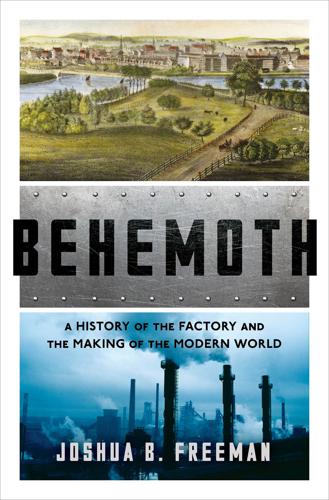
Behemoth: A History of the Factory and the Making of the Modern World
by
Joshua B. Freeman
Published 27 Feb 2018
However, it cost more to produce cotton yarn in Britain than in India and the quality was lower, too fragile to use as warp. And there was not enough of it; it took at least three spinners along with a few ancillary workers to keep one weaver (generally male) in yarn, meaning weavers often had to go beyond their own household for supplies, a problem exacerbated by the introduction of the flying shuttle in the 1730s, which greatly increased weaving productivity.16 Conditions were ripe for a radical change. Expanding fustian, hosiery, and cotton textile production ensured inventors and investors a payoff if they could increase the output, improve the quality, and lower the cost of cotton yarn.
…
See company housing and villages factory tourism, xii, 4, 20–22, 43, 69–70, 85, 135–36, 144–45, 151–52, 156, 159, 217, 310 Fair Labor Association, 271 Fairbairn, William, 17, 53 Fairfield shipyard (Baltimore, Maryland), 232 Fallows, James, 305 Female Labor Reform Associations, 67–68 FIAT, 136–37, 247, 314, 362n Figes, Orlando, 184 Filene, Edward, 119, 146–47, 182 filmmaking, 86, 136, 148, 159–61, 214, 216–17 fires and fire danger, 15, 17, 52, 76–77, 349n Firestone, 161, 164, 235–36 Fischer, Louis, 216 Fisher, Charles T., 155 Fisher Body, 137, 144, 155, 164–65 Fitch, John, 82, 95, 103, 109 Fitton, R. S., 15 Fitzpatrick, John, 114 Flagg, Edmund, 83 Flannery, Vaughn, 151–52 flax industry, 4–6, 15 Flextronics, 292 Flint, Michigan, 143–44, 164–66, 237, 314, 320 Flivver King, The (Sinclair), 147 flying shuttles, 6 Fontana, California, 232 footwear industry, 133, 273–74, 288–90, 289, 291–95, 298, 307, 309, 318 forced labor, 24–25, 203. See also slavery Ford, Edsel, 137, 153, 155–57, 159, 366n Ford, Henry, 118–19, 122, 124, 131, 138–41, 143, 147, 157, 159, 168, 174, 180, 186–87, 190–91, 319, 366n.
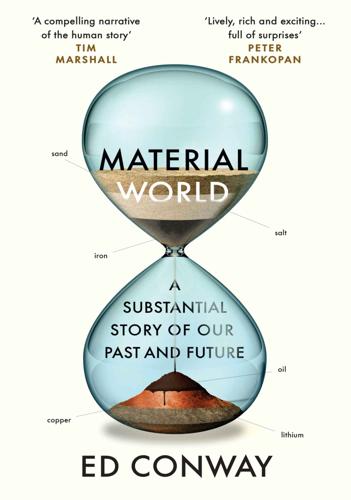
Material World: A Substantial Story of Our Past and Future
by
Ed Conway
Published 15 Jun 2023
These leaps of innovation, from the switch itself to the ‘integrated circuit’, the first of which was etched on to silicon by Robert Noyce at Fairchild Semiconductor in 1959, represented the physical foundation of the computing age. That word, physical, matters here. Sometimes innovations are the fruit of a simple brainwave. As historian Anton Howes has pointed out, there was no inherent reason why the flying shuttle – John Kay’s 1733 invention which revolutionised the weaving of wool – couldn’t have been produced thousands of years earlier. But often it takes decades or centuries of material advances before ideas can manifest as working contraptions. That was the case with Leonardo da Vinci’s sketches of a helicopter, which couldn’t become a physical reality until the materials caught up, and it was the case with computers, which were conceptualised by Ada Lovelace and Charles Babbage more than a century before the invention of the transistor.
…
Ltd) 13 , 402 , 406 , 407 , 408 , 409 , 410 , 421 caustic soda 152 , 153 , 190 , 263n CCS see carbon capture and storage celluloid 356 Celtic tribes/Celts 144 , 146–7 , 161 , 259 , 266 cement 9 , 41 , 71–2 , 73 , 75–9 , 84 , 100 , 115 , 340 and carbon emissions 81 , 82–5 Portland 75 , 80 , 83 , 84 , 85 see also concrete CFCs see chlorofluorocarbons Chalcolithic period 258 chalcopyrite 294 , 304 chalk 73 , 76 , 81 Challenger , HMS 291 , 292 , 301 Chañaral, Chile 273 Chance Brothers, Smethwick 48 , 52 , 55 Chang, Morris 108 , 116 charcoal 218 , 219 , 220 , 222 Charles I, of England 165 cheese/cheesemaking 128–9 , 131 , 132 , 134 , 190 , 353 chert 233 Cheshire fertiliser plants 10 salt industry 143 , 145–51 , 154–5 , 157 , 158–62 , 177 , 180 , 183 , 184 , 206 , 219 , 395 see also Imperial Chemical Industries Chevron (company) 309 Chile 371 , 391–3 , 396 copper production 259 , 261 , 288 , 301 ; see also Chuquicamata and deep-sea mining 301 iodine 176 lithium production 384 , 385 , 391–3 , 395 ; see also Salar de Atacama nitrates industry 170–73 , 174–6 , 393 saltpetre 175–6 , see also Saltpetre War see also Antofagasta China/Chinese 37 , 65 , 95 , 119 , 120 , 135–6 , 235 , 236 , 396 ballpoint pens manufacturing 229–30 battery production 406 , 407 , 409–10 , see also CATL coal-fired power stations 363 concrete 80 , 85 copper smelting and refining 261 , 267 , 269 and deep-sea mining 297 , 298 Discourse on Salt and Iron 137 , 191 electric cars 404 explosives 120 , 168 famine 205 Guanzi 136 iodine deficiency 137–8 iron and steel industry 203 , 205 , 207 , 213 , 217 , 218 , 229 , 231 , 244 , 247 lithium 385 plastic 359 recycling batteries 421–2 salt lakes 385 salt making 147 , 313 salt monopoly 135 , 136–8 saltpetre 164 and sand mining 69–70 silicon chip production 34 , 99 , 104–5 , 106 , 114–16 skyscrapers 78 , 79–80 , 234 smartphones 92 and USA 104 , 115 , 205 , 207 , 411 China National Salt Industry Corporation 138 Chincha Islands 165–7 , 172 , 275 , 298–9 chloralkali process 151–3 , 156 , 190 , 395 chlorine/chlorine gas 128 , 152 , 153 , 157 , 174 , 263n , 390 , 428 , 433 chlorofluorocarbons (CFCs) 318 , 341n chlorophyll 166 , 349 chloroquine 152 chromium 21 , 225 , 277–8 Chuquicamata, Chile 265–6 , 269–71 , 304 , 305 copper mine 171 , 266–7 , 268 , 269 , 270 , 271–2 , 273 , 274 , 280 , 281–3 , 284 , 285 , 288 , 294 , 304 , 305 , 327 tailings dam (Talabre) 272–3 Clarion-Clipperton Zone (Pacific Ocean) 293 , 294 , 298 , 302 Clayton, Pat 30 , 31 Cleopatra Beach, Anatolia 32 Cleveland Potash (company) 180–81 polyhalite mining 181–7 Climafuel 82 climate change 15 , 65 , 66 , 81–6 , 305 , 311 see also carbon emissions clingfilm 354 Club of Rome 276 , 294 The Limits to Growth 276 , 277 , 279–80 , 286 , 321 Clydach, Wales: nickel refinery 261 coal 15 , 16 , 20 , 22 , 82 , 196 , 198 , 215 , 216 , 219–22 , 228 , 268n , 317 , 319 , 334 , 363 , 434 coal-powered machinery 202 , 257 see also coke coal ships 219–20 cobalt 15 , 17 , 21 , 149 , 253 , 411 , 412 , 415–16 , 417 , 419 , 443 in batteries 408 , 409 , 416 sub-sea 293 , 294 , 300 Cochrane, Lord Thomas 265 Codelco (company) 13 , 270 , 283 coke/coking coal 95 , 215 , 219 , 220 , 222 , 311 , 353 , 433–4 needle coke 331–2 , 382 ovens 210 , 213 , 222 , 231 , 332 Colbert, Jean-Baptiste 139 Compass Minerals (company) 158 , 159 computer chips 8 , 90 , 91 , 93 , 107 , 116 , 118 , 203 , 230 , 411 Intel 90 , 112 see also silicon chips computers 9 , 34 , 37–8 , 90 , 91 , 117 , 119 , 274 , 426–7 concrete 6 , 8 , 40 , 41 , 67 , 71 , 72–4 , 75 , 77 , 78 , 79 , 80 , 377 , 425 , 429 , 442 and climate change 81–6 reinforced (‘rebar’) 81 , 198 Roman 75 , 85 , 340 and water 84 Concretene 84 Condori, Pamela 388–9 Confucius 137 , 275 Congo, Democratic Republic of 413–14 , 415 cobalt 149 , 293 , 294 , 415–16 copper 268 , 415 Kamoa-Kakula mine 304 Katanga mines 415–18 , 420 Union Minière du Haut-Katanga 415–18 uranium mine 415 Cook, Captain James 220 copper 7 , 15 , 16 , 17 , 18 , 170 , 171 , 182 , 243 , 253–4 , 258 , 277–8 , 279–80 , 287–9 , 303–5 , 373 , 377 , 416 , 417 , 429 , 437 , 441 and bronze 258–9 cathodes 267 and n , 284 , 285 , 392 ‘concentrate’ 267 and electricity 6 , 22 , 89 , 253 , 254–5 , 256–8 , 263 , 264 , 287–9 electrolysed 262–3 , 267n , 285 heap leaching 272 , 303 and magnets 254 mining 258 , 259 , see also Chuquicamata peak 280 , 285 , 294 recycled 420 reserves 285–6 resources 286 smelting and refining 260–61 , 267 sub-sea reserves 293 , 294 , 295 , 296 , 300 telephone wires 60 trade 259–61 in turbines 257 and waste 287 , 300 , 304 Copper Age 258 ‘Copper man’ 266 , 280 Corning (company) 8 , 9 , 59 , 61 Cornucopians 276 , 279 Cornwall: copper and tin mining 259 , 260 , 280 , 437 Corran ferry, Scotland 42 Corran Narrows, Scotland 57 Cort, Henry 220 Cortez gold mine, Nevada 1 , 2–5 , 13 , 267 , 269 , 272 COVID-19 8 , 9 , 20 , 91 , 211 , 319 , 358 Crete: salt 133 Crookes, Sir William 172 cucumbers, growing 346 cyanide 2 , 3 Cyprus 133 , 258 , 278 Czochralski, Jan 102n Czochralski (CZ) process 101–4 , 105 , 107 , 119 , 327 Damascus, Syria: swords 200 Darby, Abraham 220 Davy, Humphry 262 Debruyne, Stefan 391 deep-sea mining 292–303 , 420 deep-sea species 301 Deere, John 202 deforestation 81 , 131 , 147 , 205 , 218 , 247 , 248 , 275 , 293 , 311 , 315 detergents 152 , 153 , 354 Dharasana saltworks, India 142 diazomethane 350 diesel 331 , 345 dinosaurs 27 , 43 dishwasher salt 146 Dogger Bank/Doggerland 74 dolomite 215 , 233 Donetsk, Ukraine 206 Dorador, Cristina 392–3 Dow (company) 155 drugs/medicines/pharmaceuticals 1 , 8 , 9 , 56 , 127 , 150–51 , 152 , 155 , 156 , 176 , 179 , 190 , 191 , 238 , 334 , 344 , 345 , 357 , 376 , 428 , 429 , 440 Dubai 64 , 65 , 66 , 74 , 266 dyes 218 , 219 , 220 , 334 , 345 dynamite 168 East India Company, British 165 economics/economists 1 , 5 , 6–7 , 10–11 , 14 , 17 , 19–20 , 36 , 52 , 56 , 82 , 120 , 204 , 218n , 227–8 , 255 , 256 , 273–80 , 319–20 , 335 , 365 , 367 , 420 , 423 , 424 , 428 , 438–9 Economist, The 149–50 , 324 Edison, Thomas 76 , 77 , 262 , 263–4 , 279 , 288 , 377 , 378–9 , 380 Egyptians, ancient: mummification 312 Ehrlich, Paul 274 , 275 , 276–9 , 284 , 285 , 304 , 326 The Population Bomb 274–5 , 276 , 277 Eiffel, Gustav 200 , 201n Eiffel Tower, Paris 200–1 Einstein, Albert 21 Eisenhower, Dwight D. 336 electric vehicles (EVs) 400–1 see also cars, electric electricity 7 , 21 , 22 , 37 , 53 , 89 , 97 , 251–3 , 255–7 , 305 , 377–8 , 431 , 435 alternating currents 264 and copper 6 , 22 , 89 , 253 , 254–5 , 256–8 , 263 , 264 , 287–9 and light 255 and motors 21 , 256 and polyethylene insulation 351–3 sub-sea cables 434 see also batteries ; electric vehicles electrolysis 262–3 and n , 267n , 432 electromagnetism 151–2 , 254 , 262 electrowinning 284 , 303 Elkem (company) 96 Engels, Friedrich: The Communist Manifesto 276 engines, combustion 317–18 Enlightenment, the 37 epoxy resin 355–6 Epsom salts 178 Espindola, Christian 389 Esso 380 ethane 315 ethylene 344 , 351 , 357 , 358 EUV see extreme ultraviolet EV Group 119 Evans, Joe 145 , 146 EVs see electric vehicles explosives 168 , 169 , 170 , 173 , 188 extreme ultraviolet (EUV) light 112–14 , 116 , 442 ExxonMobil 380 Fairchild Semiconductor 89 , 112 Faraday, Michael 37 , 53 , 257 , 262 Fawcett, Eric 351 , 352 , 358 Ferrocarril de Antofagasta a Bolivia (FCAB) 163–4 Ferroglobe (company) 95 , 97 fertilisers 10 , 20 , 22 , 61 , 201 , 203 , 311 , 344 , 345 ammonia 188 , 432 caliche 375 , 430 green 432 , 434 guano 166–7 , 275 , 299 from natural gas 348–9 , 430 nitrate/nitrogen 166 , 170 , 172 , 173–4 , 176 , 275 , 299 , 348–9 polyhalite 181–2 , 187 potash 179 shortage of 180 fibre optics 7 , 8 , 425 fibreglass 8 , 248 , 356 Fiji 301 Finland concrete towers 83 copper mine 182 fish, deep-sea 301 flak jackets 354 flavourings 345 Fletcher, Seth 373 Floyd, George 414 fluorine 52 flux 39 , 56–7 , 153 , 190 , 215 , 429 Fontainebleau, France: silver sands 42 , 56 , 66 Ford, Henry 226–7 , 281 , 405 , 421 , 427 , 428 Model Ts 227 Forest of Dean 218n Förstemann, Robert 256 Forth Bridge, Scotland 200 , 201 ‘fossil deposits’ 68 fossil fuels 6 , 15 , 16 , 20 , 22 , 317 , 319 , 328 , 399 , 430 building with 433–4 see also coal ; oil ; gas , natural Foxconn (Hon Hai Technology Group) (company) 118 , 119 fracking 322–5 , 365 France 57 , 129 , 174 , 221–2 , 414 and deep-sea mining 298 , 301 and glass and optical aids 35 , 48 salt 130 , 138–9 , 140 , 147 , 154 Franz Ferdinand, Archduke of Austria 47 , 48 Friedland, Robert 253 , 304 Friedman, Milton 11 Fuding, China: battery factory see CATL fulgurites 31 Gait, Paul 284 Galápagos Rift 291 Galileo Galilei 36 Gandhi, Mohandas (‘Mahatma’) 140–42 , 147 , 155 Ganges, River 165 Gary, Indiana: US Steel 208 gas 198 , 257 , 313 liquefied 364 natural 7 , 10 , 22 , 313 , 315 , 318 , 321–2 , 348–9 , 363–7 , 429 , 430 , 434 gasoline see petrol GDP see gross domestic product GEM (company) 421–2 General Electric (company) 257 General Motors (GM) 340–41 , 407 generators 255 , 257 , 262 , 263 , 264 , 273 , 279 , 284 , 288 , 377 , 433 Genoa, Italy Giorgio Bridge 210 Morandi Bridge 81 geothermal plants 257 germanium 89 , 100 , 117 , 262 , 416 Germans/Germany 28–9 , 47 , 152 , 173 , 174 , 196 , 256 , 259 , 298 , 350 , 365 , 414 , 438 cement 76 , 77 coal 334 and explosives 173 , 174 and fertilisers 172–4 glass and optical devices 48–50 , 51 , 52 , 53 , 54 , 55–6 , 93 , 381 iron and steel 225 , 230 , 231 , 365 and oil 333 , 335–9 ; see also Wesseling potash production 56–7 , 180 salt 98 , 132 , 139 , 147 silicon chips 96 , 97–8 , 103 , 113 silver sands 42 Ghawar oil field, Saudi Arabia 314–17 , 320 , 321 , 322 , 323 , 324 , 325 , 326 , 329 , 358 , 362 , 364 , 366 Gibson, Reginald 351 , 352 , 358 Gigafactory Nevada 399–400 , 403–4 , 405 , 406–7 , 408 , 422 Gilf Kebir, Egypt: Palaeozoic sandstones 31 Glasgow 156 glass/glassmaking 8 , 9 , 21 , 31 , 35 , 36–7 , 46–7 , 51 , 52–3 , 54 , 127 , 219 , 426 , 429 , 440 borosilicate 8–9 , 11 , 48 fibreglass 8 flint (lead crystal) 53–4 and fluxes 39 , 56 , 153 , 190 , 215 , 429 German see under Germans/Germany inventing/making 38–41 lead borosilicate 53 Libyan desert 30 , 31 , 33 and lithium 376–7 and refractive indices 53–4 silica 59 and soda ash 154 soda-lime (crown) 39 , 54 stained-glass windows 39–40 structure of 39–40 and taxes 55 , 56 glasshouses/greenhouses 36 , 347–8 , 349–50 Global Battery Alliance 420–21 global warming 315 , 318 , 340 , 430–31 , see also greenhouse gases GM see General Motors gneiss 43 Goethe, Johann Wolfgang von 56 gold/gold mining 1–2 , 182 , 243 , 268n , 269 , 279–80 , 416 , 419 sub-sea 293 see also Cortez gold mine Goldman Sachs 253 Gondwana 94 Goodenough, John B. 381–2 , 383 , 408 Google 115 graphene 443 Graphene Engineering Innovation Centre, Manchester 84 graphite 353 , 382 , 409 , 411 , 433 , 434 Grasberg mine, New Guinea 283–4 gravel 8 , 73 , 74 , 94 , 198 Great Glen Fault, Scotland 42–3 , 57 Great Sand Sea, Sahara 28–30 , 31 , 66 meteor strike 27 , 30 , 43 , 59 greenhouse gases 19 , 81 , 161 , 204 , 217 , 311 , 385 , 399 , 435 greenhouses see glasshouses Gromort, Georges 71 gross domestic product (GDP) 7 , 14 , 16 , 52 , 88 , 197 , 203 , 224 , 439 Grozny oilfield, Russia 337 Guan Zhong 136 guano 166–7 , 275 , 299 Guano Islands Act (1856) 299 Guérande, the, France: salt 130n Guevara, Ernesto ‘Che’ 281 Guggenheim, Daniel 171 , 174 Guggenheim, Harry 171 Guggenheims, the 281 Guinea: iron ore 247 gunpowder 164 gunsights 46 , 47 , 48 , 50 gutta-percha 352 , 356 Haber, Fritz 173 , 174 , 334 Haber-Bosch process 173–4 , 176 , 188 , 204 , 275 , 342 , 351 , 430 , 432 , 438 Haiti: 2010 earthquake 80 halite 146 , 155 , 161 , 178 , 181 , 191 , 312 Hallein salt mine, Austria 144 , 161 , 266 Hamersley Range, Australia 235–7 , 238 Brockman 4 (mine) 238–40 see also Juukan Gorge Hancock, Lang 235–6 , 237 Haradh, Saudi Arabia 309–10 Harcourt, William Vernon 52–3 , 55 Hartcup, Guy 51 Haus, Reiner 96 , 106 Hawaii 32 , 130n Hawthorne, Nevada 410 , 412 heap leaching 272 , 303 hematite 234 , 236 , 238 , 247 Herbert, Frank 136 Herodotus 29 Heywood, Chris 158–9 , 160–61 Hicks, George 169 Highways England 126 Himalayan (Khewra) salt 130n , 144 , 182 Hinkley Point C, Somerset 257 hip replacements 354 Hitler, Adolf 335–6 , 337 , 339 Hittites: metalwork 199–200 , 217 Hoboken, Antwerp: Umicore 418–19 , 434 Hockney, David 37 Hooke, Robert 36 , 37 Hoover, President Herbert 224 Hoover Dam, Nevada 73 , 80 Hornsea One, North Sea 432 Hoshine (company) 104 Houthi rebels 363 Howes, Anton 89 Howland Island 299 Huan of Qi, Duke 136 Huáscar (ship) 170 Hughes, John James 206 Hula Hoops 353 Huxley, Aldous: Brave New World 188 , 432 Hyde, James Franklin 59 , 61 hydrothermal vents 15–16 , 292 , 315 , 316 , 365 see also coal ; oil ; gas hydroelectric dams 257 , 263 , 373 hydrogen 152 , 157 , 161 , 166 , 173 , 246 , 335 , 343 , 348 , 349 , 350 , 354 , 431–2 hydrogen chloride 98 , 120–21 , 190 , 428–9 , 442 hydrogenation 335 , 336 , 337–8 , 339 hydroponics 346–7 hydrothermal vents (‘black smokers’) 291 , 294 , 295n , 297 , 301 , 302 hypochlorite 153 Ibiza: saltmaking 130 , 133 , 376 IBM (company) 117–18 Ibn Saud, King Abdul Aziz 362 ICI see Imperial Chemical Industries IG Farben (company) 335 Imperial Chemical Industries (ICI) 151 , 155 , 184 , 187 , 188 , 335 , 351 , 352 , 353 , 357 , 358 , 426 , 432 IMS Nanofabrication 119 Incas 166 , 167 India salt production 139–42 saltpetre 165 ‘sand mafias’ 70 indium 443 Indonesia 10 , 66 , 66 , 221 , 267 , 283 , 293 industrial revolution 18 , 36 , 153 , 156 , 219 , 317 Ineos (company) 151 Inovyn (company) 151 insulation, electrical 351–3 , 356 Intel (company) 90 , 91 , 114 , 115 , 118 International Ocean Discovery Programme (IODP): Atlantis Massif mission 292 International Seabed Authority (ISA) 296–8 , 299 , 301 , 302 International Space Station 59 internet, the 7 , 8 , 37 , 59 , 60 , 115 , 211 iodates 168 iodine 137–8 , 176 iPhones 274 Iran 313 , 322 , 362 , 363 , 364 , 365 Iraq 313 iron/iron mining 15 , 16 , 17 , 20 , 22 , 46 , 67 , 99 , 125 , 137 , 156 , 195–8 , 199 , 200 and n , 201 , 203 , 205–6 , 213 , 217–21 , 243 , 278 cast iron 199 , 202 pig iron 199 , 215 , 216 and n , 218 , 220 , 222–3 wrought iron 199 , 200 , 201n , 228 see also Mariupol ; Port Talbot ; steel ; and below Iron Age 18 , 125 , 126 , 127 , 218 iron ores 184 , 198–9 , 206 , 208 , 210 , 216 , 232 , 235 , 245 , 246–7 , 261 , 268 and n , 271 , 278 , 281 , 439–40 see also Hamersley Range ; Juukan Gorge ; Pilbara iron oxide 44 , 73 , 130n , 216 irons, clothes 251–2 ironstone 177 , 188 , 234 , 238 , 239 , 241 , 244 Irwin, Edward Wood, Lord 141 ISA see International Seabed Authority Jackling, Daniel C. 281 Jadar valley, Serbia 386 jadarite 386 James Cook , RRS 290–91 , 292 , 298 Japan/Japanese 120 , 197 , 213 , 230 , 231 , 234 , 236 , 244 , 313 , 336 , 352 , 381 , 382 , 421 companies 58 , 101 , 266 , 383 , 400 , 401 , 404 , 406 Jefferson County, Texas: oil 312 ‘jelly rolls’ 402 , 408 , 409 , 427 jet 30 , 125 jet engines/jets 92 , 225 , 255 , 311 , 317 , 331 , 434 Jetti (company) 304 , 305 Jevons, William Stanley: ‘Jevons paradox’ 227–8 , 245 Joralemon, Ira 279 JSR (company) 119 Jutland, Battle of (1916) 52 Juukan Gorge, Australia 238–42 Kao, Sir Charles 59 , 60 , 61 Kay, John: flying shuttle 89 kelp 153 , 179 , 180 kerosene 312 , 317 , 329 , 331 , 434 Keynes, John Maynard 5 Khashoggi, Jamal 320 Khewra salt mine, Pakistan 144 see Himalayan salt kidney dialysis 155 Kieserite 178 kilns, rotary 76–7 Kiruna mine, Sweden 247 knee replacements 354 Komatsu (company): trucks 266–7 Korea, South 244 and deep-sea mining 298 electric cars 404 silicon-chip manufacturers 212 Kryptonite 386 Kryvyi Rih, Ukraine: magnetite 247 Kurlansky, Mark 133–4n Kuwait: oil 313 Kuznets, Simon 439 Kyiv, Ukraine: Olympic stadium 210 Laelianus, Emperor 126 Lam Research (company) 119 Laurasia a94 lead 3 , 273 , 340–42 , 418 learning curve, the 427–8 Leblanc, Nicolas 154 , 156 Leeuwenhoek, Antonie van 36 Leftwich, Cheshire 147 , 148 lenses 36 , 37 , 46 Leonardo da Vinci 37 helicopter sketches 90 Leopold II, king of the Belgians 413–14 , 416 Le Play, Frédéric 260 lettuces, growing 346 Leuna works, Germany 337 , 338 Lewisian gneiss 43 LG Chem (company) 401 Li Keqiang 229 Li-Cycle (company) 421 ‘Liberty Ships’ 229 Librium 152 light, electricity and 255 , 263 lightbulbs 263 , 264 , 429 lignite 334 limestone 39 , 73 , 76 , 81 , 82 , 84 , 85 , 154 , 219 limonite 234 Linto Crystal (company) 119 Lipetsk, Russia: high-rise blocks 83 Lippe, Germany: silver sands 42 lithium 8 , 17–19 , 22 , 52 , 170 , 188 , 189 , 243 , 244 , 372–3 , 376–7 , 411 , 437 extracting and refining 13 , 15 , 384–96 recycling 419 , 420 , 421 , 424 see also batteries ; Salar de Atacama lithium carbonate 396 , 412 lithium chloride 376 lithium cobalt oxide (LCO) 408 lithium ferro-phosphate (LFP) 408 lithium hydroxide 395 , 412 , 419 , 423 Liverpool 147–8 Lochaline, Scotland: silver sands 41 , 42 , 44–5 , 57–8 , 66 , 95 , 158 Lockheed Martin (company) 298 Lodge, Michael 298 , 302 London Canary Wharf 74 concrete 74 Hammersmith flyover 81 Millwall Iron Works 206 The Shard 210 Louis XIV, of France 139 Louis XVI, of France 154 Louvre Museum: pyramid 42 Lovelace, Ada 90 Lübeck, Germany 132 Lumumba, Patrice 417 Maastricht, Netherlands: silver sands 42 Macfarlane, Alan 37 Macron, Emmanuel 301 , 325 magnesium 53 , 181 , 372 , 375 , 385 , 390 magnesium chloride 178–9 magnetite 234 , 247 magnets 225 , 254 , 257 Magnitogorsk Iron and Steel Works, Russia 207–8 , 212 , 247 Maikop oilfield, Russia 337 Malaysia 51n , 65 , 118 , 231 , 352 , 356 Malé, the Maldives 65 Mallorca: saltmaking 130 , 133 Malthus, Thomas: Essay on the Principle of Population 275–6 Malthusians 276 , 279 manganese 15 , 196 , 411 , 419 adding to steel 225 , 227 , 228 in batteries 408 , 409 sub-sea 293 , 300 Mao Zedong 137 , 205 Marandoo mine, Australia 243 María Elena, Chile 171–2 Mariupol, Ukraine 83 , 209 , 210–11 Azovstal Iron and Steel works 195 , 196 , 199 , 208 , 209–10 , 211 , 212–13 , 222 , 247 Ilych steelworks 196 , 209 marlstone 145 , 146 Mars Bagnold Dunes 30 limonite 234 Martin, Gerry 37 mass-production 224 , 226 , 281 material flow analyses 16 medicines see drugs Mediterranean Sea 130 , 140 , 159 , 178 , 258 , 362 , 376 , 427 Mekong Delta 68–9 , 435 mercury 2 , 3 , 156 , 157 , 421 Merthyr Tydfil, Wales: ironworks 206 Mesabi Range, Minnesota 237 , 281 Metals Company, The 300 meteors 27 , 30 , 31 , 43 , 59 , 178 , 217 methane 315 , 346 Mexico lithium 392 oil 320 , 329 , 330 microscopes 36 , 91 Microsoft (company) 115 Mid-Atlantic Ridge 290–92 , 294–6 , 298 , 302 and the Lost City 292 , 302–3 Middlewich, Cheshire 147 , 148 , 158 Midgley, Thomas 340 , 341 Midway Atoll 299 Mikimoto, Kokichi 313 Milch, Field Marshal Erhard 337–8 Miller, Chris 116 Minerali Industriali (company) 58 mining schools 259 , 437 Ministro Hales copper mine, Chile 272 mirrors 36–7 Mitchell, George P. 321–3 , 324 Moe, Håvard 96 , 97 Mohammed bin Salman, Prince 320 Mol, Belgium: silver sands 42 molybdenum 53 , 113 , 225 , 272 Mongolia: Oyu Tolgoi mine 304 Moore, Gordon 90 , 112 Moore’s law 109 and n , 117 , 274 , 284 , 426 Morocco 68 , 179 Morton (company) 144–5 Morvern peninsula, Scotland 43–4 , 57 motors, electric 256 , 263 , 273 , 287 Mponeng gold mine, South Africa 182 Mull, Isle of 44 Murano glassmakers, Venice 35 , 40 Murton, Bram 292 , 295–6 , 301 Musk, Elon 399 , 400 , see also Tesla Mussolini, Benito 337 Na’aman, the 39 Naidu, Sarojini 142 nanotechnology 88 , 91 , 118 , 228 , 232 , 440 , 443 Nantwich, Cheshire 147 , 148 naphtha 357 Napoleon Bonaparte 139 Napoleonic Wars 35 natron 39 , 56–7 , 153 Nauru 300 Nautilus (company) 299–300 neodymium 21 , 253 Neolithic era 126–7 cheesemaking 128–9 salt making 127 , 128 , 129–31 , 134 , 144 , 155 neon 209 , 212 Netherlands 42 , 65 , 66 , 74 , 119 , 120 , 147 , 347 Neumann’s Flash, Cheshire 157 Newcomen, Thomas 221 Newton, Isaac 37 New York American Museum of Natural History 266 concrete 74 Corning 59 electricity 262 , 264 Gigafactory 399 Hudson Yards, Manhattan 210 New York State 132 , 144 , 148 , 157 , 399 New York Times 325 New Yorker 235 Niagara Falls: hydroelectric dam 263 Nicastro, Nof 347 , 349 Nicholas I, Tsar 148 , 158 , 206 nickel 17 , 53 , 253 , 261 , 273 , 277–8 , 411 , 412 , 419 adding to steel 225 in batteries 408 , 409 sub-sea 293 , 294 , 300 Niemeyer, Oscar 80 Nigeria oil 321 , 331 , 333 , 342 salt 134–5 Nikopol, Ukraine 196 niobium 117 , 225 nitrates 168 , 169 , 170–76 , 275 , 281 , 299 , 334 , 393 , 432 ammonium 241 potassium 164 sodium 168 synthetic 174 , 335 nitric acid 168 nitrogen 166 , 173–4 , 176 , 179 , 181 , 275 , 334 , 348 , 349 , 351 nitroglycerine 168 Nixon, President Richard 321 Nobel, Alfred 168 Nordhaus, William 255 , 263 North Carolina, pre-electric 252 North Field (natural gas) 364–5 Northvolt (company) 401 Northwich, Cheshire 147 , 148 , 154–5 , 426 Anderton Boat Lift 155 Noyce, Robert 89 , 112 NPK fertilisers 179 NSG (company) 58 nuclear contamination 230 nuclear mining 303 nuclear power stations 257 , 376 , 431 , 434 Nudds, Ally 45–6 Nvidia (company) 108 nylon 355 obsidian 30 , 31 Odisha, India: saltworks 140 O’Higgins, Bernardo 393 oil 15 , 16 , 17–19 , 22 , 179 , 198 , 279–80 , 363–8 , 430 barrels 329–30n crude 310 , 311–16 , 317 , 318 , 319 , 320–21 , 323 , 324 , 325–6 , 328 , 329 , 434 and green alternatives 342–3 and horizontal drilling 323 hydrogenation 334–5 , 337 Maya crude 329 Merey crude 329 octane rating 339 oil-powered machinery 202 peak 335 and salt domes 312–13 sweet/sour/light/heavy 329–32 see also Saudi Arabia oil refineries 327–9 , 330–32 , 345 , 360 see also Wesseling Old Marston salt mine, Cheshire 148 optical fibres 60–61 Ørsted, Hans Christian 262 Ostrogoths 133 oxygen converters 223 packaging 345 plastic 346 , 353–4 , 356 Palau 301 palladium 21 Palm Jumeirah, Dubai 74 Panama Canal 281 Panasonic (company) 400 , 401 , 402 , 404 , 405 , 407 , 408 , 409 Pangea 177 , 291 paper manufacture 152 , 153 , 190 Papua New Guinea 299–300 Parma, Italy 132 parrotfish excrement 32 Patton, General George S. 336 pearls 313 Pechmann, Hans von 350 Pedro de Valdivia, Chile 175 pencils 10–11 peppers, growing 346 periscopes 46 , 48 Permian Basin, Texas 324–5 Persian Gulf 313 see also Saudi Arabia Perth , HMAS 231 Peru/Peruvians 165 , 167 , 169 , 170 , 175 , 259 , 260 , 288 , 299 , 316 PET see polyethylene terephthalate petermen 165 petrochemicals 320 , 328 , 331 , 344 , 345 , 358 , 363 , 432 petrol/gasoline 319–20 , 331 , 334 , 336 , 345 lead 340–42 octane rating 339 , 340 Petty, William 276 , 439n pharmaceuticals see drugs Phillips Petroleum 353 Humber Refinery 331–2 , 382 Phoenicians 39 , 56–7 , 58 , 130 , 376 , 427 phosphorus 179 photolithography 111 photosynthesis 166 , 347 , 349 Pico Sacro, Spain 93–4 Pilbara, Australia 233–5 , 237 , 243 , 244 , 245 , 246 see also Juukan Gorge Pilkington (company) 58 Pinochet, Augusto 175 , 391 pipelines 76 , 210 , 225 , 318 , 362 , 364 Planté, Gaston 378 , 379 , 382 plastic bags 354 , 358 , 359–60 plastic bottles 354 , 355 , 360 plastic pipes 354 , 355 plastics 20 , 33 , 152 , 328 , 331 , 344 , 345 , 350–51 , 359–60 , 443 microplastics 359 recycling 360 thermosetting 356 thermoplastics 356 see also polyester ; polyethylene (polythene) ; polymers ; polypropylene ; vinyl platinum 21 Plato 275 Pliny the Elder 38 , 39 , 427 Ploiesti oil fields, Romania 337 ploughs 201–2 , 223 , 441 Poland deep-sea mining 302 , 303 salt mine 144 polyester 356 , 360 polyethylene (polythene) 350–55 , 356 , 358 , 359 , 426 , 435 polyethylene terephthalate (PET) 360 polyhalite 181–7 , 188 , 189 polymers 354–5 , 356 , 360 polymetallic nodules 292–3 , 294 , 295 , 297 , 300 polypropylene 355 polysilicon 97–9 , 100–2 , 104–5 , 120–21 polystyrene 355 polythene see polyethylene polyvinyl chloride (PVC) 152 , 355 Ponce Lerou, Julio 175 , 176 Port Hedland, Australia 244 Port Talbot, Wales: iron and steel industry 214–16 , 217 , 218 , 222 , 225–6 , 228 , 231–2 , 244 , 246 Portland cement 75 , 80 , 83 , 84 , 85 potash 56–7 , 179–80 , 182 , 187 , 376 potassium 179 , 372 , 375 , 376 , 390 potassium chloride 179 potassium nitrate 164 potters 219 power stations 95 , 98 , 198 , 210 , 257 , 262 , 263 , 264 , 288 , 443 see also nuclear power stations Prat, Arturo 170 , 265 preservatives 345 Prince of Wales , HMS 231 prisms, glass 36 , 37 Project SLOOP 303 propane 315 Prudhoe Bay, Alaska 320 Puutu Kunti Kurrama 238 , 239 , 240 , 241 , 242–3 PVC see polyvinyl chloride Pyrex 8 , 59 Qatar 345 , 363–5 Qualcomm (company) 108 , 118 Quantum processors 117 quartz 31 , 40 , 41 , 87 , 94–7 and Czochralski crucibles 105–7 Quartz Corp 106 quartzite 12 , 53 , 95 , 120 quicklime 82 Rackham, Oliver 218n radar systems 352–3 , 358 radionuclides 230 rails, train 198 , 201 , 225 , 234 , 244–5 Rankin, Maurice 187–8 , 189–90 Ras Laffan, Qatar 363–5 Ras Tanura, Saudi Arabia 361–3 Ravenscroft, George 35 , 53 , 207 Read, Leonard: ‘I, Pencil’ 10 , 11 recycling 245–6 , 360 , 419–23 , 424 Redcar steelworks 188 Redwood Materials (company) 421 Renaissance, the 36–7 Repulse , HMS 231 resins 345 , 420 , 433 rhodium 21 Rinehart, Gina 236 Río Grande, Chile 388 Rio Tinto (company) 236 , 237 , 238 , 239–43 , 247 , 259 , 386 Roberts, Field Marshal Frederick Roberts, 1st Earl 49 robots 111 , 113 , 226 , 274 , 404 Rockefeller, John D. 335 , 344 , 351 , 358 Rohlfs, Gerhard 28–9 , 30 Romans 38 , 54 , 125 , 126 , 133 , 340 concrete 75 , 85 , 340 copper and tin mining 259 , 284 roads 132 salt/salt making 127 , 132 , 135 , 136 , 146–7 , 155 Rommel, Field Marshal Erwin 336 Ronbay Technology (company) 408 Royal Air Force 338 , 339 , 352–3 Royal Navy copper bottoming ships 259–60 , 261 iron cladding ships 206 wooden ships and masts 218 Royal Society 148 rubber 50–51 Rugby: cement plant 76–7 , 82 Runcorn, Cheshire: salt making 151–2 , 153 Russia/Soviet Union 206 and deep-sea mining 297 , 298 invasion of Ukraine see Ukraine iron and steel industry 206 , 207–8 , 212 oil and gas 319 , 320 , 322 , 324 , 330 potash production 180 railway 208 Siberian gas 364 , 365 SABIC (company) 358 Sabón plant, Spain 95–7 Sahara, Western 68 , 179 Salar de Atacama, Chile 371–2 , 374–5 , 384 , 385 , 389 , 390 , 398 , 423–4 Salar de Uyuni, Bolivia 372 , 384–5 , 410 Salar del Carmen, Chile 393–5 salt/salt making 12 , 15 , 17–19 , 22 , 127–31 , 143–4 , 146 , 168n , 190–91 , 219 , 372 , 374–5 , 395 , 428–9 and chemicals/pharmaceuticals industry 150–51 , 152–3 , 155–6 , 191 in China 135–8 chloralkali process 151–3 , 156 and electrolysis 263n and flashes 157 fleur de sel 130 and n , 376 in France 138–9 for gritting roads 160–61 , 162 Himalayan (Khewra) 130n , 144 in India 139–41 and oil 312–13 routes and trade 131–5 solution mines 144–5 , 147 , 150 , 158–61 table (sodium chloride) 22 , 127 , 130n , 151 , 168 , 176 taxes 138–9 weaponisation of 135 see also saltpetre salt lakes 372 , 384 , 385 Salt Union, Cheshire 149–50 saltpetre 162 , 164–5 , 166 , 175 , 179 Saltpetre War/War of the Pacific (1879–83) 168–70 , 175 , 265 , 267 , 392 Salus 155 Salzach, River 98 Samsung (company) 114 Samurai sword makers 200 sand dunes 28 , 29–30 sands 7–8 , 15 , 16 , 17–19 , 21–2 , 31–3 , 62 , 66 , 70–71 , 198 , 435 building on 63–4 construction 73 , 74 , 85–6 ‘fossil deposits’ 68 and glass 30 , 35 , 38–41 , 42 , 46 , 71 quartz 44 , 57–8 , 87–8 , 120 and regulations 66–7 , 68 , 69 and rivers 68–9 silica/silver 41–2 , 71 , 153 , 219 , 220 ; see also Lochaline Santiago de Compostela, Spain 93 Sanyo (company) 401–2 Sardinia: salt 133 Saudi Arabia oil 309–10 , 313–15 , 316–17 , 318 , 320 , 321 , 324 , 325–6 , 329 see also Ras Tanura Savery, Thomas 221 Schleiden, Matthias Jakob: Das Salz 139 Schott, Otto 48 , 52 , 54 , 93 , 154 , 376–7 , 381 Science (journal) 277 , 280 Scott, Ridley: Blade Runner 328 seas 297 deep-sea mining 292–303 , 420 seaweeds 153 sedatives 152 SEH (US division of Shin-Etsu) 101 Seif dunes 29–30 semiconductors 9 , 89 , 91 , 92 , 100 , 209 ; see silicon chips Sermon on the Mount 63–4 Serrabal quartz mine, Spain 94–5 , 106 Shagang (company) 13 , 207 shale 177 , 233 , 322 , 323 , 330 , 360 Shanghai, China 234 , 399 Shaw, Steve 184–6 Sheffield steel 229 Shell oil refinery, Germany 343 Sherlock, Steve 125–7 , 128–9 , 130 , 131 , 177 Shetland Islands: salting cod 132 Shin-Etsu (company) 101 , 103 , 105 ships/shipbuilding 210 , 290 , 291 coal 220 container 51 , 440 and fuel 317 , 318 , 434 steel 228–9 , 231 VLCCs 361–2 , 440 see also Royal Navy Shockley, William 89 Shoshone people, Western 2 , 3 , 17 , 237 Sibelco (company) 105–6 Siemens process 98 , 100 , 121 , 190 silica (silicon dioxide) 31 , 32 , 33 , 34 , 38–9 , 95 see also sands , silica silicon 8 , 12 , 31 , 33 , 35 , 40 , 73 , 88–9 , 100 , 113 , 225 , 227 ; and see below silicon carbide 58 silicon chips (semiconductors) 8 , 9 , 11–12 , 17 , 21 , 34 , 88 , 93–7 , 117 , 127 , 190 , 212 , 274 , 425–6 , 442 silicon metal 95 , 96 , 97 , 98 , 433 silicon tetrachloride 59 Silicon Valley, California 92 silicon wafers 12 , 88 , 89 , 93 , 106 , 101 , 103 , 105–6 , 107 , 110–14 , 116–17 , 118 , 119 , 120 , 188 , 262 siltstone 177 , 233 silver 258 , 416 , 418 , 419 Simmons, Matt: Twilight in the Desert 325–6 Simon, Julian 274 , 275 , 276 , 277 , 278 , 279 , 326 Singapore 66 , 103 Sirius (company) 187 Skinningrove, North Yorkshire 93 , 131 skyscrapers 78 , 79–80 , 225 , 234 , 245 , 256 smartphones 12 , 33 , 34 , 88 , 90 , 91 , 92 , 117 , 244 , 332 , 383–4 batteries 353 , 381n , 383 , 402–3 smelting 97 , 217 , 218 , 219 , 258 , 260 , 261 , 267 , 422 , 433 , 440 , 442 SMIC (company) 114 Smil, Vaclav 98–9 Smith, Adam: The Wealth of Nations 428 soaps 152 , 153 soda ash 153–4 , 155 , 157 , 179 , 190 , 351 , 395 sodium 372 sodium bicarbonate 155 , 351 , 395 sodium chloride 127 , 134 , 150 , 168 and n , 174 , 175 , 178 , 374 , 375 ; see salt sodium hydroxide see caustic soda sodium nitrate 168 solar panels 15 , 104 , 190 , 257 , 288 , 319 , 373 , 399 , 409 , 427 , 436 recycling 420 Solidia (company) 85 Solvay, Ernest 156 Solvay process 154 , 179 Sony (company) 383 , 401 Soviet Union see Russia Space Shuttle 59 Sparks, Nevada 397–9 spectacles 36 spodumene (lithium aluminium silicate) mines 385 , 412 , 421 , 423 Spratly Islands 65 Spruce Pine mines, North Carolina 105–7 SQM (Sociedad Química y Minera de Chile) (company) 175–6 , 375 , 376 , 389 , 390 , 391 , 393–6 Stalin, Joseph 207–8 Standard Oil (company) 335 , 344 , 351 Standard Telecommunication Laboratories (STL) 59 , 60 , 61 Standard Telephones and Cables Ltd 60 steam engines 221 , 256 , 318 steam turbines 257 steel/steelworks 6 , 7 , 9 , 12 , 18 , 20 , 34 , 125 , 156 , 196–8 , 201 , 203–6 , 209 , 214 , 222–4 , 230 , 232 , 244 , 247–8 , 426 , 429 adding alloys 224–6 and car industry 226–8 carbon content 199 ‘direct reduced iron’ 246 green 245 , 246 , 247 , 432 Forth Bridge, Scotland 200 and greenhouse gas emissions 204 low-background 230–31 powdered 229 recycling 245–6 , 419–20 and shipbuilding 228–9 stainless 21 , 225 swords 199–200 tools and machinery 202 vacuum-moulded 229 ‘vanilla’ 224 , 228 see also Mariupol Steineke, Max 310 STL see Standard Telecommunication Laboratories stone(s) 15 , 16 , 19 , 73–4 ; see also gravel Straubel, J.
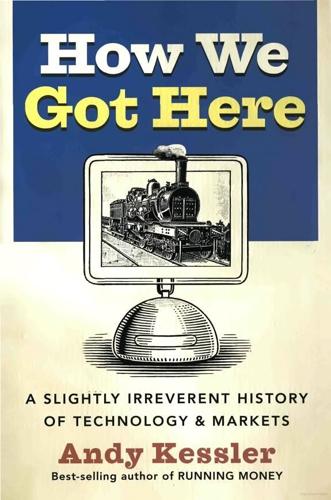
How We Got Here: A Slightly Irreverent History of Technology and Markets
by
Andy Kessler
Published 13 Jun 2005
Then you would move a sword to tighten the weft, and move the sword towards the other end of the warp to send the shuttle through the new shed. Got it? Makes steam engines sound simple. 30 HOW WE GOT HERE But looms are actually very simple but extremely labor intensive. A weaver must pay careful attention. In 1733, John Kay patented a wonderful device called the flying shuttle. The loom had a long box known as a shuttle race attached to it. With a set of cords rigged above the loom, a weaver could send the shuttle back and forth with ease, and with one hand, so with his other hand, he could control the thread or drink some tea. Foot pedals moved the warp up and down to create the shed.
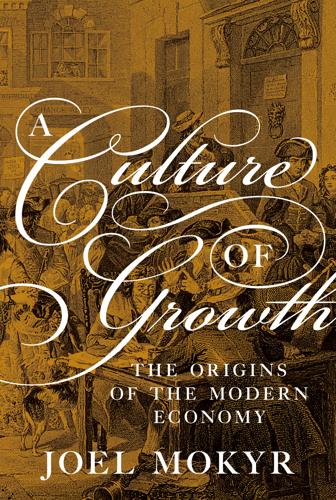
A Culture of Growth: The Origins of the Modern Economy
by
Joel Mokyr
Published 8 Jan 2016
As is often pointed out, the Industrial Revolution did not begin properly until seven or eight decades after the publication of Principia, though the traditional timing schedule tends to slight a substantial number of important technological breakthroughs that date before 1750, including coke smelting, crucible steelmaking, the early steam engines, and the flying shuttle. It is true that some of Newton’s followers were able to demonstrate his principles using mechanical devices. But, as Cardwell (1972) and others have noted, the dispute between the Newton measure of force (momentum, or mass times acceleration) and the Huygens-Leibniz notion of vis-viva (kinetic energy, or mass times velocity squared) was not altogether in Newton’s favor, as the vis-viva concept was more useful to engineers interested in mechanical work, duty, and efficiency (Henry, 2008, p. 113).
…
Sprat himself summarized many of the beliefs that Merton and others identify as “Puritan,” although he himself was a (non-Puritan) Anglican cleric. 9 The Industrial Revolution is supposed to have started in 1760 or so, but in fact the first half of the eighteenth century saw major technological advances in the introduction of new mining techniques (including of course Newcomen pumps), the use of coke in smelting, the flying shuttle, smallpox inoculation, and the crucible technique in steelmaking—among others. 10 Thomas Sprat, in his History of the Royal Society (1667, p. 403), noted that “[Natural] Philosophy is now admitted into our exchange, our Church, our Palaces, our Court [and] has begun to keep the best company … and become the Employment of the Rich and the Great.” 11 The project of reforming the obviously defective Julian calendar was one of the great successes of sixteenth-century mathematics and observational astronomy, but some non-Catholic nations, such as Britain, were reluctant to adopt the Gregorian Calendar because of its patently papal origin (Britain switched to the Gregorian calendar in 1752, more than a century and a half after its introduction in 1582).

Owning the Earth: The Transforming History of Land Ownership
by
Andro Linklater
Published 12 Nov 2013
The Marquis de Condorcet, a friend of Thomas Jefferson and a progressive thinker steeped in Locke’s writing, declared roundly “there is no connection between ownership of an invention and that of a field which can only be cultivated by one person.” A patent was a social arrangement created by society for its own good, and thus, “It is not a true right, it’s a privilege.” Once an invention was approved by the Académie des Sciences as beneficial to society, as in the case of the flying shuttle invented by the Englishman John Kaye, a cash prize and a limited monopoly or privilège exclusif would be awarded in exchange for training others to manufacture it. This system of state-sponsored innovation was clear cut and successful. In 1747, the French paid Kaye for his invention and awarded him a salary to teach its use to Normandy woollen weavers, while allowing him to retain for a short time a monopoly on its construction.
…
Richard Arkwright, who in 1775 built and patented a water-powered frame for carding cotton and spinning it into long, tough thread, spent an estimated £2,200 in four years in unsuccessful attempts to defend his patent. Despite winning some cases, John Kaye found that every woollen manufacturer who pirated his patented flying shuttle had banded together to fight his claims for compensation, until the expense forced him to give up. Even James Watt, the canniest of patent holders, worried constantly about whether the risk of allowing competitors to build variants of his improved steam engine, outweighed the danger, if he went to court, of the judge removing his numerous patents altogether because of their inadequate specifications.
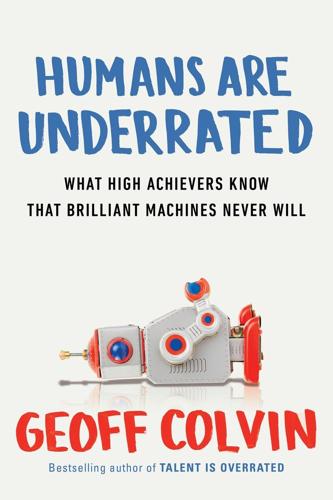
Humans Are Underrated: What High Achievers Know That Brilliant Machines Never Will
by
Geoff Colvin
Published 3 Aug 2015
After the royal slap down, the queen denied his patent, the hosiers’ guild campaigned against him, and he was forced to move to France, where he died in poverty. Some 150 years later, in the early dawn of the Industrial Revolution, an Englishman named John Kay revolutionized weaving by inventing the flying shuttle, which doubled productivity—surely a boon for weavers, who could now make twice as much cloth. Yet weavers campaigned against him, manufacturers conspired to violate his patents, and he was forced to move to France, where he died in poverty just like William Lee. Dying destitute in France seemed to be an occupational hazard for innovators.

12 Bytes: How We Got Here. Where We Might Go Next
by
Jeanette Winterson
Published 15 Mar 2021
* * * Ultimately – and Ada was right about this – the uniting link between the operations of matter and abstract mental processes is to reimagine – completely – what we call ‘real’. This reimagined ‘real’ will soon be what we call the world. A Loom with a View The brain is an enchanted loom where millions of flying shuttles weave dissolving patterns. Charles Sherrington, neurophysiologist and Nobel laureate, 1940 To understand the new journeys and destinations opening up to the human race, via emerging and developing AI, it’s helpful to think about how we arrived where we are now. The huge decisive changes in our world are the changes that began with industrialisation.
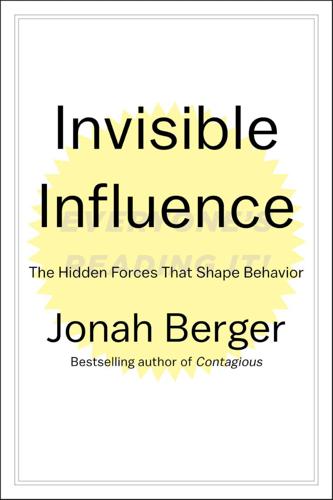
Invisible Influence: The Hidden Forces that Shape Behavior
by
Jonah Berger
Published 13 Jun 2016
Families spun their own cotton and flax and wove them together to make their own textiles. Given the difficulty of forming metal parts, any machines that did exist often used wooden components. Work was manual, hard, and often laborious. With the development of machine tools, the steam engine, and other technologies a slow, steady shift occurred. The flying shuttle, spinning jenny, and other tools allowed weaving to move out of the home and into larger, more dedicated factories. The cotton gin shrank a year’s worth of work into a week. Entrepreneurs began to nurture inventors to create new and more powerful machines. With these technological changes came a new social class.
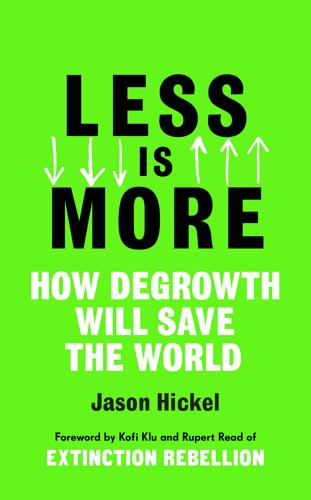
Less Is More: How Degrowth Will Save the World
by
Jason Hickel
Published 12 Aug 2020
Two Rise of the Juggernaut Capitalism can no more be ‘persuaded’ to limit growth than a human being can be ‘persuaded’ to stop breathing. Murray Bookchin I still remember when I first learned about the history of capitalism in school. It was a happy story that started with the invention of the steam engine in the eighteenth century and worked its way through a parade of technological innovations, from the flying shuttle all the way up to the personal computer. I remember marvelling at the glossy pictures in the textbook. As this story would have it, economic growth is like a fountain of money that springs forth from technology itself. It’s a wonderful tale, and it leaves us with the hopeful impression that with the right technology, we should be able to get growth more or less out of thin air.
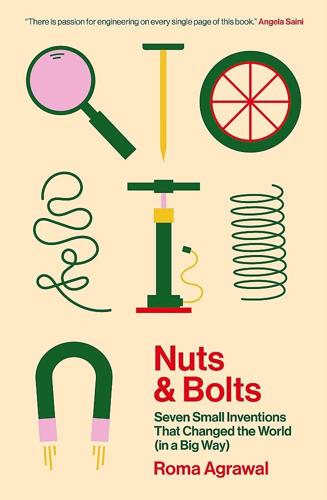
Nuts and Bolts: Seven Small Inventions That Changed the World (In a Big Way)
by
Roma Agrawal
Published 2 Mar 2023
So far, the whole process was carried out manually on a relatively small scale, with skills being passed down from one generation to the next. Then, the late sixteenth century saw the seeds of industrialisation planted with the invention of the stocking frame, a mechanical knitting machine. Development of such machines exploded in the West in the eighteenth century. The flying shuttle improved the looming technique to enable quicker weaving of cloth. The spinning jenny was the first machine to allow thread to be spun quickly and in quantity. Stronger threads for yarn could now be produced on spinning frames, and other inventions enabled greater control over the weaving process, automation of cleaning cotton fibres, and looms that could weave complex designs.
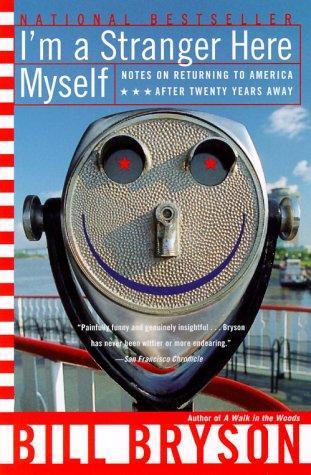
I'm a stranger here myself: notes on returning to America after twenty years away
by
Bill Bryson
Published 6 Jun 2000
Only saddlers could reliably provide the requisite durability, which is why so much early upholstered furniture was covered in leather. Fabric upholsterers also had the problem that many preindustrial fabrics could be produced only in widths of about twenty inches, creating a need for seams in awkward places. Only after the invention of the flying shuttle by John Kay in 1733 did it become possible to produce fabrics in widths of three feet or so. Improvements in textile and printing technologies transformed decorative possibilities beyond furniture as well. This was the age that saw the widespread introduction of carpets, wallpapers, and bright fabrics.

Wonderland: How Play Made the Modern World
by
Steven Johnson
Published 15 Nov 2016
Ironically, the fears that ladies’ fashion trends would undermine the British economy turned out to have it exactly backward. The immense value of the cotton trade had already set a generation of British inventors off in search of mechanical tools that could mass-produce cotton fabrics: beginning with John Kay’s flying shuttle, patented in 1733, followed several decades later by Richard Arkwright’s spinning (or water) frame, then Eli Whitney’s cotton gin, not to mention the endless refinements to the steam engine rolled out during the 1700s, many of which were originally designed to enhance textile production. (Steam engines would eventually power a wide range of industrial production and transportation, but their initial application was dominated by mining and textiles.)
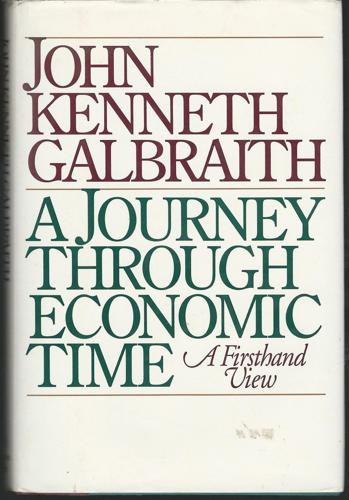
World Economy Since the Wars: A Personal View
by
John Kenneth Galbraith
Published 14 May 1994
Most important, in all the earlier stages of development there was no close and predictable correlation between the supply of educated men and the nature of their training and the rate of technological innovation. Inventions were more often the result of brilliant flashes of insight than the product of long prepared training and development. The Industrial Revolution in England was ushered in by the invention of the flying shuttle by John Kay, the spinning jenny by James Hargreaves, the spinning frame by (presumptively) Richard Arkwright and, of course, by James Watt's steam engine. These represented vast improvements in the capital which was being put to industrial use. But only in the case of Watt could the innovation be related to previous education and preparation.
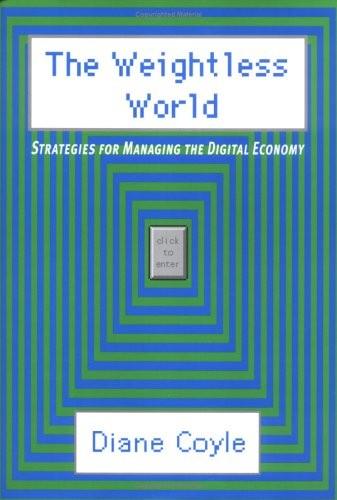
The Weightless World: Strategies for Managing the Digital Economy
by
Diane Coyle
Published 29 Oct 1998
The troops prevented that march from reaching the bigger industrial centres of Rochdale and Manchester, where it might have inflamed a serious insurrection. According to some estimates investment in the Manchester cotton mills had reached £20 million as early as 1816. The owners of capital had a lot at stake. The Lancashire inventors of the mule, Samuel Crompton, the spinning jenny, Richard Hargreaves, and the flying shuttle, John Kay, found themselves under personal attack. Kay had to flee the mob, Crompton was burnt out of his home. Jeremy Rifkin has launched no physical assaults on today’s equivalents of the cotton barons, men such as Microsoft’s Bill Gates, but he makes it clear that he thinks computers are to blame for depriving people of work.

The Fourth Age: Smart Robots, Conscious Computers, and the Future of Humanity
by
Byron Reese
Published 23 Apr 2018
In England, participants in the Swing Riots resisted automatic threshing machines by smashing them. Boatmen destroyed the first attempts at a steam engine, which they felt would put them out of work. So overwhelming was the protest against ribbon looms in Germany that they were ordered burned by the government. When the fly shuttle was invented to make weaving easier, its creator, John Kay, was attacked by a crowd. James Hargreaves, who created another breakthrough in textiles called the spinning jenny, saw his creation burned by yet another mob in England. John Heathcoat, who created technology to make the creation of lace more efficient, saw his entire factory and its equipment torched in broad daylight.
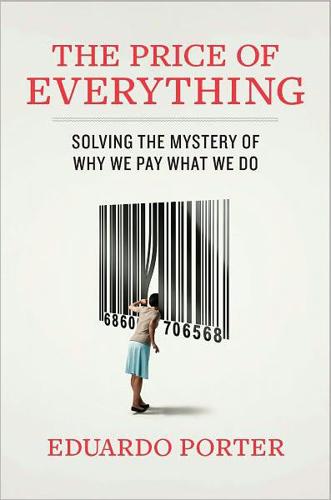
The Price of Everything: And the Hidden Logic of Value
by
Eduardo Porter
Published 4 Jan 2011
He made his predictions just as England and the rest of Europe were embarking upon a sustained period of unprecedented economic growth that would spread around the globe and drastically improve humanity’s wellbeing over the following two centuries. THE REVOLUTION IN productivity in Lancashire’s cotton industry started as early as the 1730s, with a series of new inventions to spin yarn, such as John Kay’s “flying shuttle,” and continued through the 1770s with inventions such as Samuel Crompton’s “spinning mule.” The yarn revolution was followed by a weaving breakthrough. By the late 1700s Britain was starting to transform from a mostly rural nation into an industrial power, exporting textiles and metals. Then the spread of the steam engine in the nineteenth century led the Industrial Revolution to its apogee.

Only Humans Need Apply: Winners and Losers in the Age of Smart Machines
by
Thomas H. Davenport
and
Julia Kirby
Published 23 May 2016
In fact, we can easily trace three eras of automation, based on the types of work they have brought machines forth to challenge. First, machines relieved humans of work that was manually exhausting and mentally enervating. This was the story of the late industrial revolution, which, having pulled all those workers off farms and into factories, proceeded to make most of them unnecessary with contraptions like the flying shuttle, the spinning jenny, and the power loom. And it’s a process that continues around the world. Consider Foxconn, the Chinese manufacturing subcontractor to global electronics brands like Apple. Starting in 2011, it started putting robots on the lines to perform welding, polishing, and such tasks—ten thousand of them that first year.
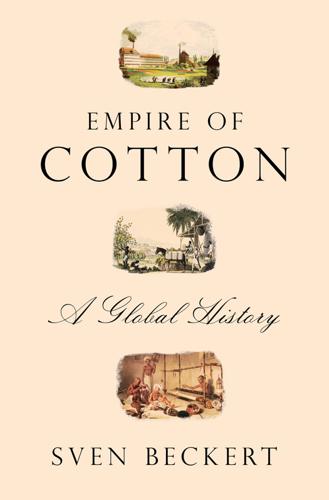
Empire of Cotton: A Global History
by
Sven Beckert
Published 2 Dec 2014
What British cotton capitalists needed was a dynamic combination of new technologies to lower costs, the further growth of elastic markets that already had begun to expand on the tails of British expansion, and a supportive state with the ability not just to protect global empire but to transform society in Britain itself.10 Since labor costs were the primary obstacle to grasping the new tantalizing opportunities, British merchants, inventors, and budding manufacturers—practical men all—focused on methods to increase the productivity of their high-cost labor. In the process, they effected the most momentous technological change in the history of cotton. Their first noteworthy innovation came in 1733 with John Kay’s invention of the flying shuttle. This small wooden tool in the shape of the hull of a ship allowed weavers to attach the weft thread and then propel it to “fly” from one side of the loom to the other through the warp threads. The shuttle doubled the productivity of weavers. At first it spread only slowly, but its spread was unstoppable: After 1745, despite resistance from weavers who feared for their livelihoods, it was widely adopted.11 This tiny piece of wood propelled in novel ways prompted a cascade of further innovations that would gradually but permanently change cotton manufacturing.
…
So effective was this wave of resistance, and so relatively limited the inexperienced state’s ability and willingness to protect its modernizing entrepreneurs, that some capitalists concluded that the path of least resistance was to limit the employment of new machines and instead focus on the production, however labor-intensive, of high-quality goods. The fear of popular uprising became a guiding star in the universe of French entrepreneurs.31 Such resistance also characterized the industrialization process in England. Already in the 1740s there had been riots against Kay’s flying shuttle, in 1753 there were attacks on “cotton reel” machines; in 1768–69 workers in Lancashire rioted against the introduction of the spinning jenny, and in 1779 Lancashire workers smashed various kinds of machinery. But machine breaking only became truly prevalent in the 1810s, a moment when the state was able and willing to use massive force to repress it.
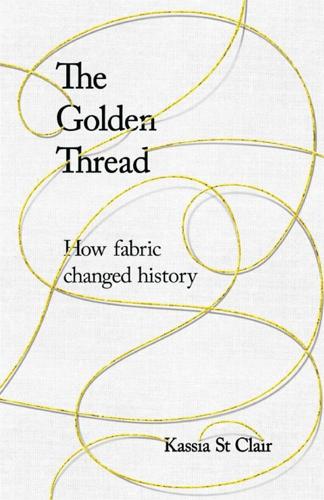
The Golden Thread: How Fabric Changed History
by
Kassia St Clair
Published 3 Oct 2018
Key to their eventual success was a steady stream of technological innovations that made spinning and weaving faster, more efficient and, crucially, cheaper, finally allowing them to compete with and eventually supersede Indian-made cotton textiles. An early example of such innovation was the flying shuttle, invented in 1733 by John Kay. This was a small, aerodynamic piece of wood that could be quickly propelled from one side of the loom – through the serried ranks of the warp – to the other, dragging the weft threads with it as it went. This increased the speed of weavers so dramatically, that afterwards it took four spinners to supply just one weaver.
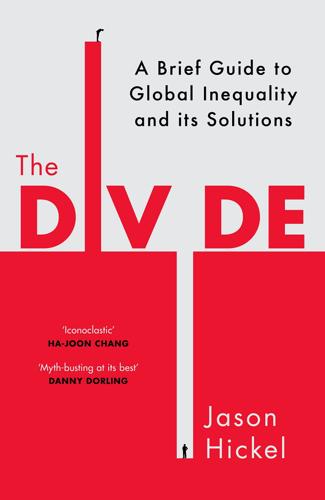
The Divide: A Brief Guide to Global Inequality and Its Solutions
by
Jason Hickel
Published 3 May 2017
How did a small number of countries in Western Europe become so much richer and more powerful than the rest of the world? The usual answer to these questions is the one we all learned in school. A series of technological innovations in Britain jump-started the Industrial Revolution that spread through Europe and the United States. The invention of the flying shuttle in 1733 made textile weaving much more efficient, and James Watt’s steam engine in 1781 made it possible to build large and powerful machines. Britain’s coal fields, which were usefully proximate to the large cities, provided cheap and abundant energy, and because the landscape was relatively flat it was easy to transport both coal and manufactured goods around the country via canals.
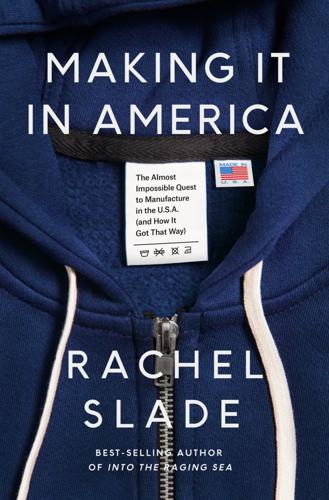
Making It in America: The Almost Impossible Quest to Manufacture in the U.S.A. (And How It Got That Way)
by
Rachel Slade
Published 9 Jan 2024
She wrote, “The purity of our forefathers taught simplicity of dress…they then had no ruffles, no ribbons…but all was neat and tidy.” While Crawford’s grandmother was carding wool day and night, the British were figuring out how to industrialize their own textile production. Englishman John Kay invented the flying shuttle in 1733, enabling weavers to work faster. In 1770, James Hargreaves received a patent for the spinning jenny—a multiple-spindle machine that semiautomated the task of hand-spinning wool into yarn, greatly increasing the speed at which material was produced. Five years later, Richard Arkwright patented the spinning frame, which spun yarn even faster.
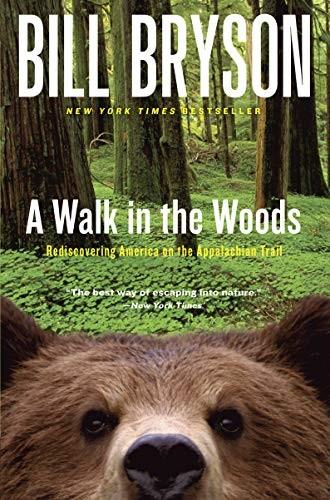
A Walk in the Woods: Rediscovering America on the Appalachian Trail
by
Bill Bryson
Published 8 Sep 2010
Only saddlers could reliably provide the requisite durability, which is why so much early upholstered furniture was covered in leather. Fabric upholsterers also had the problem that many preindustrial fabrics could be produced only in widths of about twenty inches, creating a need for seams in awkward places. Only after the invention of the flying shuttle by John Kay in 1733 did it become possible to produce fabrics in widths of three feet or so. Improvements in textile and printing technologies transformed decorative possibilities beyond furniture as well. This was the age that saw the widespread introduction of carpets, wallpapers, and bright fabrics.
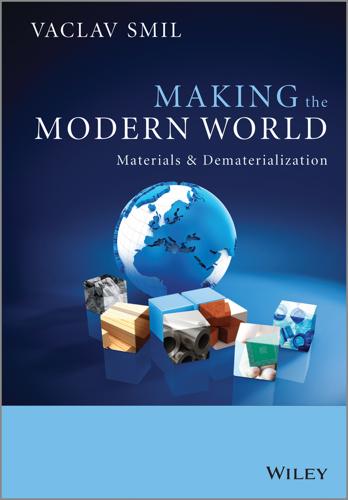
Making the Modern World: Materials and Dematerialization
by
Vaclav Smil
Published 16 Dec 2013
Vertical looms had been used since antiquity, and many traditional societies in Asia and America used portable body-tensioned looms. In either case weavers could produce cloth only as wide as their arm span and wider cloth required the cooperation of two weavers. This changed in 1733 with John Kay's invention of a flying shuttle that could be sent by flicks of the wrist from one end of the loom to another; the most important innovation allowing cheaper, mass-scale production of cloth came in 1785 with Edmund Cartwright's power loom (initially powered by steam). A no less important innovation was the response to imports of Indian printed cotton fabrics (calico, produced in Calicut since the eleventh century) to Europe.
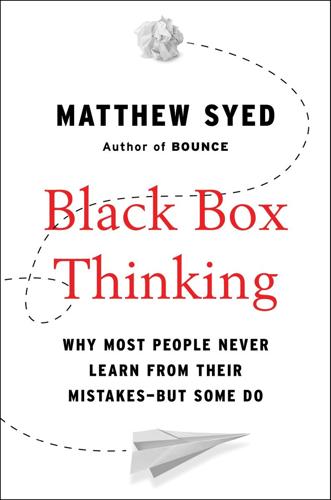
Black Box Thinking: Why Most People Never Learn From Their Mistakes--But Some Do
by
Matthew Syed
Published 3 Nov 2015
But there is a problem with the linear model: in most areas of human development, it severely underestimates the role of bottom-up testing and learning of the kind adopted by the Unilever biologists. In his book The Economic Laws of Scientific Research, Terence Kealey, a practicing scientist, debunks the conventional narrative surrounding the Industrial Revolution: In 1733, John Kay invented the flying shuttle, which mechanized weaving, and in 1770 James Hargreaves invented the spinning jenny, which as its name implies, mechanized spinning. These major developments in textile technology, as well as those of Wyatt and Paul (spinning frame, 1758), Arkwright (water frame, 1769), presaged the Industrial Revolution, yet they owed nothing to science; they were empirical developments based on the trial, error and experimentation of skilled craftsmen who were trying to improve the productivity, and so the profits, of their factories.5 Note the final sentence: these world-changing machines were developed, like Unilever’s nozzle, through trial and error.

The Evolution of Everything: How New Ideas Emerge
by
Matt Ridley
The discovery of the structure of DNA depended heavily on X-ray crystallography of biological molecules, a technique developed in the wool industry to try to improve textiles. And so on, through case after case. The mechanisation of the textile industry was at the very heart of the Industrial Revolution, with its jennies, frames, mules, flying shuttles and mills going down in history as milestones in the industrialisation of Lancashire and Yorkshire, leading to Britain’s sudden enrichment and power. Yet nowhere among the journeymen and entrepreneurs who drove these changes can you find even a hint of science. Much the same is true of mobile telephony in the late twentieth century.
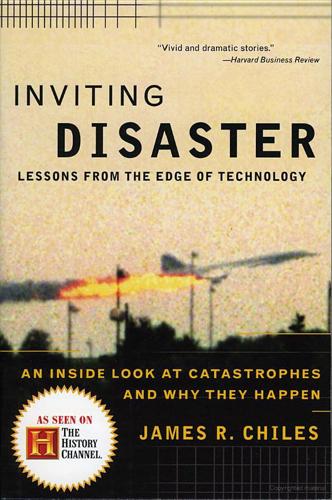
Inviting Disaster
by
James R. Chiles
Published 7 Jul 2008
And the slow and ambiguous response of the ballast controls made managing them very difficult once the rig left the familiar boundaries of civilized machine behavior. The next chapter explores the problem of machines whose critical workings were even more deeply hidden from the operators. 2: BLIND SPOT BAFFLED AND BEWILDERED INSIDE THE MASSIVE SYSTEM On January 8, 1989, a British Midlands 737 was flying shuttle service from London to Belfast. The captain and copilot heard a bang at twenty-nine thousand feet and felt the airframe shaking at a high frequency. These occurrences, in combination with the smell of overheated metal in the fresh air gathered by the engines’ compressor stage, made the captain and copilot suspect an engine problem.

In a Sunburned Country
by
Bill Bryson
Published 31 Aug 2000
Only saddlers could reliably provide the requisite durability, which is why so much early upholstered furniture was covered in leather. Fabric upholsterers also had the problem that many preindustrial fabrics could be produced only in widths of about twenty inches, creating a need for seams in awkward places. Only after the invention of the flying shuttle by John Kay in 1733 did it become possible to produce fabrics in widths of three feet or so. Improvements in textile and printing technologies transformed decorative possibilities beyond furniture as well. This was the age that saw the widespread introduction of carpets, wallpapers, and bright fabrics.

The Age of Spiritual Machines: When Computers Exceed Human Intelligence
by
Ray Kurzweil
Published 31 Dec 1998
This colonization spawned the emergence of a merchant class, a worldwide banking system, and early forms of intellectual property protection, including the patent. On May 26, 1733, the English Patent Office issued a patent to John Kay for his “New Engine for Opening and Dressing Wool.” This was good news, for he had plans to manufacture his “flying shuttle” and market it to the burgeoning English textile industry. Kay’s invention was a quick success, but he spent all of his profits on litigation, attempting in vain to enforce his patent. He died in poverty, never realizing that his innovation in the weaving of cloth represented the launching of the Industrial Revolution.
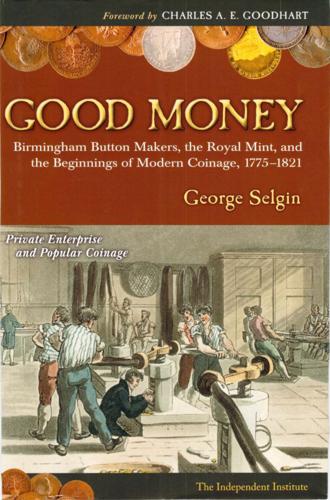
Good Money: Birmingham Button Makers, the Royal Mint, and the Beginnings of Modern Coinage, 1775-1821
by
George Anthony Selgin
Published 13 Jul 2008
That the Soho Mint was no exception is evident from a number of its commissions, including the halfpennies it struck for Lancaster coin collector Daniel Eccleston in 1794. Besides being "exceptionally massive and fine" (Bell 1963,82), Eccleston's tokens, which showed his bust on their obverse and a ship moored behind a plow and flying shuttle on their reverse, had unusually broad, legend-bearing raised rims that were to be incorporated into Boulton's first regal coins. 23 Fancier still than Eccleston's coins were the ones Soho made for Captain George Chapman's Penryn Volunteers, the last specimens of which were delivered just before Soho turned its attention to striking decidedly less ornate regal coins.
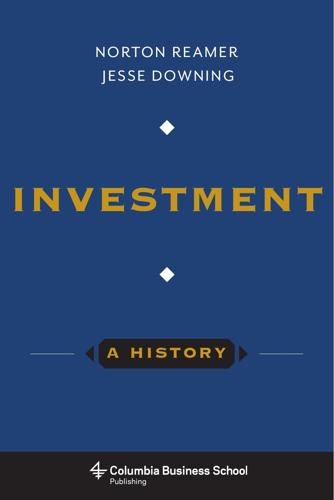
Investment: A History
by
Norton Reamer
and
Jesse Downing
Published 19 Feb 2016
For instance, Johannes Gutenberg’s revolutionary printing press of the fifteenth century clearly facilitated the diffusion of knowledge that made the Industrial Revolution—and its necessary technological innovations and inventions—possible in the first place. Among the other facilitating technologies of the Industrial Revolution was James Hargreaves’s spinning jenny, a spinning frame with multiple spindles that vastly increased production volume in the textile industry. Combined with the flying shuttle, the spinning jenny took the textile industry into the next competitive era. James Watt’s late eighteenth-century steam engine changed most industries using mechanical power, especially transportation and agriculture, quite significantly. The previous costs of producing this mechanical power, no matter the application, were generally higher than the costs of heating water to steam, and thus enormous cost savings were realized and industrial and transportation projects became more feasible.

More: The 10,000-Year Rise of the World Economy
by
Philip Coggan
Published 6 Feb 2020
There were many technological advances in mankind’s history before 1500, from control of fire through the wheel to the iron plough, the compass, and even eyeglasses. What has been unprecedented about the modern era has been the sheer number of innovations and the speed with which they have been spread. In part, this has been down to the self-reinforcing nature of these changes. For example, invention of the “flying shuttle” improved the productivity of weavers. That created the demand for more raw material in the form of spun thread. Sure enough, the spinning jenny, the water frame and the mechanical mule all emerged in the 1760s and 1770s, massively improving the productivity of spinners. As the efficiency of textile production improved, the price of finished goods fell and this increased demand for the product.

Good Economics for Hard Times: Better Answers to Our Biggest Problems
by
Abhijit V. Banerjee
and
Esther Duflo
Published 12 Nov 2019
Those were Hard Times indeed. We know that eventually there was a turnaround in the UK. Even as some workers lost their jobs, the labor-saving innovations raised profitability of other inputs, and hence the demand for workers producing them. Improvements in weaving technology, like John Kay’s flying shuttle, for example, increased demand for yarn, creating jobs for people to produce yarn. And the burgeoning wealth of those profiting from these innovations increased demand for new products and services in a range of sectors (more solicitors, accountants, engineers, bespoke tailors, gardeners, etc.), which created more jobs.
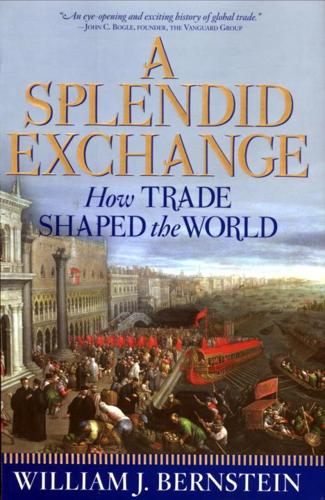
A Splendid Exchange: How Trade Shaped the World
by
William J. Bernstein
Published 5 May 2009
The wealth of Croesus awaited those who could bridge the gap between cheap raw cotton and the expensive, smooth, light cloth desired by consumers. High demand and high prices for calicoes, combined with the unavailability of Indian cloth, drove innovators to improve the spinning and weaving processes. Improve they did. Just a dozen years after the passage of the act of 1721, John Kay perfected the flying shuttle, which doubled weavers' productivity. This served to increase the demand for thread, whose spinning was more difficult to mechanize. In 1738, Lewis Paul and John Wyatt patented the first mechanical spinning machine, but no commercially feasible device became available until the mid-1760s, when such machines were invented by James Hargreaves, Richard Arkwright, and Samuel Crompton.

The Survival of the City: Human Flourishing in an Age of Isolation
by
Edward Glaeser
and
David Cutler
Published 14 Sep 2021
The combinations of private and public action that reduced the risk of illness from mass production and distribution in the nineteenth and twentieth centuries provide examples of how to lower the risks that cities face today. During the early Industrial Revolution, mechanical innovations like the flying shuttle, the water frame, and the spinning jenny revolutionized the manufacturing of fabric for clothing, one of humanity’s most basic needs. Those innovations meant a switch from labor to capital-intensive production and from weaving at home to working in large factories. The machines were expensive, and they became more efficient as industrial establishments grew larger.

Aerotropolis
by
John D. Kasarda
and
Greg Lindsay
Published 2 Jan 2009
The urban fabric of modern Hong Kong was knit following the end of China’s civil war in 1949, which sent two million refugees streaming across its border with little more than the shirts on their backs— appropriate, considering Shanghai’s fleeing capitalists underwrote its first textile factories. Textiles are the bottom rung of industrial economies. Britain’s woolen mills were the first to be mechanized in the eighteenth century by the flying shuttle and spinning jenny, and the first to be copied on cut-rate American looms. Hong Kong followed in their foot-steps until Deng’s Reform and Opening in 1978, when its reservoir of cheap labor was undercut by the bottomless one pooling in Shenzhen. The Delta was built with Hong Kong’s jobs and Hong Kong’s dollars.
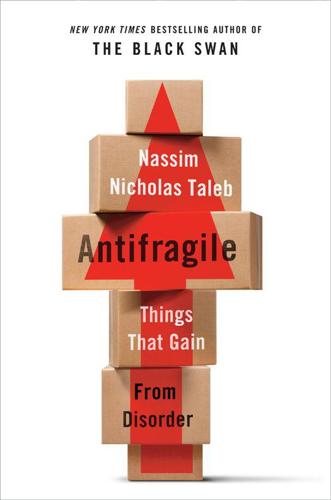
Antifragile: Things That Gain From Disorder
by
Nassim Nicholas Taleb
Published 27 Nov 2012
Kealey presents a convincing—very convincing—argument that the steam engine emerged from preexisting technology and was created by uneducated, often isolated men who applied practical common sense and intuition to address the mechanical problems that beset them, and whose solutions would yield obvious economic reward. Now, second, consider textile technologies. Again, the main technologies that led to the jump into the modern world owe, according to Kealey, nothing to science. “In 1733,” he writes, “John Kay invented the flying shuttle, which mechanized weaving, and in 1770 James Hargreaves invented the spinning jenny, which as its name implies, mechanized spinning. These major developments in textile technology, as well as those of Wyatt and Paul (spinning frame, 1758), Arkwright (water frame, 1769), presaged the Industrial Revolution, yet they owed nothing to science; they were empirical developments based on the trial, error, and experimentation of skilled craftsmen who were trying to improve the productivity, and so the profits, of their factories.”

Slouching Towards Utopia: An Economic History of the Twentieth Century
by
J. Bradford Delong
Published 6 Apr 2020
We feel that that process could have worked out differently, but we have no good way to conceptualize how that might have happened, or what the plausible range of different outcomes is. As the historian Anton Howes has pointed out, nearly any weaver for five thousand years before 1773 could have made his or her life much easier by inventing the flying shuttle. None did until John Kay, who had no deep knowledge and used no advanced materials, just, as Howes marveled, “two wooden boxes on either side to catch the shuttle… [and] a string, with a little handle called a picker.” Thus, he added, “Kay’s innovation was extraordinary in its simplicity.” By comparison, the research lab and the corporation were complex, and could have perhaps escaped humanity’s conceptual grasp.10 The labs and corporations needed accelerants if they were to spread and transform the world.
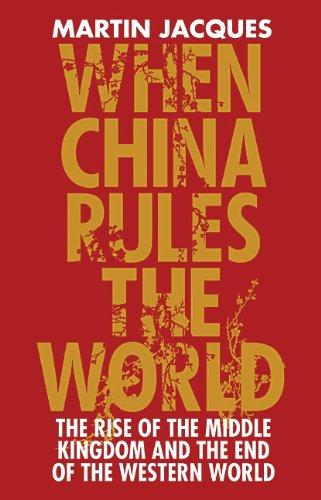
When China Rules the World: The End of the Western World and the Rise of the Middle Kingdom
by
Martin Jacques
Published 12 Nov 2009
Even in technology, there appears to have been little to choose between Europe and China, and in some fields, like irrigation, textile weaving and dyeing, medicine and porcelain manufacture, the Europeans were behind. China had long used textile machines that differed in only one key detail from the spinning jenny and the flying shuttle which were to power Britain’s textile-led Industrial Revolution. China had long been familiar with the steam engine and had developed various versions of it; compared with James Watt’s subsequent invention, the piston needed to turn the wheel rather than the other way round.6 What is certainly true, however, is that once Britain embarked on its Industrial Revolution, investment in capital- and energy-intensive processes rapidly raised productivity levels and created a virtuous circle of technology, innovation and growth that was able to draw on an ever-growing body of science in which Britain enjoyed a significant lead over China.7 For China, in contrast, its ‘industrious revolution’ did not prove the prelude to an industrial revolution.
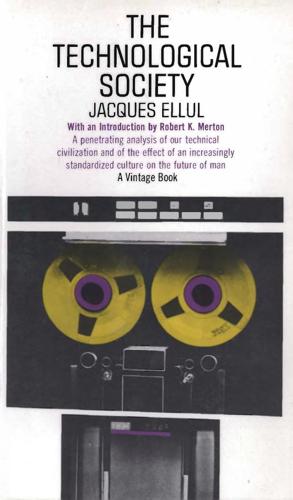
Ellul, Jacques-The Technological Society-Vintage Books (1964)
by
Unknown
Published 7 Jun 2012
Now we must consider the historical, necessary linking up of all the different techniques. This analysis will complete my discussion of these two characteristics. Machine technique appeared after 1750. The technical state of mind was first manifested in the application of the principles of science. We already know how this necessity arose ( it is emphasized in all textbooks). The flying shuttle of 1733 made a greater pro- 111) THE CHARACTEROLOCY OF TECHNIQUE duction of yarn necessary. But production was impossible without a suitable machine. The response to this dilemma was the invention of the spinning jenny by James Hargreaves. But then yarn was product*! in much greater quantities than could possibly be used by the weavers.
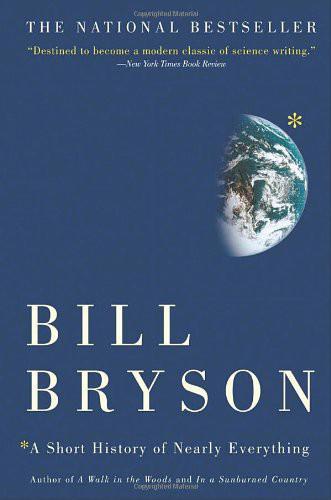
A Short History of Nearly Everything
by
Bill Bryson
Published 5 May 2003
Only saddlers could reliably provide the requisite durability, which is why so much early upholstered furniture was covered in leather. Fabric upholsterers also had the problem that many preindustrial fabrics could be produced only in widths of about twenty inches, creating a need for seams in awkward places. Only after the invention of the flying shuttle by John Kay in 1733 did it become possible to produce fabrics in widths of three feet or so. Improvements in textile and printing technologies transformed decorative possibilities beyond furniture as well. This was the age that saw the widespread introduction of carpets, wallpapers, and bright fabrics.
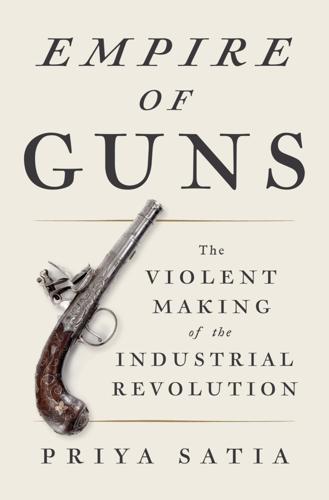
Empire of Guns
by
Priya Satia
Published 10 Apr 2018
The American war paid “rich dividends” to textile manufacturers in Yorkshire, Lancashire, and the West Country. War eased transformation in the cotton industry, too, quite apart from the Wyatt and Paul spinning machine. High employment rates during the Seven Years’ War dampened resentment of the introduction of the flying shuttle, which transformed weaving. The spinning jenny followed as output increased during the war. Farming benefited, too. The Navy Victualling Office was one of the nation’s largest purchasers of agricultural produce, structuring and integrating markets significantly with its bulk-goods transport system.
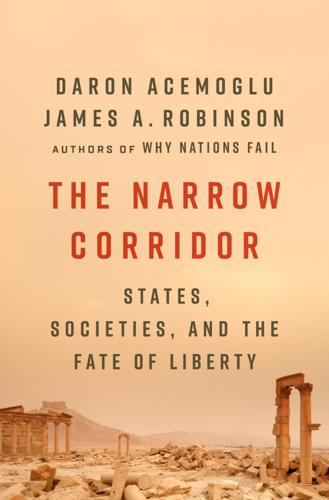
The Narrow Corridor: States, Societies, and the Fate of Liberty
by
Daron Acemoglu
and
James A. Robinson
Published 23 Sep 2019
In the course of a few decades, technology and the organization of production were transformed in a number of key industries. Leading the way were textiles, where a series of innovative breakthroughs in spinning, such as the water frame, the spinning jenny, and the mule revolutionized productivity. Similar innovations occurred in weaving, with the introduction of the flying shuttle and various types of power looms. Equally transformative were the novel forms of inanimate power starting with Thomas Newcomen’s atmospheric engine and then James Watt’s steam engine. The steam engine not only made mining much more productive by enabling the pumping of water out of mines, but also changed transportation and metallurgy.

Escape From Rome: The Failure of Empire and the Road to Prosperity
by
Walter Scheidel
Published 14 Oct 2019
This prompted a search among domestic manufacturers for ways of producing more and cheaper cotton cloth that was suitable for printing. In response, a series of innovations greatly increased productivity in spinning and weaving, first by raising output per worker and then, crucially, by introducing water-powered machinery. Between the 1730s and the 1770s, the flying shuttle and the spinning jenny were followed by the water frame and the spinning mule, which was perfected into a fully automated device in the 1820s. But it was earlier with Samuel Crompton’s invention of the mule that the Lancashire muslin industry took off from the 1780s onward.115 Interstate competition and interventionism also affected the British coal industry.

This Sceptred Isle
by
Christopher Lee
Published 19 Jan 2012
The moral crusade of the decade was reflected by Charles Wesley who had been preaching and writing what became a collection of 7,000 hymns, and his elder brother, John Wesley, the founder of Methodism, began his open-air evangelical crusade and would eventually preach 40,000 sermons. Small factories were being built and textile-makers were leading what one day would be known as the Industrial Revolution. John Kay invented his flying shuttle for weavers but reaped few rewards. There was still famine in Ireland; witchcraft in England was no longer a crime; and Handel finished his Messiah. At the time of the passing of the Gin Act, William Pitt was mourning the passing of a powerful ally, the Prince of Wales, in 1751. The man who would have been King on George II’s death would probably have guaranteed Pitt’s future.
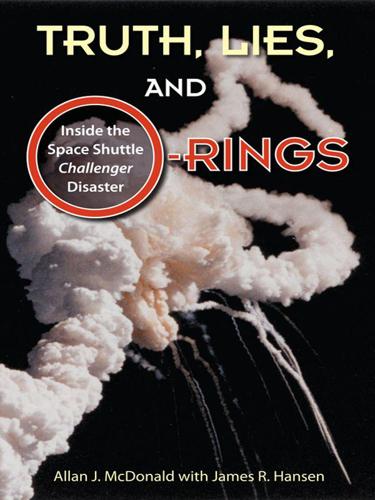
Truth, Lies, and O-Rings: Inside the Space Shuttle Challenger Disaster
by
Allan J McDonald
and
James R. Hansen
Published 25 Apr 2009
There are dozens of such problems which have been uncovered on the SRBs and the main engines and which none of the experts involved truly understand. Many of these have been glossed over simply because we were able to come up with a theoretical explanation which no one could disprove. We are flying shuttles based on the flawed management philosophy that if no one can prove the hardware will fail then we launch. And, we vote. It is understood that Lucas expects his board to vote for launch. In the twenty-five Center level flight readiness reviews that I have participated, never has there been a single negative vote from a Marshall board member or a Marshall contractor that we are not ready.
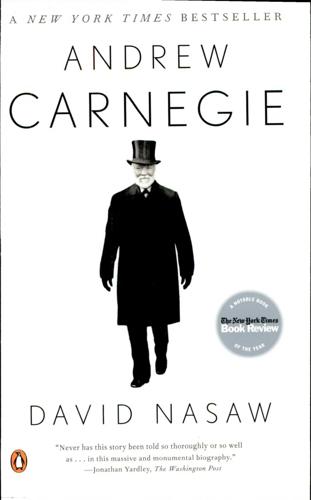
Andrew Carnegie
by
David Nasaw
Published 15 Nov 2007
Every weaver in town could recite the recent history of the trade: how James Blake, feigning idiocy, had crawled under a damask loom in Edinburgh to learn the secrets of its construction, memorized what he saw there, and returned to Dunfermline to build his own; how John Wilson of Bridge Street had introduced the flying shuttle, which made it possible for one man to work a loom by himself without need of helpers to position the shuttle; how in 1825 Alexander Robertson and Messrs R. and J. Kerr had imported the Jacquard machine, invented by Monsieur Jacquard, a weaver of Lyons. Before the invention of the Jacquard machine, the linen weavers had had to laboriously refit their looms for each new design.